- Merchandise

- On The Blerdar!
- Black Sci-Fi TV
Select Page


Written by William Satterwhite
July 22, 2016, featured | news.
From the very beginning, creator Gene Roddenberry’s vision for the world of Star Trek was an optimistic view of an Earth where humans had reached the pinnacle of understanding, a societal maturity where differences are not simply tolerated but embraced. A major part of this, from the very beginning, has been a diversity not only in major players but also supplementary characters. What follows here is a rundown of 10 non-starring black characters from the broad scope of the Star Trek universe who, each in their own way, represent the Star Trek vision.
Note- Only characters who are human or humanoid aliens virtually indistinguishable from humans were considered for this list.
Richard Daystrom

Imagine for a second a television show establishing that one of, if not the, most brilliant scientist in the world was a black man responsible for not just one, but two, of the greatest technological creations known to man. In 2016 with someone like Neil deGrasse Tyson well known as a foremost scientific mind this might not seem like a big deal but this isn’t 2016- this is March 1968; no one has ever seen Planet of the Apes , Lyndon Johnson is running for President, Robert Kennedy isn’t and both Dr. Martin Luther King Jr and Bobby Hutton are still alive (in less than a one full month all of these statements would be flipped).
Dr. Richard Daystrom, played by the legendary William Marshall, is introduced in season two of the original Star Trek series as creator of the computer system that helps run ships like the Enterprise and whose new system is capable of running a ship by itself, sans crew. While the latter creation doesn’t quite work out in the end, showing a black man as one of, if not the, greatest scientific mind in the world in the turbulent 60s was an obvious way to show Roddenberry’s dream for the future realized.

One of the few alien characters on this list, Guinan, portrayed by Whoopi Goldberg on Star Trek: The Next Generation , was an El-Aurian, a race of “listeners” scattered by The Borg. Serving as a bartender on the Enterprise, Guinan developed friendly relationships with many members of its senior staff, particularly Captain Picard. She also had great sense of style when it came to fabulous hats.
Captain Clark Terrell

In command of the starship Reliant in Star Trek II: The Wrath of Khan , Captain Terrell has the unfortunate luck of running into the vengeful Khan Noonien Singh. Simply described by his First Officer Chekov as a strong man, Terrell, played by the great Paul Winfield takes his own life instead of acting as as a pawn to take another’s.
Lily Sloane

Considered a legend in space exploration within the Star Trek mythos, Doctor Lily Sloane is another example of the Star Trek universe taking great care to show black scientific leaders playing a crucial role in the humanity’s reach for the stars. Played by Alfre Woodard in the Star Trek: The Next Generation film First Contact, Sloane is an aeronautical engineer who works on the development of the first warp drive on Earth.
Commodore Stone

Even before the original Star Trek series gave us a pioneering black scientist in it’s second season with with richard Daystrom, the first season episode “Court Martial” gave us another pioneering black Star Fleet official. In early 1967, the same year the United States Navy would see its first black Captain (Samuel L. Gravely, Jr., also to be the Navy’s first black admiral a few years later), classic actor Percy Rodriquez portrayed Commodore Stone, a top ranking Star Fleet officer who oversees the court martial of Captain Kirk.
Emory Erickson

Played by actor Bill Cobbs, Emory Erickson is another one of the Star Trek universe’s examples of great black scientists. Developer of the molecular transporter, Erickson appeared on Star Trek: Enterprise where he was shown to be something of a surrogate father to Captain Jonathan Archer, both having lost the corresponding figure in their lives.
Kasidy Yates-Sisko

As the name implies, Kasidy Yates-Sisko becomes the wife of Captain Benjamin Sisko on Star Trek: Deep Space Nine . Introduced by Sisko’s son Jake and portrayed by actress Penny Johnson, the multi-faceted relationship between Yates and Sisko is another example of Star Trek guiding the way in a world of sci-fi where fully developed relationships between a black and a black woman are few and far between.
Calvin Hudson

An old friend and Starfleet Academy classmate of Benjamin Sisko, Calvin Hudson was an experienced officer and leader who could inspire trust in his cohorts. Unfortunately that trust was misguided as Hudson, portrayed by Bernie Casey on Star Trek: Deep Space Nine , was a double agent working with the rebellious Maquis.
Captain Silva La Forge

While perhaps slightly more prevalent than black romantic relationships in the world of sci-fi, fully developed black familial relationships in sci-fi are unfortunately also a rare sight. With Geordi La Forge a key featured member of the Star Trek: The Next Generation crew, we are allowed to see the exploration of his family relationships and the stresses of being in a military/service type family as both his mother and father are members of Starfleet.
The mother Silva stands out as Captain of her own ship, though it is in this capacity that she becomes lost in action. Notably, this role was the fourth time that the late actress Madge Sinclair played the on-screen mother of LeVar Burton.

Another standout from the initial Star Trek run, Don Marshall’s Lt. Boma represented another example of Star Trek being bold in its portrayal of black characters in the 60s by being just that- bold- as he engages in an episode long back and forth with Spock as the latter suffers through a trial of leadership while rescuing Boma and his shipwrecked crew.
Shown to be a highly competent and forceful officer, Boma was actually intended to be a recurring character but scheduling conflicts served to rob this character of an even greater role in the annals of Star Trek lore.
William Satterwhite is the creator of the superhero webcomic Stealth and a freelance designer, internet consultant and illustrator living in Douglasville, Ga. His professional website can be found at www.williamsatterwhite.info .
Latest Posts

Related Articles
Related posts:.

Pin It on Pinterest

8 Strong Black Leads In The ‘Star Trek’ Universe
It's not just that these shows gave us black characters, but they are dynamic and complex., share the post, share this link via, or copy link.
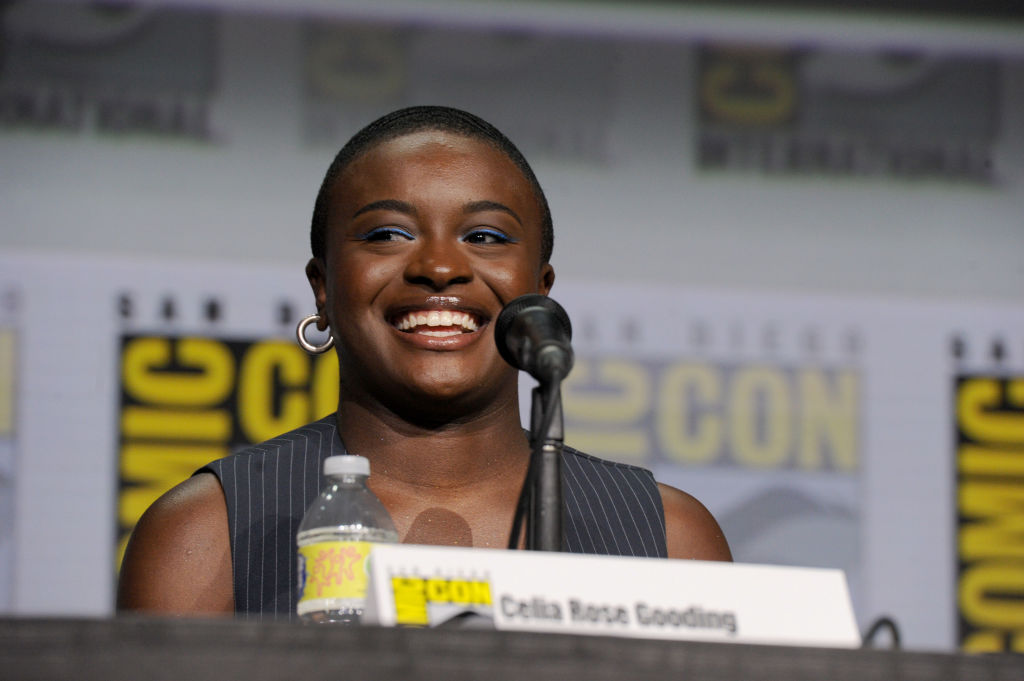
Celia Rose Gooding plays Cadet Nyota Uhura on “Star Trek: Strange New Worlds” Source: Albert L. Ortega / Getty
W hen Nichelle Nichols appeared on television screens in 1966 in “Star Trek: The Original Series,” she changed the trajectory of the American space program. Gracing the cover of Ebony in January 1967, the legacy magazine called Nichols the “most heavenly body” in the new science fiction series.
Her role as Lt. Commander Nyota Uhura left an impression on many, including my dad and uncle. Two little Black boys living in the Gowanus projects in Brooklyn, tuning into “Star Trek: The Original Series,” gave them a glimpse into the possibility of a new world beyond the concrete jungle they called home.
More: ‘Woman In Motion’ Nichelle Nichols Best Known As Star Trek’s Lt. Uhura Dies At 89
Fast forward 20 years plus one, my dad passed along his love of “Star Trek” to my brother and me. We faithfully watched “Star Trek: The Next Generation,” featuring the internet’s favorite uncle LeVar Burton as Lt. Commander Geordi La Forge. We devoured every episode of “The Next Generation” and later “Star Trek: Deep Space Nine.”
Star Trek’s strong Black leads offered complex portrayals, not forced representation
It’s not just that these shows gave us Black characters, but they are dynamic and complex. Newer iterations of “Star Trek ” provide even more robust storylines with diverse human and alien characters, making creator Gene Roddenberry’s vision come to life in previously unimaginable ways.
Each year it seems like some segments of various fandoms lose their minds with the introduction of strong Black characters. But this Trekkie is quite pleased to see rich storytelling led by characters who look like me.
Recognizing the importance of strong Black leads in the “Star Trek” universe felt particularly important on the first “Star Trek” Day after Nichols passed away . Through her work with NASA, Nichols paved the way for Black actors across the Star Trek universe and real-life astronauts. This year’s live stream event includes a special tribute to Nichols.
Celebrated each year on Sept. 8, Star Trek Day is an opportunity for fans to stream and engage with one of the most formidable franchises in science fiction history. The day marks the airing of the “Star Trek: The Original Series” pilot episode “The Man Trap.” Now 56 years later, the franchise spans movies, TV shows and animated series.
And while countless Black actors appear in “Star Trek” movies and animated series, including Dawnn Lewis, Paul Winfield, Alfred Woodard and Bernie Casey, this article is just focusing on the live-action series.
Here are eight phenomenal Black characters in the Star Trek Universe.
Nyota Uhura
Lt. Commander Nyota Uhura first graced the television screens across the country when “Star Trek: The Original Series” aired in 1966. Pioneered by Nichols, Uhura has been played by Zoe Saldaña in the rebooted “Star Trek” movies.
Celia Rose Gooding recently stepped into the role in “Star Trek: Strange New Worlds.” The 22-year-old Broadway actress shines as Cadet Nyota Uhura. Set ten years before the original series, the first season of “Star Trek: Strange New Worlds” digs deeper into Uhura’s earlier years.
Despite being a younger crew member, Uhura makes some outstanding contributions as she finds her way in Starfleet. Gooding takes Uhura’s brilliance to a whole new level. Did you know the character speaks 37 languages?
Dr. Joseph M’Benga
Booker Bradshaw originated the role of Dr. Joseph M’Benga in the original series. M’Benga takes on a more prominent role in “Star Trek: Strange New Worlds” and has a great story arc involving his daughter Rukiya. Babs Olusanmokun currently plays him .
Michael Burnham
Played by the fantastic Soniqua Martin-Green, Captain Michael Burnham is one of the most fascinating “Star Trek” characters. Burnham has a personal connection to the iconic Mr. Spock, which is explored in season two.
A central character in “Star Trek: Discovery,” Burnham’s backstory reveals her connection to two legendary “Star Trek” characters. Orphaned after a Klingon attack, Burnham is raised on Vulcan by Ambassador Sarek and his wife Amanda Grayson, making her Spock’s adopted older sister. She is not a traditional captain by any means, offering a complex example of a person in leadership with the fate of multiple worlds at stake.
Cleveland “Book” Booker V
Another great character from “Star Trek: Discovery,” Cleveland “Book” Booker V steps into the storyline after a significant shift in the series. Played by David Ajala, Book is an empathic marauder for the greater good, righting wrongs and always ready to throw down for a good fight. He and Captain Burnham develop a strong bond throughout season three, which is put to the test in this most recent season.
Joann Owosekun
Lt. Commander Joann Owosekun is another member of the excellent “Star Trek: Discover” cast. She is a fierce fighter in hand-to-hand combat, with a fantastic ability to hold her breath for an extended period.
The Sisko Family
Captain Benjamin Sisko and his family deserve an article all of their own. But for the sake of this list, they are grouped here as the Sisko family. We first meet then Commander Benjamin Sisko and his adolescent son Jake in “Star Trek: Deep Space Nine.”
Avery Brooks has played many roles, but Captain Sisko will forever remain one of my favorites. Brooks’ brought a new flavor to Starfleet, often cooking homemade meals for his son, partner and other crew members. Captain Sisko’s family-oriented character gave us special appearances from the late Brock Peters as his father, Joseph Sisko. The elder Sisko ran a creole restaurant in 24th-century New Orleans and had no problem making his son and grandson help out when they were back on earth.

Source: Ron Galella / Getty
Captain Sisko’s nurturing relationship with his son Jake, and the positive depiction of Black fatherhood , often stand out as well. Jake, played by Cirroc Lofton, respected his father greatly and wanted to see him happy. This led to his playing matchmaker with a freighter captain, Kasidy Yates, played by Penny Johnson Jerald.
Between home-cooked meals and family baseball games, the Sisko family is the “Star Trek” gift that keeps on giving. But don’t get it twisted. Captain Sisko is one of the fiercest —and arguably the best—captain in the “Star Trek” universe. Brooks’s acting was superb throughout the series, but his monologue at the end of “In the Pale Moonlight” is a masterclass.
Geordi La Forge
LeVar Burton was already a household name from his role in “Reading Rainbow” when he stepped into the shoes of Lt. Commander Geordi La Forge on “Star Trek: The Next Generation.” An engineering whiz, La Forge eventually becomes chief engineer of the Enterprise under Captain Jean-Luc Picard. Born blind, La Forge wore a special visor that enabled him to see. In later movies, his visor is upgraded to special ocular implants.
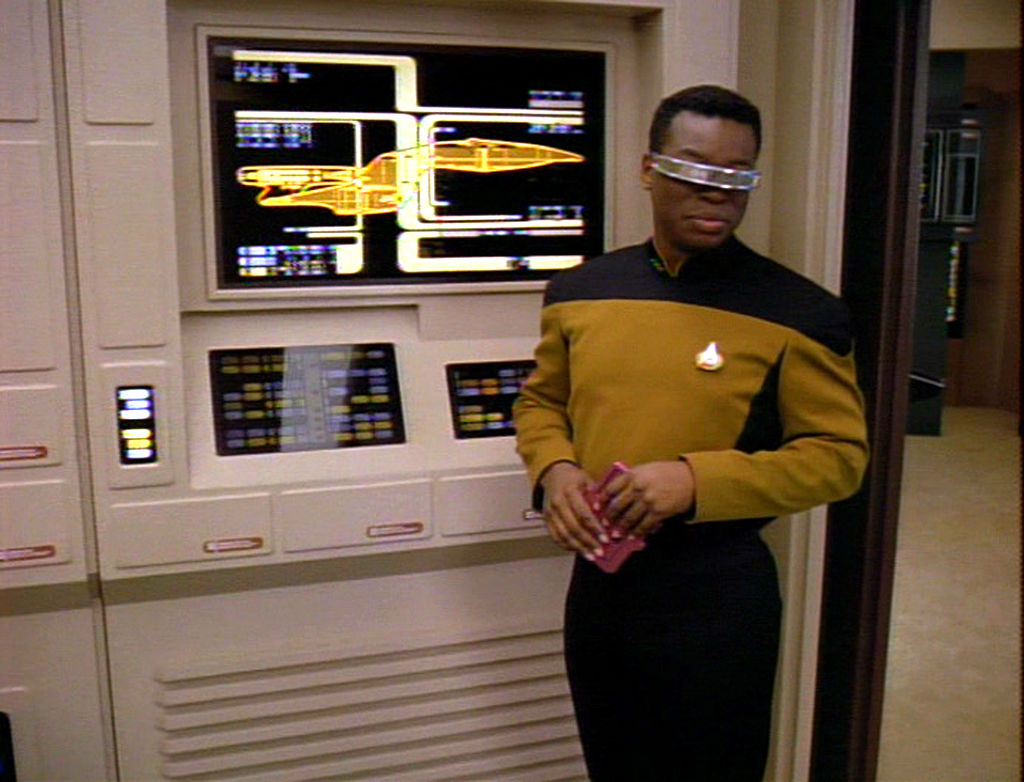
Source: CBS Photo Archive / Getty
Worf, son of Mogh
Actor Michael Dorn had the honor of playing the first Klingon in Starfleet’s history. During the original series, the Klingon Empire was a nemesis of the Federation. By the time “Star Trek: The Next Generation” airs, Klingons and the Federation have maintained a certain level of peace. Lt. Commander Worf, son of Mogh, was orphaned after the Khitomer massacre and raised by a human couple.
Worf struggles with his place between his human companions in the Federation and his longing to be revered as a Klingon warrior by his peers. His character is all about duty and honor. But Worf’s idealism around Klingon virtues like honor also put him in conflict with the actualities of political life in his home world.
He later serves on Deep Space Nine under the command of Captain Sisko, where the Klingon officer really shines. Worf also has a lot of family strife, including issues with his younger brother Kurn played by “Candyman” actor Tony Todd. During his time on the Enterprise, he learns he has a son named Alexander, who is one-quarter human. Worf isn’t given the opportunity to be a father, opting to send his son to live with his adoptive parents. Both Alexander’s mother and his wife, Jadzia Dax, are murdered.
Worf’s house is disgraced at various points because he has no desire to play political games and believes in the sanctity of Klingon honor. He later becomes a member of the House of Martok, having served alongside General Martok while stationed at Deep Space Nine.
Black TV Characters That Need Their Own Spin-Off Projects
Podcast’ Adulting with Michelle Buteau and Jordan Carlos’ Explores Life Through Humor And Good Conversations
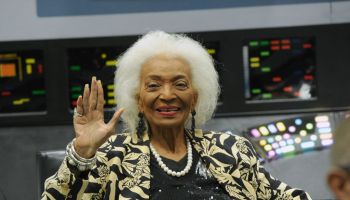
RELATED TAGS

Dr. Ebony Butler Addresses The Lack Of Black Therapists And Managing Pain

Dr. Tosha Rogers Talks Black Health, Pain Relief And Why We Need Culturally Competent Doctors
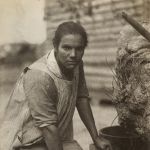
History Of The Melungeons: The Forgotten Tribe Of Appalachia
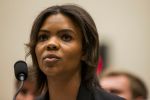
The Candace Owens Interview With The Breakfast Club: She Got The Whole Swamp In Her Head
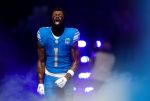
Where Is Cameron Sutton? What We Know About NFL Player On The Run After Domestic Abuse Warrant
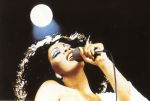
Top 10 Disco Divas Of All Time

Mississippi Cop Kills Fleeing Black Teen By Running Over Him With Police Cruiser, Ben Crump Says

Where Are Jakiel And Jaliel Shakur? How Twin Boys Went Missing From Boston
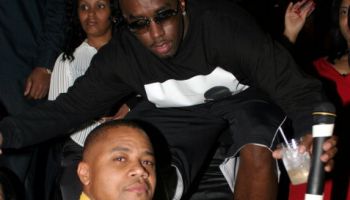
Cuba Gooding Jr. Named As Diddy’s Co-Defendant In ‘Grooming’ Lawsuit
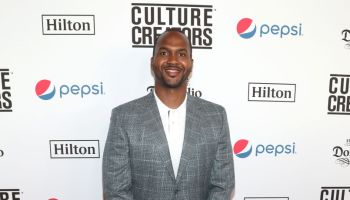
Van Lathan Breaks His Silence After TMZ Fires Him For Argument With Conservative Staffer

Federal Prosecutor Whose Office Is Investigating Diddy Previously Took Down R. Kelly
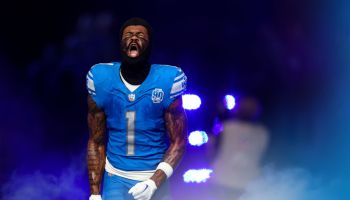
Tennessee State University Hosts Protests After Governor Strips HBCU Of Its Board Of Trustees
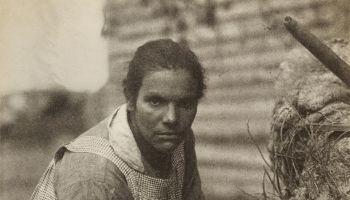
After Delays, Dr. Umar Johnson ‘Finally’ Sets An Opening Date For His School For Black Boys
Sign up for the newsone newsletter.
We care about your data. See our privacy policy .
Quick Links

Black Characters in Star Trek

Calling Up Justice is celebrating Black characters in Sar Trek! Star Trek has always been at the forefront of representation and diversity in popular culture, and the franchise has introduced a number of notable black characters over the years. From Lieutenant Uhura, the communications officer aboard the USS Enterprise in the original series, to Michael Burnham, the protagonist of Star Trek: Discovery, these characters have brought unique perspectives and added depth to the Star Trek universe. This list of Black Star Trek characters is a testament to the franchise’s commitment to representation, and celebrates the diverse range of experiences and stories that have been brought to life on screen.
- Lieutenant Nyota Uhura , played by Nichelle Nichols, in the original Star Trek series and subsequent movies.
- Commodore Stone , played by Percy Rodriguez, in the original Star Trek series episode “Court Martial.”
- Lieutenant Boma , played by Don Marshall, in the original Star Trek series episode “The Galileo Seven.”
- Lieutenant Shea , played by Carl Byrd, in the original Star Trek series episode “The Trouble with Tribbles.”
- Doctor Joseph M’Benga Played by: Booker Bradshaw, in the original Star Trek series
- Dr. Richard Daystrom, played by William Marshall , in the original Star Trek series episode “The Ultimate Computer.”
- Captain Terrell, played by Paul Winfield , in Star Trek II: The Wrath of Khan.
- The Captain of the Saratoga , played by Madge Sinclair, in Star Trek IV: The Voyage Home.
- Worf played by Michael Dorn, in Star Trek: The Next Generation.
- Geordi LaForge played by Levar Burton, in Star Trek: The Next Generation.
- Captain Silva, played by Madge Sinclair , in Star Trek: The Next Generation.
- Guinan , played by Whoopi Goldberg and Isis J. Jones, in Star Trek: The Next Generation.
- Commander Edward M. La Forge , MD, played by Ben Vereen, in Star Trek: The Next Generation.
- Captain Tryla Scott , played by Ursaline Bryant, in the Star Trek: The Next Generation episode “Conspiracy.”
- Fleet Admiral Cartwright Played by: Brock Peters , in the Star Trek: The Next Generation episode “Conspiracy.”
- Kurn , played by Tony Todd, in Star Trek: The Next Generation and Star Trek: Deep Space Nine.
- Captain Benjamin Sisko , played by Avery Brooks, in Star Trek: Deep Space Nine.
- Kasidy Yates-Sisko , played by Penny Johnson Jerald, in Star Trek: Deep Space Nine.
- Jake Sisko , played by Cirroc Lofton, in Star Trek: Deep Space Nine.
- Captain Calvin Hudson , played by Bernie Casey, in Star Trek: Deep Space Nine.
- Joseph Sisko Played by: Brock Peters, in Star Trek: Deep Space Nine.
- Jennifer “Jen” Sisko Played by: Felecia M. Bell, in Star Trek: Deep Space Nine.
- Julian Bashir Played by: Alexander Siddig, in Star Trek: Deep Space Nine.
- Tuvak played by Tim Russ in Star Trek Voyager
- Travis Mayweather , played by Anthony Montgomery, in Star Trek: Enterprise.
- Rianna Mayweather , played by Joan Pringle, in Star Trek: Enterprise.
- Dr. Lily Sloane, played by Alfre Woodard , in Star Trek: First Contact.
- Lieutenant Michael Burnham , played by Sonequa Martin-Green, in Star Trek: Discovery.
- Joann Owosekun played by Oyin Oladejo in Discovery
- Doctor Gabrielle Burnham , played by Sonja Sohn, in Star Trek: Discovery.
- Book , played by David Ajala, in Star Trek: Discovery.
- Guinan, played by Ito Aghayere , in season 2 of Star Trek: Picard.
- Ensign Sidney La Forge , played by Ashlei Sharpe Chestnut, in Star Trek: Picard.
- Lieutenant Nyota Uhura, played by Celia Rose Gooding , in Star Trek: Strange New Worlds.
- Joseph M’Benga , played by Babs Olusanmokun, in Star Trek: Strange New Worlds.
- Claudia Alick
- March 3, 2023
Search Calling Up Justice
Connect & support.
Get email updates from Calling Up Justice:
GET INVOLVED
INTERSECTION FOR THE ARTS
Copyright © 2023 Calling Up! • Site Design by MULTO.com
Calling Up Justice is fiscally sponsored by Intersection for the Arts, a 501(c)(3) nonprofit organization, which allows us to offer you tax deductions for your contributions. Please make checks payable to Intersection for the Arts, and write “Calling Up Justice” in the memo line. This ensures that you’ll receive an acknowledgement letter for tax purposes, and your donation will be available for our project.
Live Long and Prosper: A Celebration of Our Favorite Black Star Trek Characters
To celebrate star trek day, we’re highlighting the franchise’s most notable black characters..
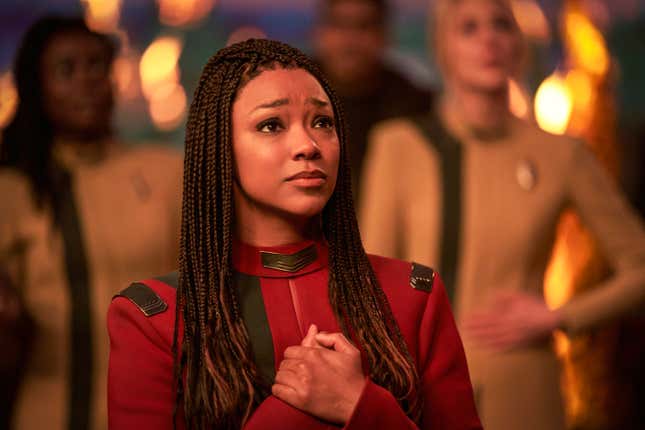
Star Trek is one of the most beloved franchises in entertainment. From the moment The Original Series premiered in 1966, we were captivated by the USS Enterprise, its crew and the inner workings of Starfleet. As the universe expanded, it featured groundbreaking representation for Black characters. We’ve seen pioneering scientists, trailblazing explorers, inspiring ship captains, and mysterious time-bending aliens. As we celebrate Star Trek Day, let’s give some well deserved flowers to our favorite Black characters.
Lt. Uhura (The Original Series)
Any celebration of Black Star Trek characters must begin with Nichelle Nichols’ Lt. Uhura. There are Black women thriving as scientists, astronauts, pilots and doctors because of Nichols and Uhura.
Capt. Benjamin Sisko
Avery Brooks’ Sisko had a magnetism that made you feel like you would 100 percent follow him into battle. He had an elegant way of making the small moments feel just as important and impactful as the huge battles. Deep Space Nine’s different take on a Star Trek arc would not have worked as well with another person in command.
Lt. Commander Worf
Yes, I know he’s a Klingon. However, we are not about to celebrate Black Star Trek characters without honoring Michael Dorn’s exceptional work. The way he evolved Worf from a one note warrior to a compassionate friend and romantic husband was beautiful. He deserves all the glory the Klingon Empire has to offer.
Lt. Commander Geordi LaForge
Though he reaches the rank of Commodore, I want to talk about the Geordi that was Chief Engineer of the Enterprise in The Next Generation. He was a stone cold genius who had an answer for nearly every problem. LeVar Burton’s kindness was always evident in how La Forge loved his friends and would do anything to protect them and the Enterprise.
Dr. Richard Daystrom
As the creator of the computer system that runs the Enterprise and other advanced systems, we can safely say there would be no Starfleet without Dr. Richard Daystrom. In his short appearance, he left us desperate to know more about the scientists’s struggles. With new series expanding on the original timeline, this is a character we need to see get a deeper story.
No matter what timeline she’s in, or what wise words she’s imparting on us, Guinan is endlessly fascinating. The more we learn about her, the less we know. It’s hard to find a more perfectly cast character than Whoopi Goldberg as Guinan.
Capt. Michael Burnham
What makes Burnham so awesome is that she’s consistently defying Starfleet’s orders because she knows they’re kinda bullshit most of the time. She’s no one’s puppet and she refuses to apologize for that.
Ensign Travis Mayweather
Travis’ skills and loyalty are unquestioned, but he really became a legend when we got to meet the Mirror Universe version of him. He’s a badass who’s only concerned with his own ambitions. I wish we’d got a little more of that in the main Enterprise character.
Cadet Uhura
Strange New Worlds ’ Celia Rose Gooding simultaneously delivers a Uhura the audience knows from years of fandom, while also making the character fresh for a new audience. We get glimpses of the Uhura we know will dominate Starfleet, but it’s also clear she’s still learning her place on the ship and in the universe.
Dr. M’Benga
Doctors who are also warriors isn’t a new concept in the Star Trek universe, but M’Benga is a certified badass who is the Enterprise crew’s secret weapon. Every time we learn another one of his mysterious secrets, it makes us like him more. I need a buddy comedy of him and Chapel on various adventures.
Dr. Lily Sloane
Sure Zefram Cochrane gets all the credit for the first warp flight, but we all know Alfre Woodard’s Lily Sloane was probably doing a big chunk of the work. She showed how valuable she was while helping Picard fight the Borg, so you know she carried Cochrane’s drunk ass most of the time.
Emory Erickson
Inventor of the transporter, Emory Erickson is a man driven by tragedy and guilt. The brilliant Bill Cobbs portrayed him as someone who remembered a less idyllic Earth and never lost sight of the true mission of space exploration.
Lt. Commander Tuvok
Tuvok was Capt. Janeway’s best friend and most trusted advisor. As a Black Vulcan on a ship of humans, we often identified with his journey to keep his culture alive.
Lt. Uhura (Star Trek Kelvin Timeline)
Zoe Saldaña’s Uhura may be set in a different timeline than the others, but she perfectly fills the gap between the Cadet we meet in Strange New Worlds and the Lieutenant we know and love from The Original Series . She’s a leader who has no time for male egos and prideful Vulcans.
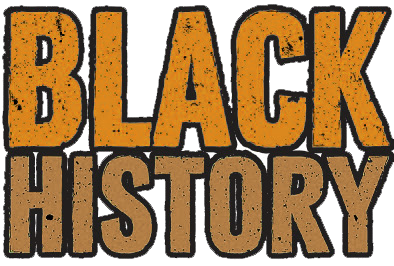
- Organizations & Projects
- Museums & Cultural Centers
‘Star Trek’ Makes History With First Ever Black Female Director
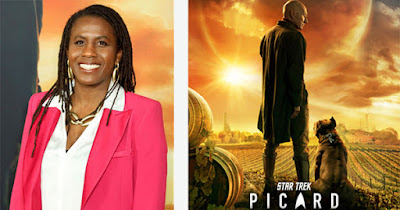
Star Trek has always had a diverse cast from George Takei who is Japanese and Nichelle Nichols who is African-American. And, now, the popular TV series has Hanelle Culpepper, its first Black female director in the franchise's history of more than 50 years.
Later, she worked as an assistant to a couple of established directors and then for the Sundance Institute. She was also in the prestigious American Film Institute and was selected by NBC’s diversity program. Culpepper’s big break came when she was offered to direct an episode of Parenthood starring Robert Townsend and then 90210 , both of which aired in 2012. She later directed various episodes of other TV shows including Criminal Minds , The Flash , Gotham , and more, and even was nominated for an Image Award for Outstanding Directing for a Drama Series in 2015.
The path she has traveled has led her to make history as the director of several episodes of Star Trek: Picard , which features Sir Patrick Stewart reprising his iconic role as Jean-Luc Picard.
Get Black History in Your Email:

Did Colonel Sanders Steal His KFC Recipe From a Black Woman Named Miss Childress?

The Truth About Black People and Country Music — We Created It!

The Real Betty Boop Was a Black Woman... Before She Was Whitewashed!

Martin Luther King, Jr. Was Arrested 29 Times For These So-Called Crimes

Black Woman Who is Deaf and Blind Graduates From Harvard Law School

Kenny AKA 'Bud' From ‘The Cosby Show' is Now 44 Years Old and a Cancer Survivor

What Did Jesus Look Like?

8 Famous Black Talk Show Hosts You Should Know

Meet the Black Architect Who Helped Design Washington, DC

Meet the Black Inventor Who Created the First Digital Cell Phone
Black history directory.
- Aviation & Space
- Business & Inventions
- Civil Rights
- Criminal Justice
- Education & Politics
- Film & TV
- Food & Beverages
- Health & Science
- History & Exploration
- Music & Arts
- Public Service
- Sports & Entertainment
- Writing & Publishing
Most Popular Posts:

Beethoven, the Most Famous Classical Musician of All Time, Was... a Black Man!

Black Kings (and Queens) Ruled Parts of Europe For Almost 700 Years
You may also like:.

Ron from "A Different World," Now 60, Has Been Dating Vanessa From "Cosby" For 30 Years
Also check out:, menu footer widget.
How Star Trek Fell Short of Its Ideals About Diversity
The landmark series is lauded for changing what was possible for actors of color—but all too often, they felt like "moveable furniture."
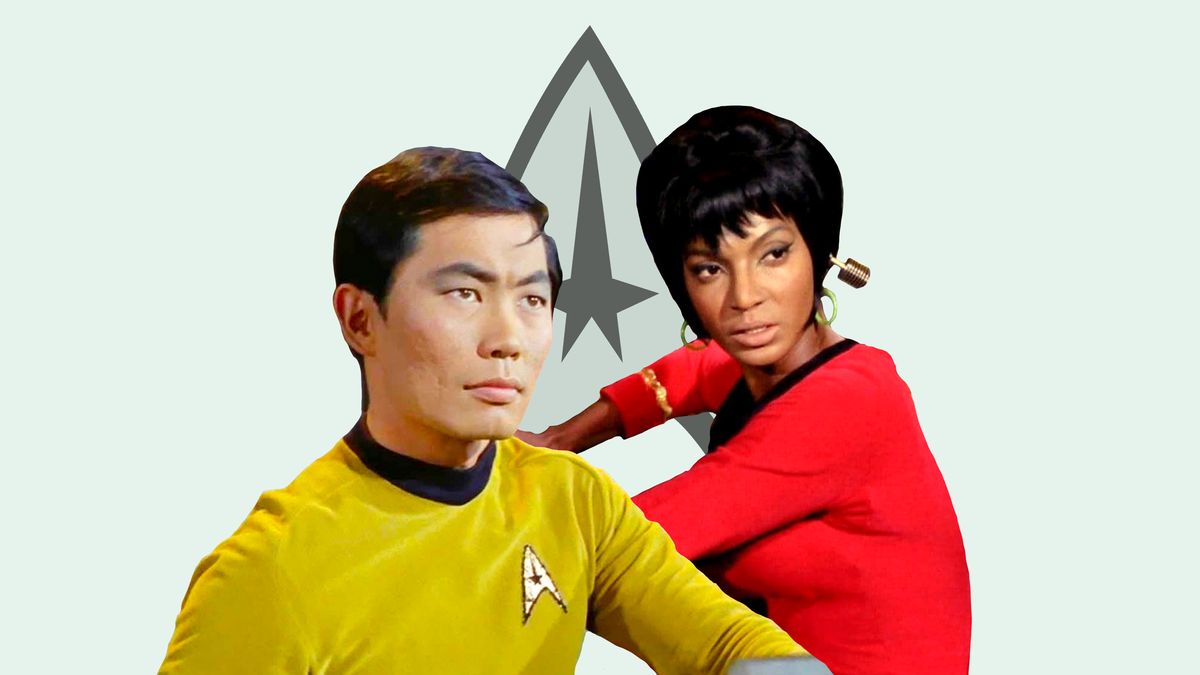
Every product was carefully curated by an Esquire editor. We may earn a commission from these links.
In May 1965, wearing a light pink Chanel jumpsuit, Nichelle Nichols walked into the Desilu offices and transformed Spock into a Black woman. The character of Uhura—a character Nichols would make world-famous in Star Trek— didn’t exist yet. Series creator Gene Roddenberry had a vague idea for a new character, but because Uhura hadn’t yet been written, Nichols remembered that “they handed me a script and apologized, saying the part I would be playing would be a communications officer.” Director Joseph Sargent said the script pages were “probably close” to what her yet-to-be-created character might be like. But, somewhat hilariously, these pages were early dialogue for Mr. Spock. The idea that Spock was a male character wasn’t made clear at first, so Nichols innocently wondered, “What’s she like?” And at that moment, the souls of Spock and Uhura were joined forever.
In this interesting period of ideation, could Nichols have replaced Leonard Nimoy as a Black female Spock? Probably not. And yet, Nichols said at least one person present asked that somebody “phone the contracts department” to see if Nimoy had put pen to paper. It’s hard to really believe that Roddenberry would have fired Nimoy, but over the years, Nichols, Sargent, Roddenberry, and others have repeated the story of her audition with very little variation, making a solid case that at least one person (probably Sargent) was taken with the idea that Spock as a Black woman might have worked. Like the character of Spock, Uhura typifies the ideals of Star Trek , even when the historical truths of those ideals fall short of how we remember them. And, among Trek icons, Nichols’ journey was unique not just in its symbolism, but because of her frustrations with a role that never truly lived up to its potential.
More than any character in the entire Star Trek pantheon, Uhura is unique because everything was created by the actress, including the character’s name. During her audition, Nichols had a book tucked under her arm: the 1962 novel Uhuru, by Robert Ruark—a fictionalized account of the Mau Mau uprisings against landowners in Kenya during the 1950s. In Swahili, the word “Uhuru”means “freedom.” Once it was settled that Nichols would play the new communications officer, Roddenberry suggested taking the name Sulu away from Mr. Sulu, but Nichols insisted that “Uhuru” be Uhura. Pundits and historians love to talk about how Nichols and William Shatner participated in the first kiss between a Black person and a white person on American network television in the episode “Plato’s Stepchildren.” But as much as this episode is celebrated, you really have to wonder if people have watched it recently. In the story, Kirk and Uhura are forced to kiss by hedonist telekinetic “gods.” Any way you slice it, a Black woman being forced to kiss a white man isn’t exactly progress.
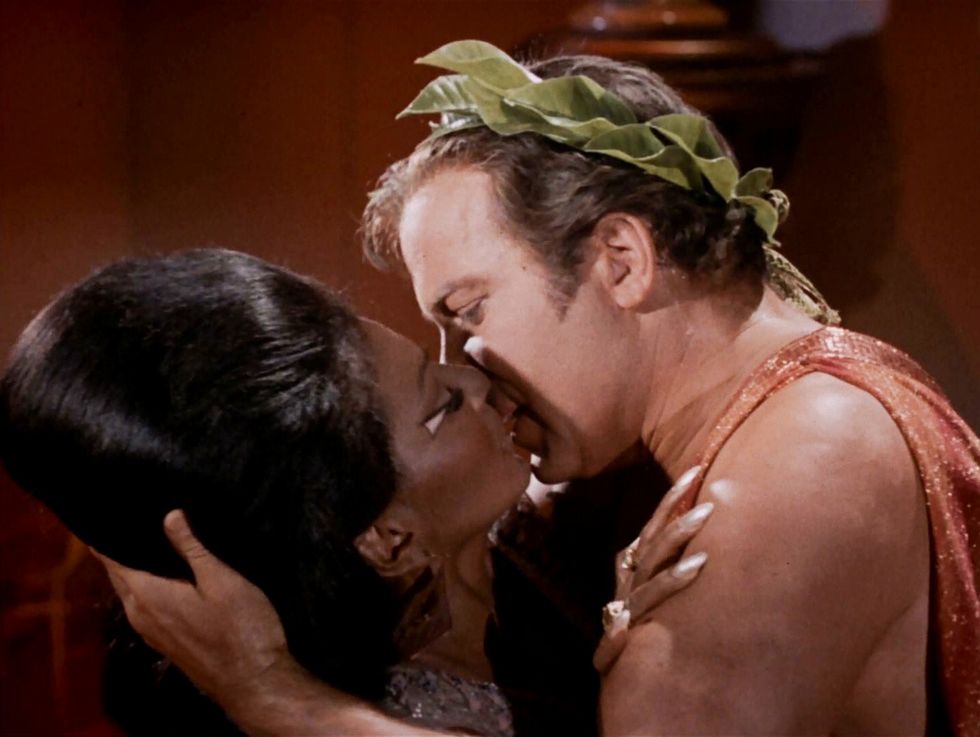
What’s far more progressive and interesting about Uhura is the way she casually introduced the Swahili language into the homes of millions of Americans who’d probably never heard it. In the first episode of Star Trek ever aired—“The Man Trap”— Uhura speaks Swahili, never mind that she’s talking to a shape-shifting alien salt vampire in disguise. Jim Kirk’s backstory had him born in Iowa, but Uhura was from the future-facing United States of Africa. Kirk was a throwback white male hero archetype, while Uhura, like Spock, wasn’t an archetype at all. For American TV, she was something new.
It may not seem like Uhura is an outsider in the context of Star Trek , but her patchwork backstory suggests that Spock and Uhura have more in common than we might assume. In other words, the connection between Spock and Uhura wasn’t just the result of random pages thrown at a young actress. The characters themselves were both iconoclasts and specialists who were excellent at navigating the esoterica of their respective jobs: Spock as the science officer, and Uhura as a language and communications expert. In the first season of Star Trek , it’s clear that Uhura and Spock have a relationship that exists outside of what we see on the screen. As Nichols developed the character with Roddenberry, she decided that “Spock was my mentor,” and that Spock “inspired [Uhura] mentally and professionally.” In the 2022 series Strange New Worlds , Celia Rose Gooding’s newest Uhura has already expanded upon this idea. In the brand new episode, “Children of the Comet,” we see Ethan Peck’s new Spock connect with her as a fellow outsider and encourage her to stay in Starfleet. Also, like in The Original Series , the new show gives us a moment of musical harmony between Uhura and Spock. In the 1966 episode “Charlie X,” Spock plays a Vulcan harp while Uhura sings. In 2022, we see Spock and Uhura sing together to pacify an alien intelligence that communicates through music. These days, with Strange New Worlds , we’re seeing the retroactive beginning of their relationship, which by the time of The Original Series means Uhura is on good enough terms with Spock that she can tease him publicly.
In fact, other than Kirk and Bones, Uhura is the only character in The Original Series who openly fucks with Spock and gets away with it. In “The Man Trap,” she shamelessly flirts with Spock, saying, “Tell me how your planet Vulcan looks on a lazy evening when the moon is full.” When Spock says, “Vulcan has no moon,” Uhura quips, “I’m not surprised.” In “Charlie X,” during that jam session, she sings a song implying that Spock is like a hot version of Satan. In both instances, Spock takes it because he clearly thinks she’s great.

The on-screen connections between Uhura and Spock were mirrored in what Nichols believed was the way Spock was coded as the other. Basically, other than an awkward comment from a space-version of Abraham Lincoln (Lee Bergere) in “The Savage Curtain,” Uhura is not the victim of racism on screen. But Spock is. A lot . Nichols felt that most of the Original Series episodes that dealt with racism directly were the stories written for Spock. “ Star Trek explored storylines concerning his mixed heritage,” Nichols recalled. “[Roddenberry] might have made exactly the same points in writing the same stories with Spock being the human child of a Black parent and a white parent living in the sixties.”
As a Black woman in 1965, Nichols had good reason to roll her eyes at the thought of becoming a TV actor. In 1964, blatant racism had prevented her last guest spot on a TV series from ever airing. Sure, she’d been paid, but nobody had seen her. Over a year before her fateful meeting at Desilu, Nichols had been cast in what would become the final episode of the 1963–1964 military drama The Lieutenant , co-starring with Don Marshall, Gary Lockwood, and Dennis Hopper. The story focused on the racial conflicts between Corporal Devlin (Hopper) and Private Cameron (Marshall), with Lockwood’s titular Lieutenant William Tiberius Rice acting as the de-facto moderator. Nichols played Norma, Cameron’s girlfriend, who consoles him about the racism he faces within the Marines. The Lieutenant was created and produced by Roddenberry, and when NBC and the Pentagon opposed airing an episode about racism in the armed forces, he called the NAACP for an assist. NBC pulled the plug, and the Marines said they’d stop cooperating with the production of the show. “My problem was not the Marine Corps; it was NBC, who turned down [the episode] flat,” Roddenberry said. “I went to the NAACP, and they lowered the boom on NBC.” It didn’t really work. The entire series was canceled, and Roddenberry was righteously furious.
“He was certainly trying to get back at them for what they did to him on The Lieutenant ,” Star Trek writer Judy Burns tells me. “But I don’t think he was out to make a giant statement [with Star Trek ] to begin with. I don’t think he thought about changing the planet or changing racial considerations—although I do think he understood it. And that’s one of the reasons he hired George [Takei] and Nichelle. I think he understood the ramifications. But I also think he was just trying to get a show on the air.”
Like Uhura, the character of Mr. Sulu was barely “a sketch” when Roddenberry offered the role to George Takei. By the time his agent encouraged him to audition for Roddenberry, Takei had already enjoyed an extensive career in TV and film. But right at the start, Takei saw what Nichols saw: a loosely sketched character that he could utterly create, and one that also would give him a steady job. For actors of color in the 1960s, roles bigger than guest spots were just not that common. Pervasive racism in casting remains crushingly prevalent in Hollywood today, but there’s no question that it was much worse in 1965. So when Roddenberry told Takei that the part of Sulu wasn’t completely defined, Takei wasn’t offended—he was pumped. “This producer [Roddenberry] was sheepishly apologizing for the best opportunity I had yet come across. . . as sketched already, this character was a breakthrough role for Asian Americans,” he said.
During the filming of “The Naked Time,” Takei pushed back on explicitly depicting Sulu as having exclusively Japanese interests. When the writer of “The Naked Time,” John D. F. Black, initially wrote the script, his idea was that Sulu would lose his mind and run around the ship swinging a Samurai sword. Takei liked the idea, and Sulu famously runs around the Enterprise shirtless, swinging a sword. But in the final episode, it’s not a Samurai sword—it’s a fencing foil, a change we owe to Takei. “Sulu is a twenty-third-century guy. He would see his heritage as much broader and larger than just ethnically confined,” he explained in 2020 in an interview with Wil Wheaton. “I didn’t play Samurai as a kid. I played Robin Hood.” Sulu, as conceived by Takei, was a futuristic swashbuckler, endearing himself to everyone in those famous sword-swinging scenes. Spock, in a rare backhanded joke, refers to Sulu as “D’Artagnan,” adding to the myriad layers of multicultural references. When I asked Takei why Sulu didn’t go shirtless more often in Star Trek , he laughed and said, “I don’t know, but I think we all know people wanted to see more of it.”
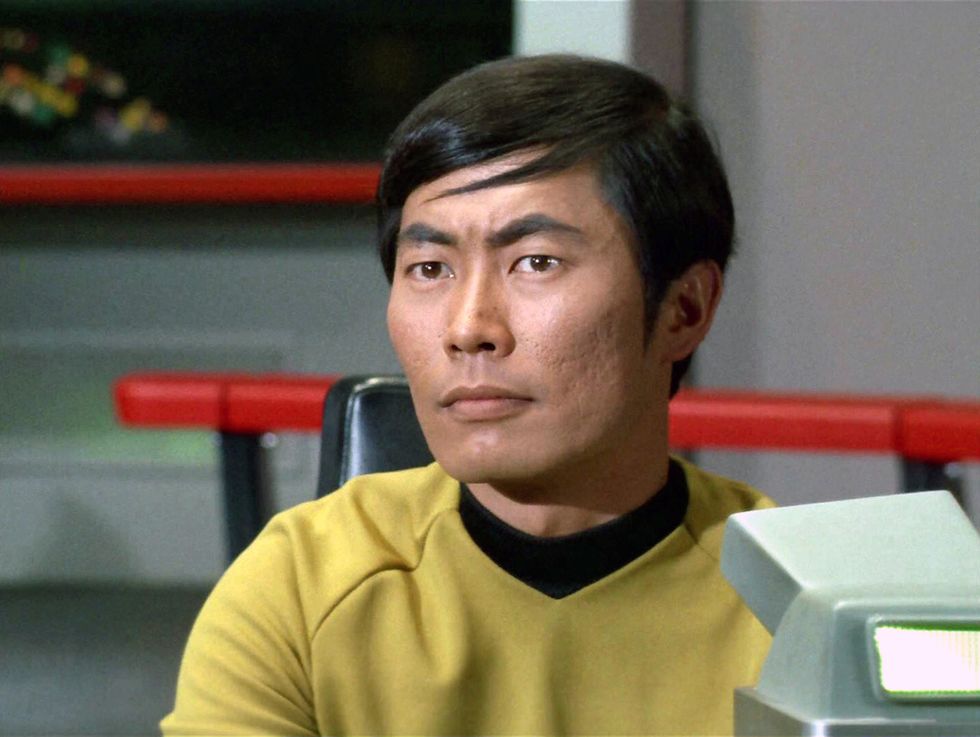
Although Roddenberry is lauded for casting Nichols and Takei in the roles of Uhura and Sulu, his first attempt at Star Trek —1964’s rejected pilot episode, “The Cage”— wasn’t populated by any people of color, even as background characters. Infamously, NBC didn’t like that first-draft version of Star Trek , and miraculously, Roddenberry (along with Desilu Studios) was given another chance. And yet, if “The Cage” had been accepted, and that whitebread Star Trek had been picked up for a series run, would Roddenberry have still thought to bring on a more diverse cast? His motivations for pushing for representation seem laudable enough; after all, Roddenberry pushed for diversity on The Lieutenant. But it’s still more than a little odd that the first filmed pilot of Star Trek (“The Cage”) wasn’t remotely progressive in terms of diversity. And even by the second pilot (“Where No Man Has Gone Before”), Uhura’s not there yet, and Sulu is oddly not the guy flying the ship; instead, he’s a physicist and seems more like a consultant for Spock than a starship pilot. In terms of filming order, Uhura doesn’t appear until the third episode of Star Trek produced, “The Corbomite Maneuver,” an episode that nobody thinks of as the real pilot episode to the ‘60s Star Trek , but totally should. If you’re confused, it’s understandable. “The Corbomite Maneuver” aired tenth and is still considered the tenth episode of the classic show.
“The Corbomite Maneuver” is also the first episode with Bones (DeForest Kelley), and the third attempt at codifying the actual cast of the series. Uhura appears for the first time in this episode, wearing yellow instead of the red dress with which we’d come to associate her. We tend to think of Star Trek: The Original Series as repping for diversity right out of the gate, but the truth is, the progressive notion of the Vulcan philosophy “infinite diversity in infinite combinations”seems to be a bit retroactive, and, perhaps borne of necessity. Accurately, Star Trek is often lauded for presenting a multiracial crew working together in a distant future without any signs of racism. And yet, there are no documents in the series bible indicating that the original Star Trek would have a political philosophy of racial and gender diversity.

An early bible for the series describes it as “action-adventure” in which characters visit worlds with a “similar social evolution as our own.” On the business side, the progressive political philosophy was not a stated goal of Star Trek , but it was a result. By 1968, two years after the show was on the air, Roddenberry’s more forward-thinking version of the series had taken shape, at least in the interviews he gave. “Intolerance in the twenty-third century? Improbable!” he said in 1968. “If man survives that long, he will have learned to take delight in the essential differences between men and between cultures... this is part of the optimism we built into Star Trek .” Roddenberry was clearly serious about what he believed, but he wasn’t consistent. In fact, the first Black actor who worked on Star Trek —Lloyd Haynes, who played Lieutenant Alden in the second pilot, “Where No Man Has Gone Before”—was fired by Roddenberry, who said he was “bored” with the character. Eventually, Roddenberry replaced Alden with Nichols. Some of the Trek faithful have deified Roddenberry as a great progressive ideologue pushing for diversity and representation in Star Trek, and breaking boundaries as a result. They’re not wrong. Roddenberry clearly cared about these things, but it didn’t always come from an ideologically pure place, as Nichols revealed in 1994, when she made it clear that she and Roddenberry had had an affair before she was cast in Star Trek . In both TV Guide and in her memoir, Nichols recalled that “[the] relationship was long over before Star Trek .” But something else Nichols makes clear is that she was in control of Gene Roddenberry, not the other way around.
There are many ways to look at Roddenberry. Was “the Great Bird of the Galaxy” an early social justice crusader who just happened to be a TV producer? Was he a half-assed humanist sci-fi philosopher? Like many pivotal historical figures, Roddenberry can’t be defined by just one trait. His creation of the idealistic United Federation of Planets sometimes feels as important as the signing of the Declaration of Independence. As an American, I’m thankful that George Washington existed, but I’m also aware that George Washington wasn’t the greatest person. Roddenberry wasn’t as bad as all that, but you can see where this is going. He was the founding father of the science fiction country of dreams called Star Trek . In creating Star Trek , Roddenberry unwittingly created a new art form, one spanning several types of media that will likely last for at least a hundred years. He was also a deeply flawed and sometimes problematic human being. But when it came to building the humanitarian ethics of Star Trek ’s progressive future, Roddenberry wasn’t the only founding father of Trek . If Roddenberry is the George Washington in the saga of Star Trek ’s early days, then the Alexander Hamilton is another Gene— Gene L. Coon.
“Gene Coon had more to do with the infusion of life into Star Trek than any other single person,” Shatner said in 1991, shortly after Roddenberry’s death. Shatner isn’t alone in his praise for the Other Gene. Influential Star Trek writer and script editor Dorothy Fontana called Coon “half of Star Trek ’s Genes.” Russell Bates, Coon’s protegé and a writer for Star Trek: The Animated Series, said, “Coon was like Nikola Tesla. He wasn’t interested in credit.”
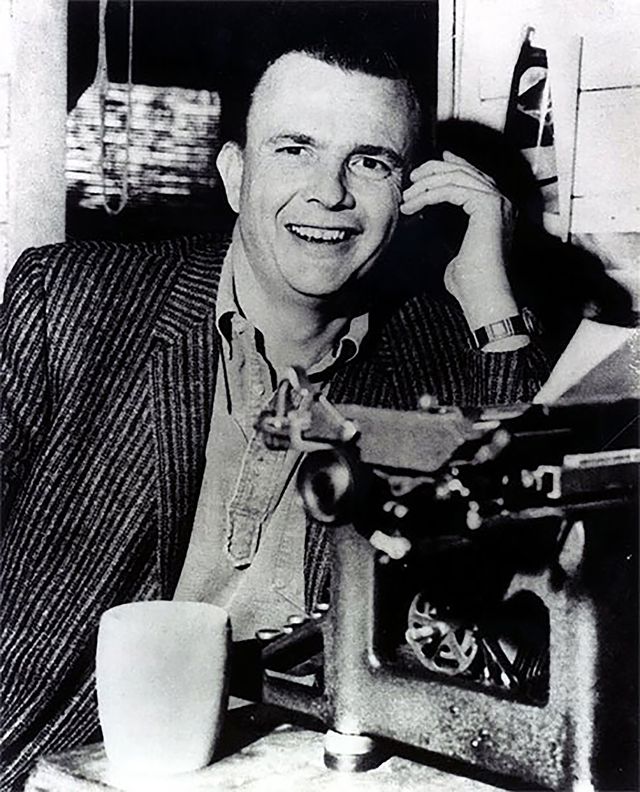
Like Roddenberry, Coon was an ex-cop and an ex-pilot who had turned to TV writing. Both men shared liberal-leaning views and desperately wanted to distance themselves from their racist fathers. When Roddenberry hired Coon as the show’s new story editor, he became the equivalent of what we would today call a showrunner. Coon was a fast writer and rewriter; like the Beatles playing all-night shows in Hamburg, totally high on pills, some of Coon’s speed at the typewriter was the result of taking speed. Ande Richardson, Coon’s secretary, recalled buying “jars of amphetamines” for her boss. According to her, Coon would stay up all night writing, and she would go out all night dancing. Richardson has been called “the real Uhura” insofar as she was a Black woman who worked on Star Trek . Before her gig with Coon, she had worked with both Malcolm X and Martin Luther King Jr., and said that “working with Gene [Coon] was as normal as working with them.” In 2016, she commented that she put Coon in the same category as Malcolm X and MLK. But not Roddenberry. In 1969, Richardson attended the wedding of Roddenberry and Majel Barrett (“the First Lady of Star Trek ”), but maintained that Coon “was my heart.” Richardson encouraged Coon to attend Black Panther rallies, too, which she and others credit with the development of Star Trek ’s moral and ethical tone. “We would talk about politics. . . and then I would see all of that in Star Trek, ” she said. The so-called noble purpose of Star Trek can be attributed to Roddenberry as the creator, but for most of the people who were there, the execution of that purpose came from Coon.
In the twenty-sixth episode of Star Trek ’s first season, “Errand of Mercy,” Coon created the Klingons and promptly turned the story into an antiwar parable. If you’ve never seen Star Trek before and you’re watching the classic shows in order, getting to “Errand of Mercy” will blow your mind. The war with the Klingons is coming. You can feel that the show is about to change. And then. . . the episode isn’t about turning Star Trek into Star Wars , because “Errand of Mercy” is all about aliens telling us to stop blowing each other up with ray guns—or, in this case, Kirk and Spock’s homemade bombs.
The strength of “Errand of Mercy” and several of Coon’s other episodes is a flourish reminiscent of The Day the Earth Stood Still. You look at the movie poster for The Day the Earth Stood Still , and you think it’s about a flying saucer and an invading robot coming to destroy the world à la War of the Worlds . But the movie is really about an alien demanding that Earth disarm, or else. (Appropriately, the 2022 series premiere of Star Trek: Strange New Worlds literally opens with Captain Pike watching The Day the Earth Stood Still , which he calls “a classic.”)
Essentially, the number one rule of Star Trek is that the good guys out there boldly going are not racist colonizers. Starfleet doesn’t displace alien cultures in favor of humanity’s bold expansion. If it’s not appropriate and the time isn’t right, Starfleet avoids first contact with aliens and lets the planet evolve at its own pace. It’s called the Prime Directive, and it was invented by Coon. Basically, Coon invented a rule for the United Federation of Planets that was the opposite of colonial racism. If the Prime Directive existed in real life, would Indigenous peoples globally still have their land? Would the transatlantic slave trade or apartheid have been prevented altogether?
.css-f6drgc:before{margin:-0.99rem auto 0 -1.33rem;left:50%;width:2.1875rem;border:0.3125rem solid #FF3A30;height:2.1875rem;content:'';display:block;position:absolute;border-radius:100%;} .css-1aglugu{font-family:Lausanne,Lausanne-fallback,Lausanne-roboto,Lausanne-local,Arial,sans-serif;font-size:1.625rem;line-height:1.2;margin:0rem;}@media(max-width: 48rem){.css-1aglugu{font-size:1.75rem;line-height:1.2;}}@media(min-width: 64rem){.css-1aglugu{font-size:2.375rem;line-height:1.2;}}.css-1aglugu b,.css-1aglugu strong{font-family:inherit;font-weight:bold;}.css-1aglugu em,.css-1aglugu i{font-style:italic;font-family:inherit;}.css-1aglugu:before{content:'"';display:block;padding:0.3125rem 0.875rem 0 0;font-size:3.5rem;line-height:0.8;font-style:italic;font-family:Lausanne,Lausanne-fallback,Lausanne-styleitalic-roboto,Lausanne-styleitalic-local,Arial,sans-serif;} Coon invented a rule for the United Federation of Planets that was the opposite of colonial racism.
“What made the show compelling was the metaphors,” Takei told me in 2016. “We dealt with the Civil Rights movement while it was happening in the ’60s. There were some obvious ones. People with faces with black on one side, and white on the other.” Takei refers to the third-season episode “Let That Be Your Last Battlefield” (co-written by Coon under the pen name Lee Cronin), in which the crew meets two aliens from the planet Cheron—Lokai (Lou Antonio) and Bele (Frank Gorshin)—each with faces like the ones Takei describes. Although the crew is baffled at first, Commissioner Bele reveals that he is from the population of Cherons who are “black on the right side,” while Lokai is descended from an “inferior breed” of people who are “white on the right side.” This sounds silly, and it mostly is. But the heart of classic Star Trek is very much in the right place here. Spock, the victim of racism both veiled and obvious, makes the case that it doesn’t matter what colors appear on either side of anyone’s face: “The obvious visual evidence, Commissioner, is that he is of the same breed as yourself.” This isn’t to say that the episode pushes for any “color blindness,” because the Enterprise crew largely sympathizes with Lokai, the renegade from an oppressed racial group. Even in this simplistic allegory, Star Trek points out that there are oppressors and victims.
In “Balance of Terror,” the crew learns that their deadly enemies, the Romulans, look exactly like Vulcans. One crew member, Lieutenant Stiles (Paul Comi), whose ancestors fought in a war against the Romulans a hundred years before, immediately suggests that Spock is a spy for the Romulans because he has pointed ears. Before the racism boils over into paranoia, Kirk grabs Stiles’ chair, spins him around, and shouts, “Leave any bigotry in your quarters. There’s no room for it on the bridge.” In “Space Seed,” Spock notes that “insufficient facts always invite danger.” Time and time again, Star Trek presents an information gap—what we would call fake news—as the source of racism, war, and death. In “Day of the Dove,” Chekov is convinced he suffered a family atrocity that never occurred—the death of a brother that Sulu points out never existed. In Coon’s “Devil in the Dark,” Federation miners are determined to kill a Horta before it kills them, all before Spock learns that the Horta is a mother protecting her unborn baby Hortas. Unlike on our own planet, Spock can “mind-meld” with other people and life forms, which in the case of the mother Horta means that he cries out (“PAIN!”), experiencing her anguish as though it were happening to him.
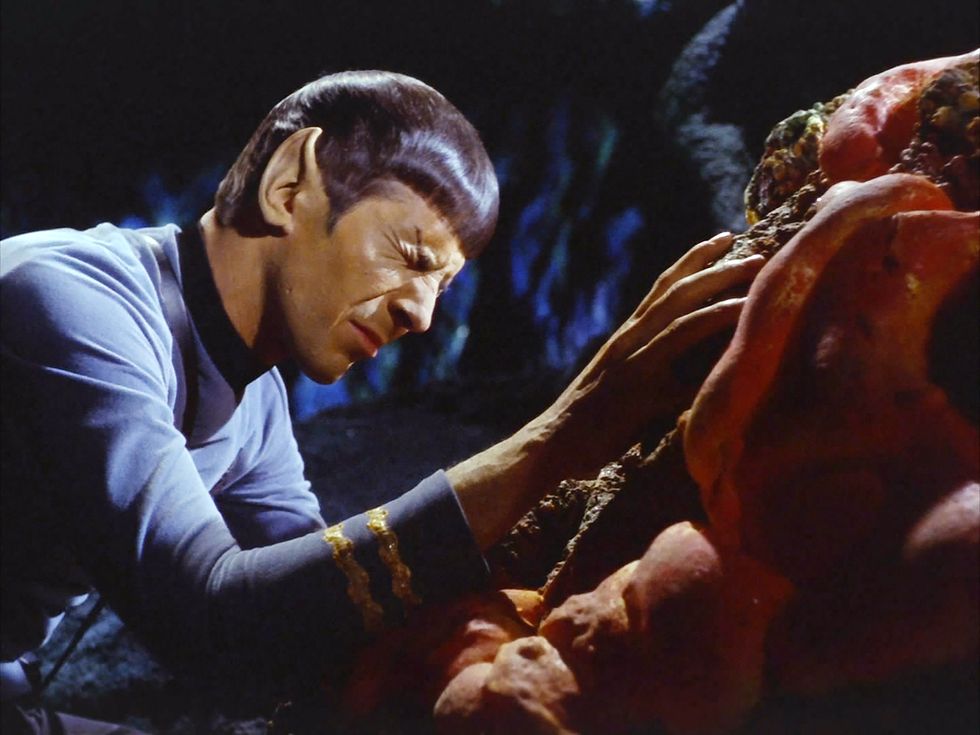
“There are so many people in pain, in real life. And they are living lives of quiet desperation,” Walter Koenig, who famously played the young Russian navigator Mr. Chekov, tells me over the phone. “So that anger can boil to the top, and they’re looking for avenues to express it. We’re not genetically predetermined to hate, but as a consequence of circumstances, angry people can embrace [the] culture of hate and misinformation, and then you’ve got people breaking windows and storming the Capitol.”
If someone had never seen an episode of Star Trek before, having them watch only “Let That Be Your Last Battlefield” or “Day of the Dove” could convince them that this show was just a series of heavy-handed old-timey after-school specials written by white people on drugs. Which, through a certain microscope, is exactly what ’60s Star Trek was. But the power of classic Trek ’s diversity politics can be easily misunderstood if you try to pick out one great episode. For Takei, it’s all about metaphors, but Walter Koenig thinks the representation itself was more impactful than specific plotlines. “I think more than any story that we told, it was more about those seven faces on the bridge,” Koenig tells me. “A Japanese American. An African American. The Russian, there, while the Iron Curtain was in place. Some stories we told were just action stories. Some had something to say about humanity. But the fact that we saw those faces every week—I think that was settled into our consciousness simply by the fact that we saw them.”
But because it was a network television show, Star Trek made a lot of compromises to keep going. If a script was going to be shortened, or a scene cut, the first characters to lose lines or moments were always Sulu, Chekov, and Uhura. “We were the moveable furniture,” Koenig said. Nichols recalled that while the studio was giving “lip service” to the idea of racial equality, people of color were still not given equal time on the show. Other Black characters appeared only in a handful of episodes, like a second doctor who works on the Enterprise, Dr. M’Benga, played by Booker Bradshaw in just two episodes: “A Private Little War” and “That Which Survives.” Seemingly, M’Benga is not only as good as Bones but in many ways better. In the 2022 series Strange New Worlds , M’Benga is now played by Babs Olusanmokun as a series regular. But why wasn’t M’Benga in more episodes of The Original Series ? M’Benga isn’t killed off or anything. Booker Bradshaw simply wasn’t featured as much as other actors who weren’t Black.
Contrary to popular myth, racist viewers did not mount a letter-writing campaign to remove Nichols from the show. Instead, the racism came from within—from, as Nichols wrote, “the studio’s front office,” which perceived that white audiences weren’t ready to see more of Uhura. The paper trail, though, reflects the simple fact that viewers liked her more than the studio or the network.
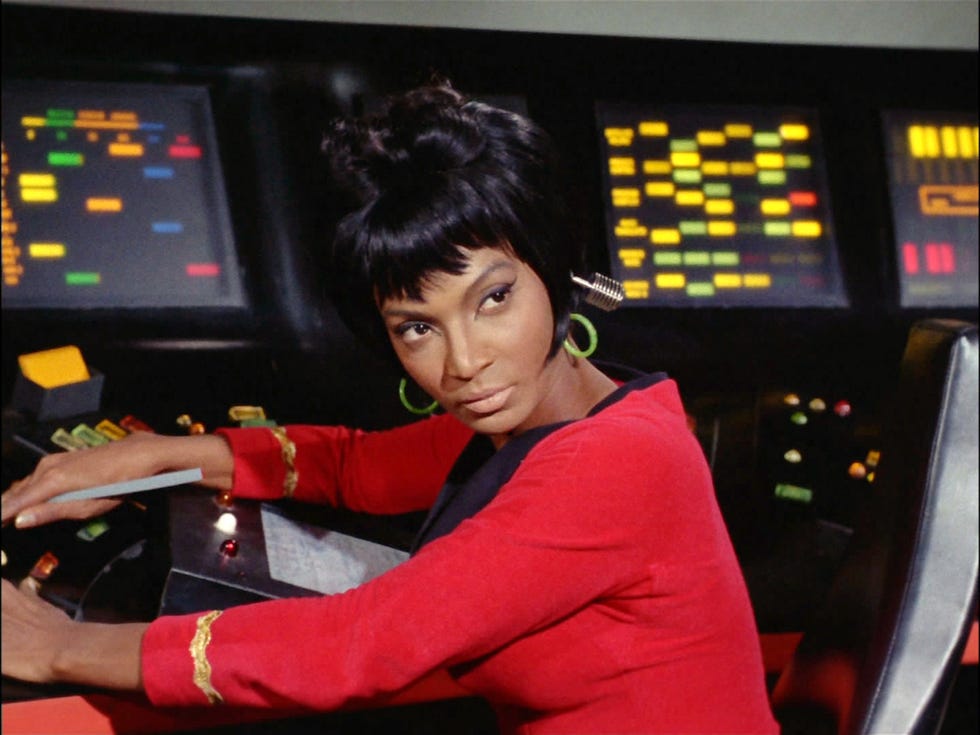
In “The Naked Time,” when Sulu is running around with his shirt off, he grabs Uhura and says, “I’ll protect you, fair maiden!” Without missing a beat, Uhura says, “Sorry, neither!” She’s neither fair nor is she a virginal maiden. It’s a line that you can almost miss the first time you hear it, but it’s suggestive of the larger potential of underused characters on the classic Star Trek , and Uhura in particular. “Sorry, neither” is the real Uhura talking—the unheard Uhura, the Uhura who had better storylines written for her that we never got to see because of pervasive racism and fear. Women are not automatically “fair,” and they’re not automatically good people because of patriarchal standards. It’s one line from an iconic character who pushes back against systematic white supremacy. The word “fair” also reinforces oppressive standards of beauty derived from racist viewpoints. Uhura’s rejection of the label “fair maiden” rejects systematic racism and entrenched sexism, too. By the end of the first season in early 1967, fed up with prewritten scripts, harassment, and open racism, Nichols didn’t just think about quitting Star Trek —she quit outright. Roddenberry begged her not to leave, but she was done. The night after her resignation from Star Trek , Nichols attended “an important NAACP fundraising event.” At one point, she was asked to do a meet-and-greet with someone who was a self-professed Star Trek fan. That fan turned out to be Dr. Martin Luther King Jr.
When King met Nichols, he said that he and his daughters “adored” Uhura and that they watched the show “faithfully.” Nichols then gave him the bad news that she had quit. King told her that she couldn’t and begged her to reconsider. “Remember, you are not important there in spite of your color,” he said. “You are important there because of your color.” A week later, Nichols returned to Star Trek .
Phasers on Stun!: How the Making (and Remaking) of Star Trek Changed the World
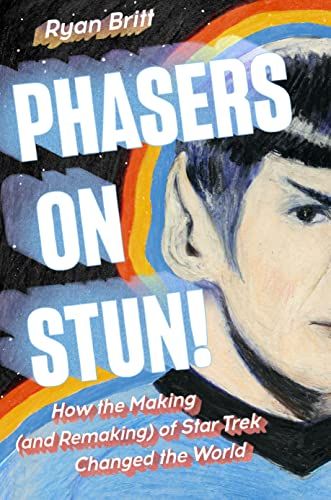
Did Martin Luther King Jr. really love Star Trek as much as Nichols, Roddenberry, and the rest of us have been told? When it comes to projecting optimism about the future and anti-racist attitudes, the Trek franchise is a full-time PR machine for itself, which occasionally means the uglier bits of that progress are overlooked.
“Uhura’s role in hindsight reads like tokenism, technically,” writer and scholar Syreeta McFadden tells me. McFadden is a contemporary critic known for her writing on race and pop culture and is perhaps most famous for her essay “Teaching the Camera to See My Skin,” in which she elucidates the racist history of film technology. Specifically, the notion that Kodak and other film companies calibrated their film to favor white skin. Interestingly, Nichols notes that in the early days of Trek conventions, she’d occasionally meet a fan who had only ever seen the show on black-and-white TV, and thus was unaware that she was Black.
“She and the others were set pieces. Sure, it was groundbreaking, but it was kitschy groundbreaking,” McFadden explains. “What matters more is the timing. Coming at the end of the Civil Rights movement in the ’60s, having that visibility was big. I’m not sure MLK believed Star Trek was a great show, but compared to what was out there, it was the only thing on mainstream TV that was friendly to representing different races and gender identities.”
The classic Star Trek will always have a tenuous place in the history of racism and pop culture. On the one hand, it was light years ahead of its time. On the other hand, there are dudes painted half-white, and half-black, and the messaging is ham-fisted and sometimes racist. Star Trek was considered feminist at the time it was made, but the “strong” roles for women that Roddenberry promised are few and far between.
What Star Trek was in the ’60s and what it came to represent aren’t the same. Was it a progressive anti-racist show conceived by a visionary humanist? Or was it a populist action-adventure show that conveniently had a moral and political conscience? As Uhura might say, the answer is clearly: Sorry, neither! When it comes to diversity and representation, the holistic intention of the original Star Trek is hard to pinpoint, partly because we'll always be looking at it from the perspective of improvement. Competing intentions show the history of Trek ’s early representation as filled with contradictions. But then again, Scotty needed contradictory elements to power the Enterprise, too. Without matter and antimatter banging against each other, the Enterprise would never fly.
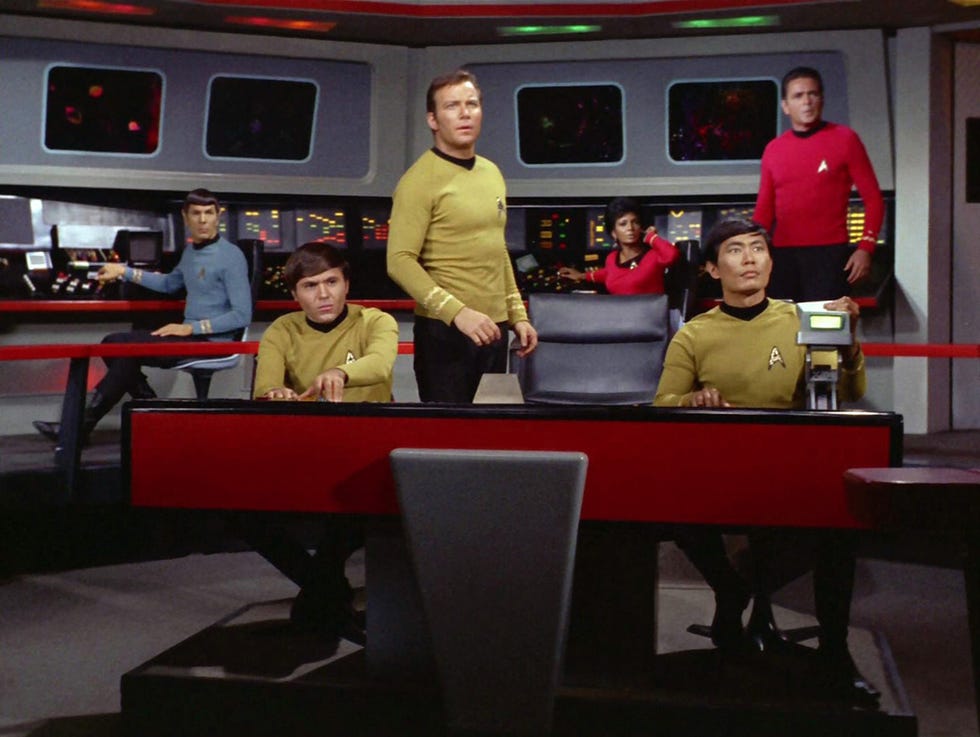
Adapted from the book PHASERS ON STUN! by Ryan Britt, to be published on 5/31/2022 by Plume, an imprint of Penguin Publishing Group, a division of Penguin Random House LLC. Copyright © 2022 by Ryan Britt.
@media(max-width: 73.75rem){.css-1ktbcds:before{margin-right:0.4375rem;color:#FF3A30;content:'_';display:inline-block;}}@media(min-width: 64rem){.css-1ktbcds:before{margin-right:0.5625rem;color:#FF3A30;content:'_';display:inline-block;}} TV

Brace Yourself For Jerrod Carmichael's New Show

Get Ready For Robert Downey Jr. in The Sympathizer
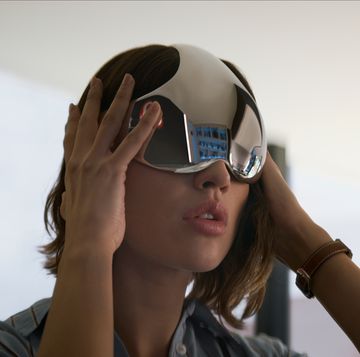
The Best Netflix Series of 2024 (So Far)
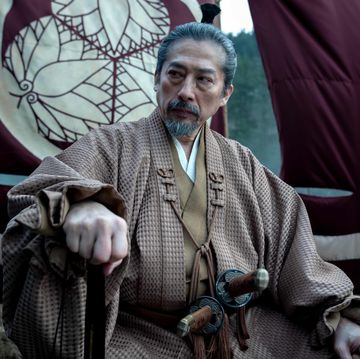
Crimson Sky Only Means One Thing in 'Shōgun'
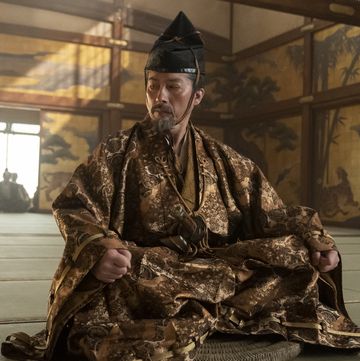
Shōgun: Your Guide to Understanding the Characters
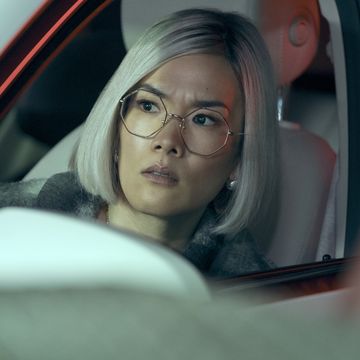
The 40 Best Shows on Netflix Right Now
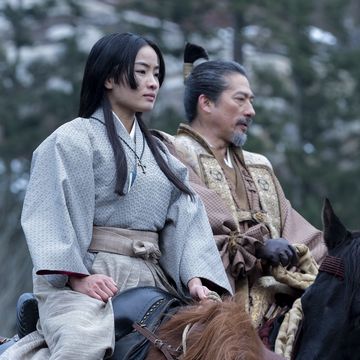
Oda Nobunaga’s Unbelievable Story Inspired ‘Shōgun
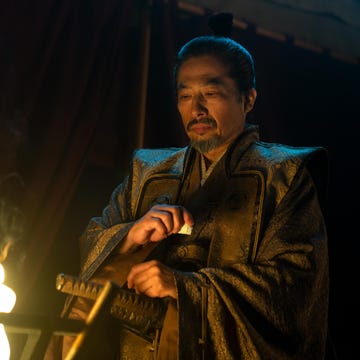
‘Shōgun’ Episode 6 Declares War on Everything
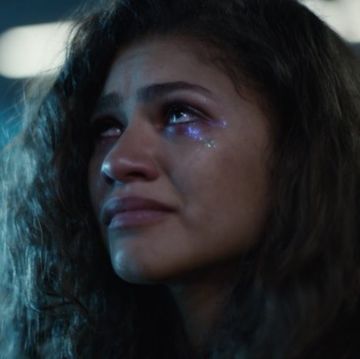
The Future of 'Euphoria' Is Increasingly Uncertain
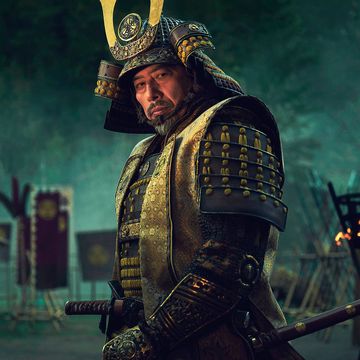
‘Shōgun’ Is One of the Best TV Series of the Year
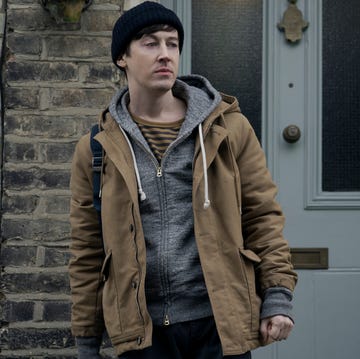
What Happened to Will in '3 Body Problem'?
Stay up to date with notifications from The Independent
Notifications can be managed in browser preferences.
UK Edition Change
- UK Politics
- News Videos
- Paris 2024 Olympics
- Rugby Union
- Sport Videos
- John Rentoul
- Mary Dejevsky
- Andrew Grice
- Sean O’Grady
- Photography
- Theatre & Dance
- Culture Videos
- Food & Drink
- Health & Families
- Royal Family
- Electric Vehicles
- Lifestyle Videos
- UK Hotel Reviews
- News & Advice
- Simon Calder
- Australia & New Zealand
- South America
- C. America & Caribbean
- Middle East
- Politics Explained
- News Analysis
- Today’s Edition
- Home & Garden
- Fashion & Beauty
- Travel & Outdoors
- Sports & Fitness
- Sustainable Living
- Climate Videos
- Behind The Headlines
- On The Ground
- Decomplicated
- You Ask The Questions
- Binge Watch
- Travel Smart
- Watch on your TV
- Crosswords & Puzzles
- Most Commented
- Newsletters
- Ask Me Anything
- Virtual Events
- Betting Sites
- Online Casinos
- Wine Offers
Thank you for registering
Please refresh the page or navigate to another page on the site to be automatically logged in Please refresh your browser to be logged in
How Sonequa Martin-Green became the first black female lead of Star Trek: 'My casting says the sky is the limit for all'
We talk to the cast and visit the set ahead of netflix's all-new reboot, 'star trek: discovery', with each episode rolling out as a weekly episodic show, article bookmarked.
Find your bookmarks in your Independent Premium section, under my profile
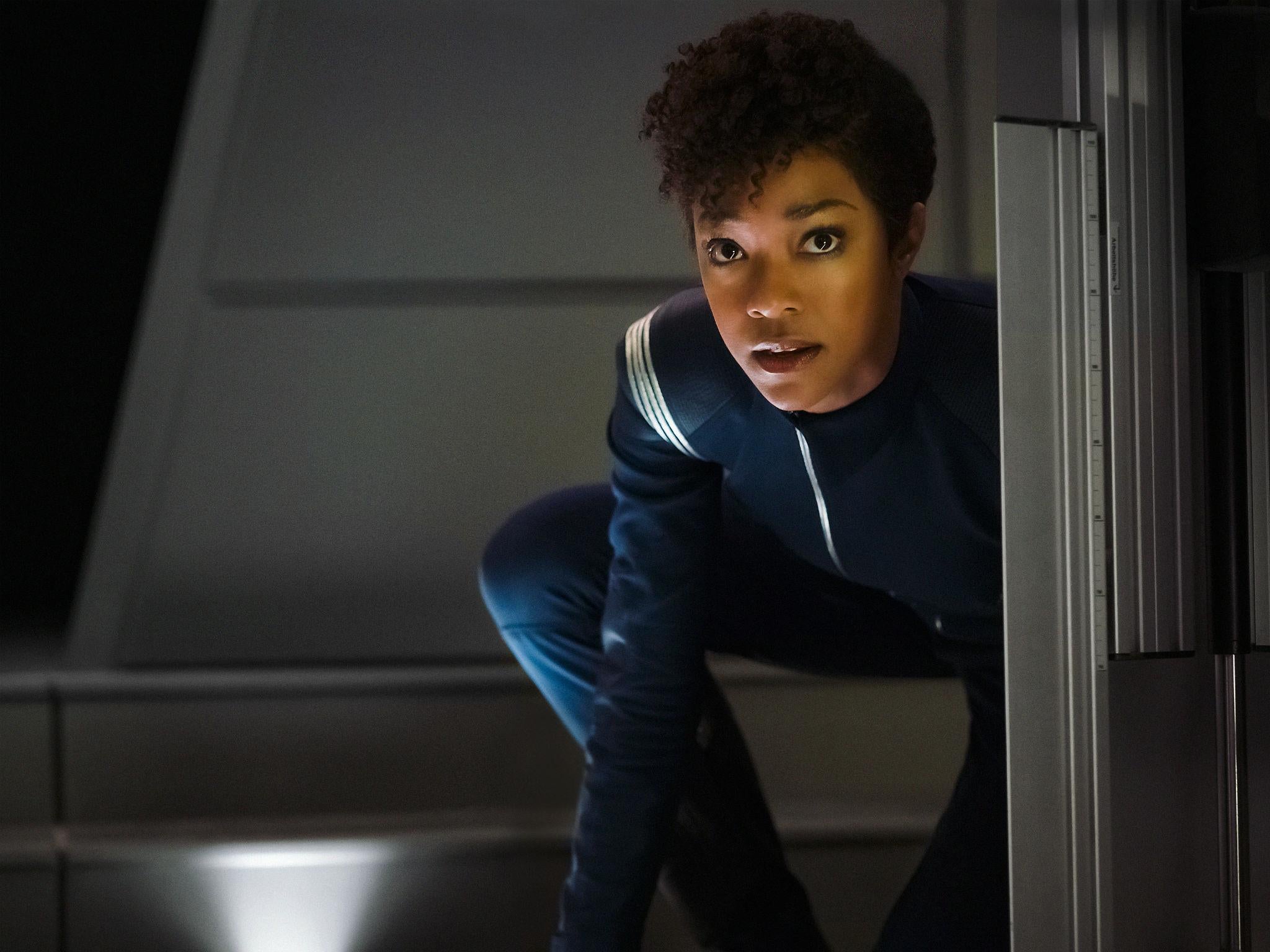
Get our free weekly email for all the latest cinematic news from our film critic Clarisse Loughrey
Get our the life cinematic email for free, thanks for signing up to the the life cinematic email.
Star Trek pioneered diversity long before diversity was a hot-button issue. When the series first launched 51 years ago, its original crew featured black, Asian and, yes, females actors – not merely as eye candy – among its cast.
But an all-new reboot, Star Trek: Discovery , goes boldly where no Trek has gone before by placing two women of colour in command of a starship: Crouching Tiger, Hidden Dragon actress Michelle Yeoh and Walking Dead’s Sonequa Martin-Green.
Trekkies have always been a passionate crowd, although even Star Trek: Discovery’s genial show-runner Aaron Harberts was caught off guard by the intensity of the internet trolls and haters. “It’s our job to reflect the world we live in; a world where more than half the population are women. Quite frankly, I don’t know what all the fuss is about,” argues Harberts when The Independent meets him and his cast.
If Yeoh brushes off the pressure – after all, the Malaysian martial-arts dynamo has quietly been shattering glass ceilings for the past four decades – then much of the burden falls to Sonequa Martin-Green taking centre stage as (arguably) Trek’s first black female lead (some fans point to Nichelle Nichols, who played Uura from 1966-91, as the rightful owner of that honour).
“My casting says that the sky is the limit for all of us. I think what we’re seeing now in our media is this push to diminish and to devalue and to make people feel that the sky is not the limit for them, that they are meant for the ground,” says Martin-Green, a force of energy so bubbly and exuberant, its hard to imagine she was chosen to play a human raised as a Vulcan. Not only chosen, but actively waited on; production halted until her Walking Dead contract ran out.
“So having me as the first black female lead of a Star Trek just blasts that into a million pieces. I am eternally grateful that the diverse casting of our show means that we are now a part of the conversation and hopefully a part of making the world a better place, as cliché as this sounds. Because I really believe it and think its vital for us all right now,” she says, the spectre of Trump lurking unspoken.
Not that she views her casting as a triumph for women alone. “I think it sends a message to any minority group that’s been disenfranchised. We all benefit when we can see a picture of ourselves in a position of leadership and I think that goes not just for women and people in minority groups – but for everyone to see that this is possible. I think that it will help people see the beauty of women in power and also the beauty of minorities in power, and to incite change.”
It should be noted that Martin-Green is the first black female first officer, rather than captain. There has previously been a female captain, played by Kate Mulgrew who made franchise history in 1995 when she was anointed as Captain Janeway in Star Trek: Voyager; however, there has yet to be a black female captain.
Star Trek: Discovery is a prequel to Gene Rodenberry’s original series, set about 10 years prior in a world at war. An interesting experiment from Netflix, fans will not be able to binge on the series, each episode rolling out as a weekly episodic show.

Watch Apple TV+ free for 7 days
New subscribers only. £8.99/mo. after free trial. Plan auto-renews until cancelled
One of the most popular pop culture franchises in history, now returning to TV 12 years after the last Starfleet was cancelled, Harberts and fellow show runner Gretchen J Berg have plotted a very different course for Star Trek: Discovery .
“I believe this is the first time that it’s a serialised telling of a tale and an exploration of just one character [Martin-Green’s Michael Burnham] along the path of discovering what it means to be human and finding her individuality,” says Harberts. “Those stories have been well told in the movie spin-offs, but were impossible to do on TV where each episode was closed-ended.”
While visiting the Discovery set at Toronto’s Pinewood studios, plot-lines are shrouded in secrecy and many sets are off-limits, although we are allowed a peek inside the quarters shared by the crew’s first gay couple – Anthony Rapp’s Lieutenant Paul Stamets and Wilson Cruz’ Dr Hugh Culber.
“We don’t want to make a big deal about it. Its just treated as perfectly normal – which it should be,” says Harberts.
Trekkies have long been divided into Captain Kirk or Spock camps, and Martin-Green herself has always favoured Leonard Nimoy’s Spock from the original series. “Spock is my favourite in the canon. I loved what Leonard Nimoy did,” she says, reverently referring to the three original seasons as “ TOS ”.
Jason Isaacs, who plays Discovery’s war-mongering Captain Gabriel Lorca, is likewise a Trek fan from a different era, admiring Patrick Stewart’s Captain Jean-Luc Picard from the big screen versions of the late 1990s.
Unsurprisingly, the new cast all geeked out when Jonathan Frakes, who played Riker alongside Stewart in the early film versions, recently guest-directed an episode.
“I’d never met Patrick Stewart before and Jonathan was excited to introduce us at an event we were both attending,” recalls Isaacs, best-known for his role as Lucius Malfoy in the Harry Potter films. “But Jonathan couldn’t come at the last minute so I wandered up behind the world famous silhouette, heard the echo of the magnificent voice, saw the mob of gorgeous well-wishers and... chickened out. So I still don’t know him.”
Born and raised in Alabama, Martin-Green marked her entry into TV nine years ago with a guest spot on an episode of Law & Order , a rite of passage for all New York-based actors, progressing onto episodes on The Good Wife , Gossip Girl and Once Upon a Time before making her name as The Walking Dead’s fiesty Sasha Williams.
“My parents, in particular my mom, were always supportive of my wanting to act but I don’t think either of them viewed it as a legitimate career until they saw me on Law & Order . I played a bisexual high school lacrosse player involved in the beat-down of a high school boy. So much fun,” laughs the actress who has a two-and-a-half-year-old son with husband, Kenric Green.
Its no accident that her captain takes a male name, Michael Burnham. “It is on purpose. It was Brian Fuller’s idea,” she says referring to the writer who conceived the Star Trek reboot, lobbying for a black woman at the fore, before falling out with CBS executives. “A lot of Brian’s female leads have male names. So I am named after my biological father and I love that because I think it really speaks to the gender fluidity. It’s a subtle yet powerful nod to that.”
Certainly Star Trek: Discovery presents a darker narrative. “It‘s grittier and raw in a way that the other iterations have not been. I think that’s one of the ways we’re going boldly where no-one has gone before,” she winks.
She’s excited to meet Nichelle Nichols, 84, who played Uhura on TOS .
“She reached out to me via social media and it will be a glorious day when we meet.”
If the reboot proudly promotes diversity and gender equality then Martin-Green admits her costume fits way too snugly, a common complaint among all previous female Trek cast.
“It’s tight, but its goood,” she says letting the vowel spread like syrup. “It makes you stand up straight so I appreciate it for that. They’re beautifully made and designed. Nor am I complaining about the lipstick after years of running around with zombies in the dirt.”
Empowered by the strong women in her family, she will tell you, “My mother and my older sister are heroes. Also God, right? Because he’s a woman too. He is all things; that’s what I believe.”
And lest you be wondering – yes, the new Star Trek crew do actually repeat the immortal line, “Live long and prosper”.
‘Star Trek: Discovery’ begins streaming on Netflix on 25 September
Join our commenting forum
Join thought-provoking conversations, follow other Independent readers and see their replies
Subscribe to Independent Premium to bookmark this article
Want to bookmark your favourite articles and stories to read or reference later? Start your Independent Premium subscription today.
New to The Independent?
Or if you would prefer:
Want an ad-free experience?
Hi {{indy.fullName}}
- My Independent Premium
- Account details
- Help centre
Sonequa Martin-Green Reflects on Her 'Star Trek' Legacy as First Black Female Captain (Exclusive)
Louis gossett jr., academy award-winning actor, dead at 87, tori spelling breaks down in tears after reunion with ex dean mcdermott, 'scoop': gillian anderson on tackling modern royal drama after 'the crown' (exclusive), 'when calls the heart's erin krakow confirms elizabeth and nathan kiss in season 11 (exclusive), becky lynch admits she hated wwe storyline with seth rollins (exclusive), taylor swift and travis kelce 'soaking up downtime' and committed to ‘growing together’ (source), 'rhop's mia thornton on that finale scene with gordon and where they stand post-reunion (exclusive), 'the matrix': watch keanu reeves' on-set interview (flashback), tiger woods and ex elin nordegren awkwardly reunite to celebrate son charlie, sean 'diddy' combs' alleged 'drug mule' taken into custody after house raids (bodycam footage), 'the bachelorette's jenn tran on bringing asian representation to tv as lead of her own love story, 'scoop': rufus sewell on his 'incredible' transformation into prince andrew (exclusive), ashanti pokes fun at nelly over his karaoke fail, diddy's former backup dancer tanika ray alleges 'horrific' experience, charlize theron shares rare glimpse of daughters during spring break at disney world, 'wcth': why chris mcnally says 'heartbroken' lucas won't try to win elizabeth back in season 11, et vault unlocked: kevin costner | behind-the-scenes secrets from his award-winning films, 'd2: the mighty ducks' turns 30 watch joshua jackson and cast’s rare on-set interviews, ‘the bachelorette’s jenn tran shares partner must-haves and deal breakers as she kicks off filming, michael jackson's kids make rare joint appearance amid grandmother katherine's legal woes, the 'star trek: discovery' actress opened up to et about her historic role in the iconic franchise..
Sonequa Martin-Green has taken over the captain's chair in the fourth season of Star Trek: Discovery , and the actress couldn't be more excited about the opportunity and her character's growth.
"It was exhilarating, it was solidifying, it was cementing and fulfilling in so many ways," Martin-Green shared with ET's Nischelle Turner. "I felt as if I had arrived, or sort of reached the pinnacle of what this season is about."
With her character, Michael Burnham, in command, she's become the first black female captain in the franchise's history. It's one element of the role that Martin-Green has come to love so much, along with her character's tenacity.
"One of the things I love the most about the character of Michael Burnham is there’s this power, this grit, this heart, and there’s such a rawness there," she said. "I’m always ready to jump in and get down and dirty, which I love."
She's also appreciated the feedback and the support from the franchise's vocal and dedicated fan base.
Reflecting on the most memorable fan encounters she's had since stepping into the Star Trek universe, Martin-Green recalled one time, at a convention in London, she was approached by a man who explained the impact her role and performance has had on his life.
"He said, 'I just need you to know, racism is very rampant in my family, but I watched the whole [first] season, [and] I felt so connected to you. I related to you in such a way that at the end I sort of looked back and thought oh my goodness this a black woman and I'm a white man, and I really felt like it was me,' she remembered. "And he said, 'So now, I feel like I can stop the cycle of racism in my family."
"I of course I bust out crying in front of him," she added.
New episodes of Star Trek: Discovery debut Thursdays on Paramount+.
Updates on Celebrity News, TV, Fashion and More!
RELATED CONTENT:
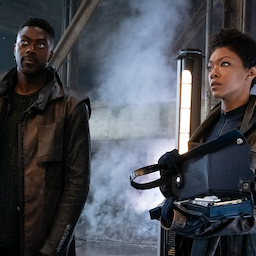
'Star Trek: Discovery' Debuts Season 4 Trailer
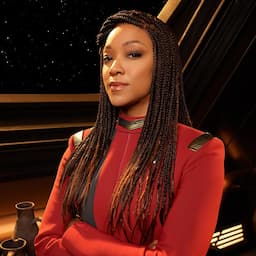
'Star Trek: Discovery': See Burnham in Captain's Chair in First Look
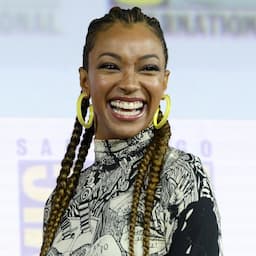
'Star Trek: Discovery' Star Sonequa Martin-Green Has a Baby Girl
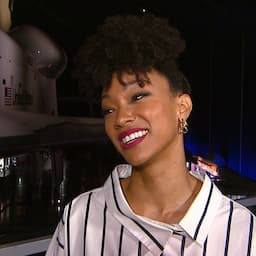
EXCLUSIVE: Sonequa Martin-Green Hopes Her 'Star Trek: Discovery' Role 'Knocks Down Some Walls'
- Sonequa Martin-Green
- Star Trek: Discovery
- ET Black Stories
Latest News
- Cast & crew
- User reviews
Let That Be Your Last Battlefield
- Episode aired Jan 10, 1969

The Enterprise encounters two duo-chromatic and mutually belligerent aliens who put the ship in the middle of their old conflict. The Enterprise encounters two duo-chromatic and mutually belligerent aliens who put the ship in the middle of their old conflict. The Enterprise encounters two duo-chromatic and mutually belligerent aliens who put the ship in the middle of their old conflict.
- Gene Roddenberry
- Oliver Crawford
- Gene L. Coon
- William Shatner
- Leonard Nimoy
- DeForest Kelley
- 31 User reviews
- 11 Critic reviews

- Captain James Tiberius 'Jim' Kirk

- Mister Spock

- Nurse Chapel
- See all cast & crew
- Production, box office & more at IMDbPro
Did you know
- Trivia The original story concept did not depict the aliens with bi-colored skin. One was a devil with a tail and the other was an angel. Episode director Jud Taylor came up with the idea of bi-colored skin shortly before the episode began filming. His original suggestion was that they be half-black/half-white, one color from the waist up and the other from the waist down, but each wearing reversed color schemes. The central idea stuck but the colors were finally separated along the vertical axis rather than along the horizontal.
- Goofs Chekov reports that Bele's ship is "out there" while at his station at the helm. The camera shot from behind the helm shows Kirk and crew looking at the display screen appears, Hadley rather than Chekov is at the navigation station. When they cut back to a shot from the front angle as before to show the crew's faces, Chekov is back in his seat and Hadley is in Sulu's position at the helm.
[last lines]
Mr. Spock : [On the bridge, after Lokai and Bele have beamed to the surface of Charon] And another life form has appeared on Cheron.
Uhura : That doesn't make any sense.
Mr. Spock : To expect sense from two mentalities of such extreme view points is not logical.
Sulu : Their planet's dead. Does it matter now which one's right?
Mr. Spock : Not to Lokai and Bele. All that matters to them is their hate.
Uhura : Do you suppose that's all they ever had, sir?
Captain James T. Kirk : No, but that's all they have left. Warp factor two, Mr. Sulu. Set course for Starbase 4.
- Alternate versions Special Enhanced version Digitally Remastered with new exterior shots and remade opening theme song
- Connections Featured in William Shatner's Star Trek Memories (1995)
- Soundtracks Theme Music credited to Alexander Courage Sung by Loulie Jean Norman
User reviews 31
- Dec 22, 2013
- January 10, 1969 (United States)
- United States
- Official Facebook
- Paramount Studios - 5555 Melrose Avenue, Hollywood, Los Angeles, California, USA
- Paramount Television
- Norway Corporation
- See more company credits at IMDbPro
Technical specs
- Runtime 51 minutes
Related news
Contribute to this page.
- IMDb Answers: Help fill gaps in our data
- Learn more about contributing
More to explore

Recently viewed
- Original Series Trivia
- Interesting Characters
- The Best Series and Movies, Ranked
- Fun Facts About the New Film Series
- 'Make It So' - Picard
- Store-Bought Items Used as Props
- Secrets from the Wardrobe Dept.
- Exasperated Picard
- The Greatest Star Trek Insults
- Accidents with the Transporter
- Celebrating Spock and Bones McCoy
- The Best ‘Star Trek’ Villains Who Give Starflee...
- Times Scotty Saved the Day
- Episodes That Get You Hooked
List of Star Trek Characters
Embark on an intriguing exploration of the beloved Star Trek constellation of characters, seamlessly woven in our specially curated list. From Captain Kirk's indomitable spirit to Spock's logical brilliance, absorb the enthralling essence of these timeless personalities from one of science fiction's most enduring enterprises.
Diving beyond the surface, our list traces the intricate pathways of each character's narrative journey. Grasp the transformational arcs and pivotal roles of these fascinating individuals who have defied space and time and entered the panorama of popular culture.
Our meticulous, well-researched explorations are founded on extensive knowledge providing a broad-view perspective of their strengths, weaknesses, and alliances, as well as the antagonistic relationships within the Starfleet universe. Immensely engaging, this list will satisfy the curiosity of those seeking depth and perspective into their favorite characters while tracing the cherished legacy of Star Trek.
However, this engaging exploration isn’t just a monologue. We want our opinion. Are you fascinated by the stoicism of Jean-Luc Picard or intrigued by the duality of Data? Here, your opinion matters. Cast your vote for your favorite character and become a part of an enriching, collective conversation on this beloved franchise.
Commence your celestial journey with us as you dig deeper into the intricacies and marvels of the Star Trek universe. Participate, discover, and contribute to the shared passion for one of sci-fi’s greatest phenoms.
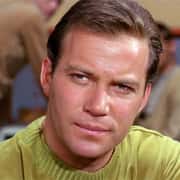
James T. Kirk
Captain James T. Kirk, the iconic protagonist of the Star Trek universe, is a highly innovative and passionate leader who never shies away from taking risks. Known for his unwavering dedication to his crew and the ideals of the United Federation of Planets, Kirk's cunning mind, strategic thinking, and exceptional diplomatic skills set him apart from other Starfleet captains. His ability to think outside the box and make split-second decisions in critical situations solidifies his reputation as one of the most legendary characters in the Star Trek franchise.
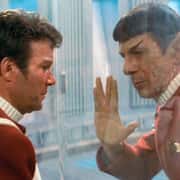
The half-human, half-Vulcan First Officer of the USS Enterprise, Spock represents the epitome of stoicism, logic, and reason. Often struggling with the dichotomy between his Vulcan and human heritage, he brings an unparalleled level of intellect and curiosity to the crew while grappling with his emotions. His unwavering loyalty and deep understanding of both cultures make Spock not only a vital asset to the crew but also a symbol of unity and harmony between two seemingly disparate worlds. His unique upbringing and commitment to logic have made Spock one of the most beloved and enduring characters in the Star Trek universe.
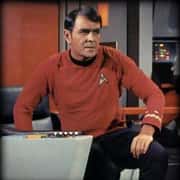

Montgomery Scott
Affectionately known as "Scotty," Montgomery Scott is the brilliant and resourceful Chief Engineer of the USS Enterprise. With his unmistakable Scottish accent, wit, and humor, Scotty consistently saves the day by performing seemingly impossible engineering miracles. His uncanny ability to push the boundaries of the ship's systems, coupled with his unwavering loyalty to Captain Kirk and the rest of the crew, makes him an indispensable member of the Enterprise. Scotty's optimistic attitude and steadfast dedication to his work have endeared him to Star Trek fans throughout the years.
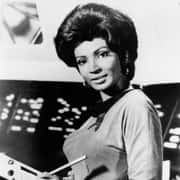
Nyota Uhura
A groundbreaking character for her time, Lieutenant Nyota Uhura serves as the Communications Officer aboard the USS Enterprise. Her linguistic and interpersonal skills play a significant role in fostering understanding between different races and cultures. As one of the first Black women to hold a central role in a major television series, Uhura broke barriers and shattered stereotypes during the height of the Civil Rights Movement. Her poise, intelligence, and strength continue to serve as an inspiration for women and people of color in the science fiction genre and beyond.
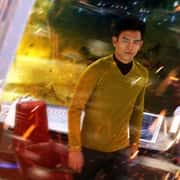
Hikaru Sulu
As the talented Helmsman of the USS Enterprise, Hikaru Sulu is known for his calm demeanor and exceptional piloting abilities. His passion for botany, fencing, and astrophysics showcases his well-rounded personality and diverse interests outside of his Starfleet duties. Sulu's portrayal as a competent Asian character during a time of Hollywood whitewashing broke racial barriers, paving the way for greater representation and diversity onscreen. His quiet confidence, strong moral compass, and ability to navigate complex situations make Sulu a fan favorite and a staple of the Star Trek universe.
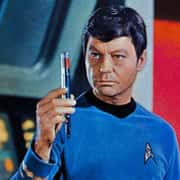
Leonard McCoy
Gruff yet compassionate, Dr. Leonard "Bones" McCoy serves as the Enterprise's Chief Medical Officer. A skilled physician with a penchant for metaphors, Bones is often the voice of reason and humanity on the crew, reminding them of the ethical implications of their actions. His tumultuous yet endearing friendship with Spock provides a unique balance between logic and emotion that is rarely seen on television. Despite his grumbles and sharp wit, McCoy's unwavering concern for the wellbeing of his patients and crewmates solidifies him as a beloved and integral character.
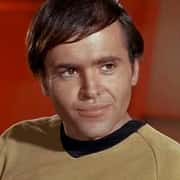
Pavel Chekov
The young and enthusiastic Russian navigator of the Enterprise, Ensign Pavel Chekov brings a vibrant energy and eagerness to the crew. With his thick accent and unwavering patriotism, Chekov often serves as comic relief while providing valuable insights and ingenuity in critical situations. His youthful perspective and relentless loyalty to the crew, coupled with his exceptional problem-solving abilities, make him an indispensable and charismatic addition to the Star Trek universe.

Christopher Pike
Captain Christopher Pike, the original captain of the USS Enterprise before James T. Kirk, is a thoughtful and decisive leader with a strong moral compass. Known for his keen ability to judge character and motivate his crew, Pike serves as a mentor and guiding force for the younger members of Starfleet. His willingness to take risks for the greater good and unwavering dedication to the Starfleet ideals set an inspiring precedent for future captains. With his calm demeanor and tactical prowess, Captain Pike remains a revered and influential figure in the Star Trek universe.
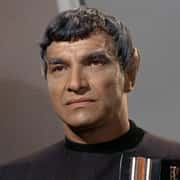
A prominent Vulcan ambassador and Spock's father, Sarek embodies the intellect and stoicism characteristic of his race. Though he struggles with the emotional consequences of marrying a human woman, Amanda Grayson, his commitment to diplomacy and the pursuit of knowledge remains steadfast. Sarek's influence on Spock's upbringing is evident in his son's sense of honor and dedication to reason, making him an essential figure in shaping one of the franchise's most enduring characters. Despite his cool exterior, Sarek's complicated relationship with his family adds depth and complexity to his persona, solidifying his status as a beloved Star Trek character.
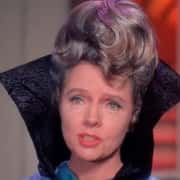
Amanda Grayson
The human wife of Sarek and mother of Spock, Amanda Grayson is a symbol of the potential for unity and understanding between different species and cultures. Her compassion, empathy, and love for her family serve as a powerful contrast to the Vulcan detachment and logic that often surrounds her. Amanda's influence on Spock is evident in his emotional growth throughout the series, as she encourages him to embrace his humanity and become a more well-rounded individual. Her quiet strength and unwavering love for her son make Amanda Grayson an essential and compelling character within the Star Trek universe.
Starfleet Computer
The Starfleet Computer is an indispensable component of the USS Enterprise, providing crucial information and analysis to the crew in their various missions and adventures. Capable of processing vast amounts of data in mere seconds, this advanced artificial intelligence (AI) system exemplifies the technological prowess of the Star Trek universe. With its neutral yet authoritative voice, the Starfleet Computer serves as a reliable source of knowledge and guidance for the crew, often assisting them in navigating complex situations and overcoming challenges. While not a typical character in the traditional sense, the Starfleet Computer is an iconic presence that greatly contributes to the distinctiveness of the franchise.

George Samuel Kirk, Sr.
The father of James T. Kirk, George Samuel Kirk, Sr., plays a pivotal role in shaping his son's character and values, even though his presence in the series is brief. As the First Officer of the USS Kelvin, George demonstrates bravery, self-sacrifice, and dedication to his crew by staying behind during the evacuation to save countless lives, including his wife and newborn son. His heroic actions leave a lasting impression on Kirk, inspiring him to follow in his father's footsteps and join Starfleet. The legacy of George Samuel Kirk establishes a strong foundation for the protagonist's journey, making him a significant figure within the Star Trek canon.
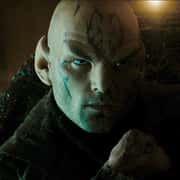
The Romulans, an enigmatic and cunning race, serve as one of the most formidable adversaries in the Star Trek universe. Characterized by their pointed ears, sharp eyebrows, and militaristic society, Romulans are driven by a desire for power and territorial expansion, often employing deception and subterfuge to achieve their goals. Despite their antagonistic role, the complex and nuanced portrayal of individual Romulans, such as Commander Sela and Senator Vreenak, adds depth and intrigue to the franchise. Ultimately, the Romulans represent the darker side of ambition and secrecy, albeit with glimmers of hope for peace and understanding.
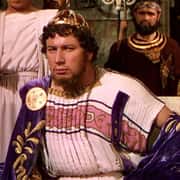
Nero, a Romulan mining ship captain turned vengeful villain in Star Trek (2009) , serves as a testament to the devastating influence of grief and loss on an individual's actions. Driven by the destruction of his home planet and the death of his family, Nero's quest for vengeance against Spock and the Federation leads him down a path of ruthless destruction. His single-minded obsession and disregard for the lives of others makes him a formidable antagonist. However, the emotional backstory underlying his actions also highlights the complexities inherent in all beings, regardless of their race or allegiance.
Nero's wife
Although her presence is brief and mostly in flashbacks, Nero's wife Amandine plays a vital role in the development of Star Trek (2009)'s primary antagonist. Her tragic death during Romulus's destruction serves as the catalyst for her husband's descent into madness and vengeance, fueling his desire to punish the world he sees as responsible. The deep love and devotion Nero feels for his wife are testaments to the character's humanity, providing a glimpse of vulnerability beneath his hardened exterior. As such, Amandine serves as a symbol of the transformative power of love and heartbreak within the Star Trek universe.
Vulcan Bully #1
Appearing in Star Trek (2009) , the character of the Vulcan Bully illustrates the challenges faced by young Spock in his formative years, highlighting his struggle to reconcile his dual heritage. Despite the common perception that Vulcans are solely driven by logic and devoid of emotion, the bullies reveal that even this seemingly stoic race can fall prey to more base instincts such as prejudice and cruelty. The actions of the Vulcan Bully push Spock to explore his human side and ultimately become the multifaceted character we know and love. The presence of this character underscores the complexities that lie beneath the surface of the Vulcan race.
Captain Robau
Though his time onscreen is brief, Captain Richard Robau of the USS Kelvin plays a crucial role in the opening moments of Star Trek (2009) . When faced with the threat of Nero's ship, Captain Robau demonstrates bravery and selflessness by agreeing to leave his crew and board the enemy vessel in an attempt to negotiate peace. His unflinching dedication to his command and willingness to sacrifice himself for the safety of others serve as a prime example of the leadership qualities that define Starfleet captains. Robau's actions set a tone of heroism and duty that resonates throughout the film and the franchise as a whole.
Barracks Leader
The Barracks Leader in Star Trek (2009) serves as an authoritative figure within the Starfleet Academy, responsible for maintaining order and discipline among the cadets. While his role may be minimal, his presence establishes the structured environment and expectations placed upon those training to join the ranks of Starfleet officers. As a supportive figure, the Barracks Leader helps to guide young cadets like James T. Kirk on their paths to becoming the leaders and heroes of the future. His role underscores the importance of mentorship and guidance in the development of the franchise's beloved characters.
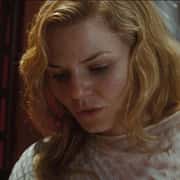
Winona Kirk
As the mother of James T. Kirk, Winona Kirk's influence on her son's life cannot be overstated. In the face of tragedy and loss, Winona demonstrates resilience and courage, raising Kirk and his brother in the aftermath of their father's death. Her strength and fortitude in the face of adversity inspire Kirk's own determination and drive to succeed in Starfleet. Although her appearance in the series is limited, Winona Kirk stands as a testament to the power of maternal love and endurance in shaping the lives of her children.
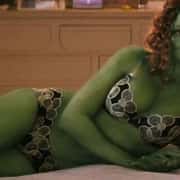
Gaila, an Orion woman attending Starfleet Academy in Star Trek (2009) , is a minor character who adds an element of intrigue to the film. As the roommate of Uhura, Gaila represents the diversity of species and cultures present within the Star Trek universe, particularly within the ranks of Starfleet. Her brief interactions with Kirk and Uhura also serve to showcase her intelligence and ambition, traits essential for success in the demanding environment of the Academy. Gaila's presence, though fleeting, highlights Star Trek's commitment to inclusivity and the celebration of unique individuals from all walks of life.
Admiral Richard Barnett
As the Superintendent of Starfleet Academy, Admiral Richard Barnett serves as an imposing presence and symbol of authority in Star Trek (2009) . His stern demeanor and high expectations for new recruits showcase the level of dedication required for a successful career in Starfleet. Additionally, his ability to recognize potential in cadets, such as Kirk, speaks to his keen understanding of the qualities necessary for leadership. Admiral Barnett's role is essential in reinforcing the discipline, commitment, and determination that define the Star Trek universe's most respected officers.
The Wrong Orion
The Wrong Orion, played by Rachel Nichols in Star Trek (2009), is an intriguing character who serves as an essential catalyst for the film's events, making her one of the best Star Trek characters to date. As the enigmatic and exotic green-skinned beauty, Nichols expertly captures the allure associated with the Orion race. However, she also brings a sense of vulnerability and depth to her character, highlighting the fact that she is more than just a stereotype. The Wrong Orion's presence on-screen not only adds intrigue and excitement to the plot but also challenges our preconceived notions of the Orions, enabling her character to leave an indelible mark on the Star Trek universe.
Ayel, Nero's second-in-command in Star Trek (2009) , serves as a loyal and ruthless supporter of his captain's quest for vengeance. The unwavering devotion he displays toward Nero's cause, even in the face of destruction, speaks to the strong bonds formed among Romulan comrades in their militaristic society. Ayel's fierce fighting skills and cunning tactics make him a dangerous adversary for the Enterprise crew. This character's blind loyalty serves as a stark contrast to the more nuanced relationships and moral compasses exhibited by the protagonists, emphasizing the complexities of friendship and allegiance within the Star Trek universe.
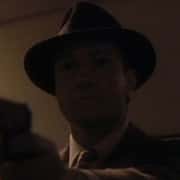
In Star Trek (2009) , Johnny is a childhood friend of James T. Kirk, providing insight into the protagonist's early life and experiences. Growing up in rural Iowa, Johnny's rebellious nature and youthful antics are mirrored by Kirk, offering glimpses of the future captain's defiant spirit and daring attitude. This character serves as a reminder that even legendary figures like Kirk have humble origins, highlighting the potential for growth and development in anyone. Although a minor character, Johnny's role in shaping Kirk's formative years adds depth to the franchise's beloved protagonist.
Kelvin Doctor
The Kelvin Doctor, portrayed by Sonita Henry in Star Trek (2009), is a fantastic character who proves that even small roles can have a significant impact. As the chief medical officer aboard the USS Kelvin, her character represents the compassionate and capable nature of Starfleet medical officers, despite the chaos unfolding around them. Henry's powerful portrayal of the Kelvin Doctor in the opening scenes provides the audience with an incredibly intense and emotional introduction to the rebooted Star Trek universe. This incredible performance cements the Kelvin Doctor as a standout character among the pantheon of Star Trek greats.
The Iowa Cop in Star Trek (2009) represents authority and law on Earth, contrasting with the interstellar focus of most characters in the series. Encountering a young James T. Kirk during one of his more reckless moments, the interaction between the two showcases Kirk's defiance and struggle to find his path in life before joining Starfleet. The Iowa Cop's presence emphasizes the importance of choices and consequences in shaping one's future, a theme that resonates throughout the Star Trek universe. Though a minor character, his brief appearance reminds audiences that even Earth-bound concerns play a role in the larger narrative of the series.
Med Evac Pilot
In Star Trek (2009) , the Med Evac Pilot's role is small but significant, as he helps transport an injured George Samuel Kirk, Sr. to safety. Despite the chaos and uncertainty of their circumstances, the pilot demonstrates courage and professionalism under pressure. His actions contribute to the foundations of the Kirk family saga and the heroics that would define James T. Kirk's life. In the grand tapestry of the Star Trek universe, characters like the Med Evac Pilot emphasize the importance of teamwork and bravery in the face of adversity.
Lew the Bartender
Lew the Bartender, played by the late Jeremy Roberts in Star Trek: Voyager, is a unique addition to the long list of memorable Star Trek personalities. Providing a human touch within the heart of the Delta Quadrant, Lew's character exemplifies the idea that despite being lightyears away from home, some things remain constant - like a friendly face tending the bar. The engaging storytelling nature of his character manages to create a profound connection between the crew and the audience. Through Lew the Bartender's warm demeanor and quick wit, Roberts brings a sense of warmth and familiarity to the otherwise unpredictable and often hostile environment of the Delta Quadrant.
Kelvin Helmsman
Kelvin Helmsman, portrayed by Greg Ellis in Star Trek (2009), is an exceptional character you can't help but appreciate. As the helmsman aboard the USS Kelvin, his character showcases a combination of unwavering loyalty and dedication to duty, even in the face of imminent danger. In what could have been a minor role, Ellis manages to imbue the character with a sense of purpose and skill that makes him stand out among the crew. Furthermore, the Kelvin Helmsman's actions under pressure leave an indelible mark on the audience, reinforcing his position as one of the best Star Trek characters of all time.
Romulan Helmsman
The Romulan Helmsman serves as an integral member of Nero's crew in Star Trek (2009) , expertly navigating the villain's formidable ship through challenging situations. Although not a primary focus of the story, his contributions to Nero's destructive mission hint at the skills and cunning of the Romulan race. As a loyal supporter of his captain's cause, the Romulan Helmsman's role showcases the strength of the bond between comrades in the face of adversity. His presence offers yet another dimension to the complexity and depth of the Star Trek universe.
- Entertainment
- Star Trek Universe
- Watchworthy
- Film Characters
- Fictional Characters
Live long, and prosper.
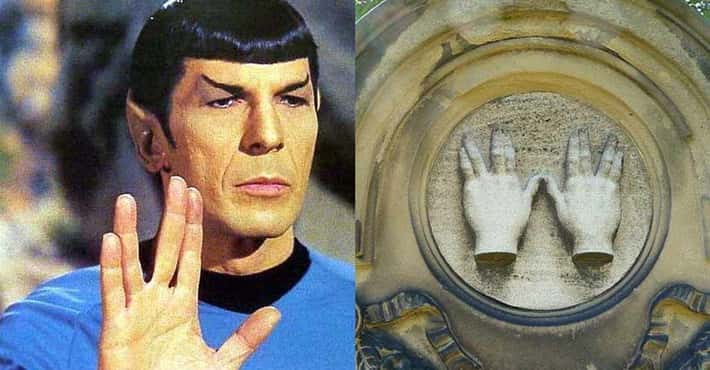
- More to Explore
- Series & Movies
Published Mar 26, 2024
Star Trek's Strongest Supporting Women Characters
Beyond the Captain Janeways, Dr. Crushers, and Major Kiras, there has always been strong women in Star Trek.
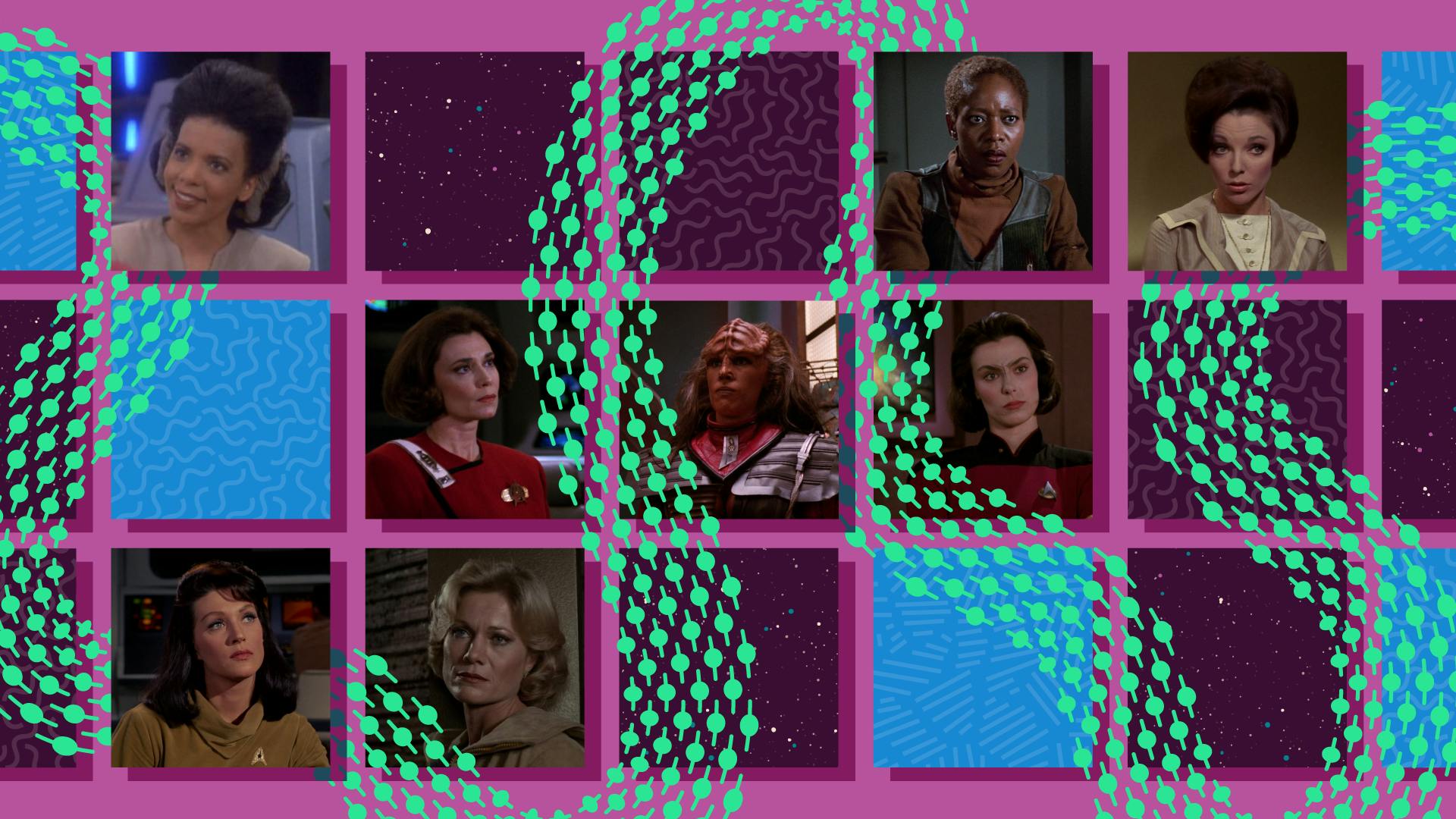
StarTrek.com
While the Star Trek franchise reached its pinnacle with Kate Mulgrew's fantastic portrayal of Captain Janeway, it began earlier with the truly revolutionary casting of Nichelle Nichols as Lt. Uhura. While one can nitpick and say she was subservient to the boys (and there's definitely an argument to be made), the very fact that an African American woman was seen on the Bridge had a direct impact on the viewing public. (Just ask Whoopi Goldberg!)
As Women's History Month comes to a close, let's take a look back — beyond the Dr. Crushers and Major Kiras — to some of the less-obvious strong women characters in the history of Star Trek .
10. Captain Kasidy Yates

"The Way of the Warrior"
It takes a special kind of woman to win the heart of a space station commander, military leader, and Emissary to the Prophets. Kasidy Yates is that women.
She's a hardworking cargo ship captain (engaging in some light and mostly benign smuggling on the side) who refuses special treatment when caught or when it’s time to pitch in against the Dominion. Plus, she likes baseball. Yeah, Kasidy is awesome — let Sisko do the cooking!
9. Yeoman Leslie Thompson
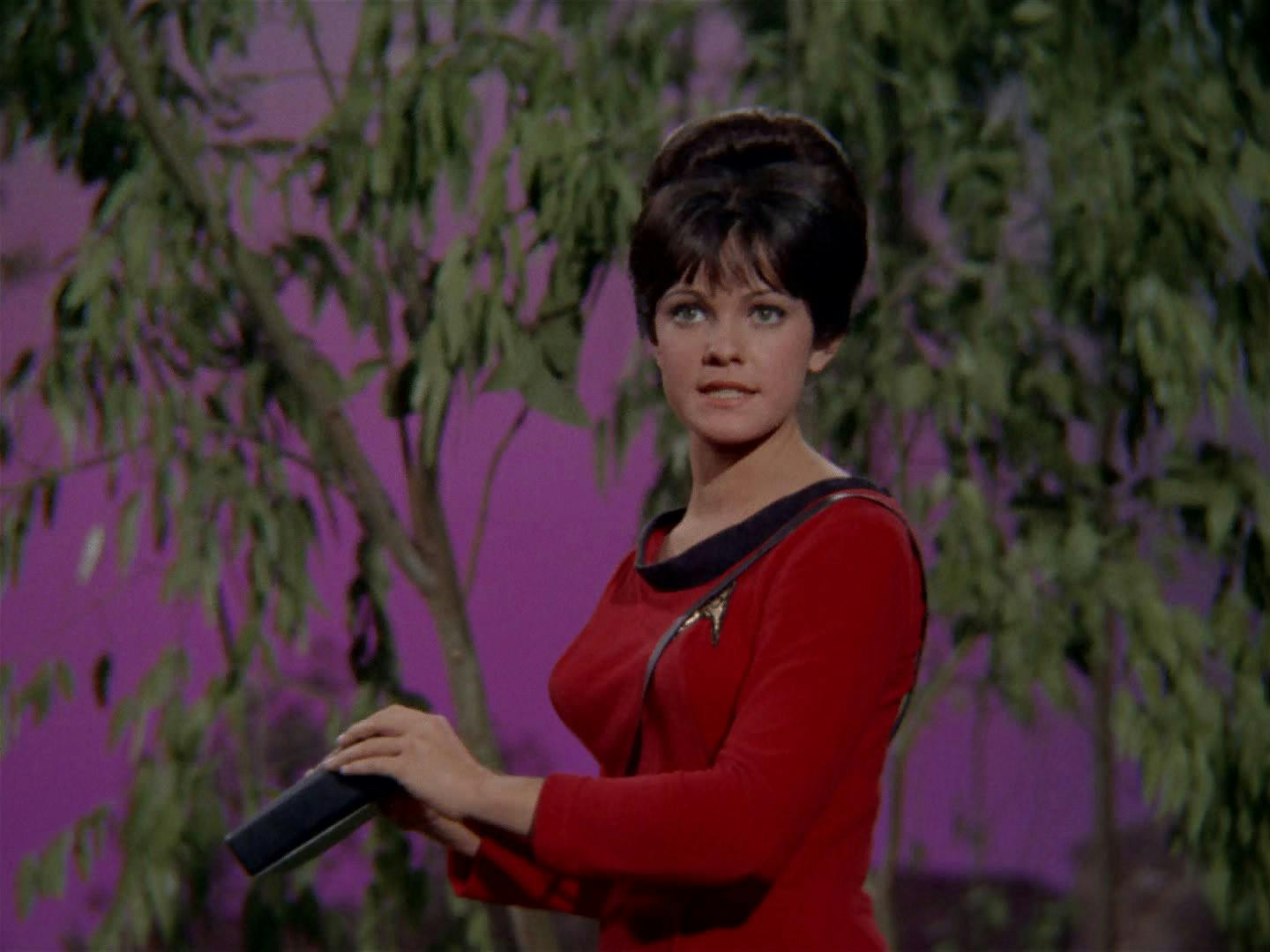
"By Any Other Name"
Okay, an odd pick, sure, but hear me out 'cause this is important.
How much was The Original Series in the vanguard? They were willing to have women beam down to planets as part of armed away teams. And sometimes (okay, once) they were willing to kill them off. Pretty radical!
Yeoman Thompson was the redshirt who was turned into the giant chalk Dungeons & Dragons cube and then crushed to death by that jerk from the Andromeda Galaxy in " By Any Other Name ."
8. Romulan Commander
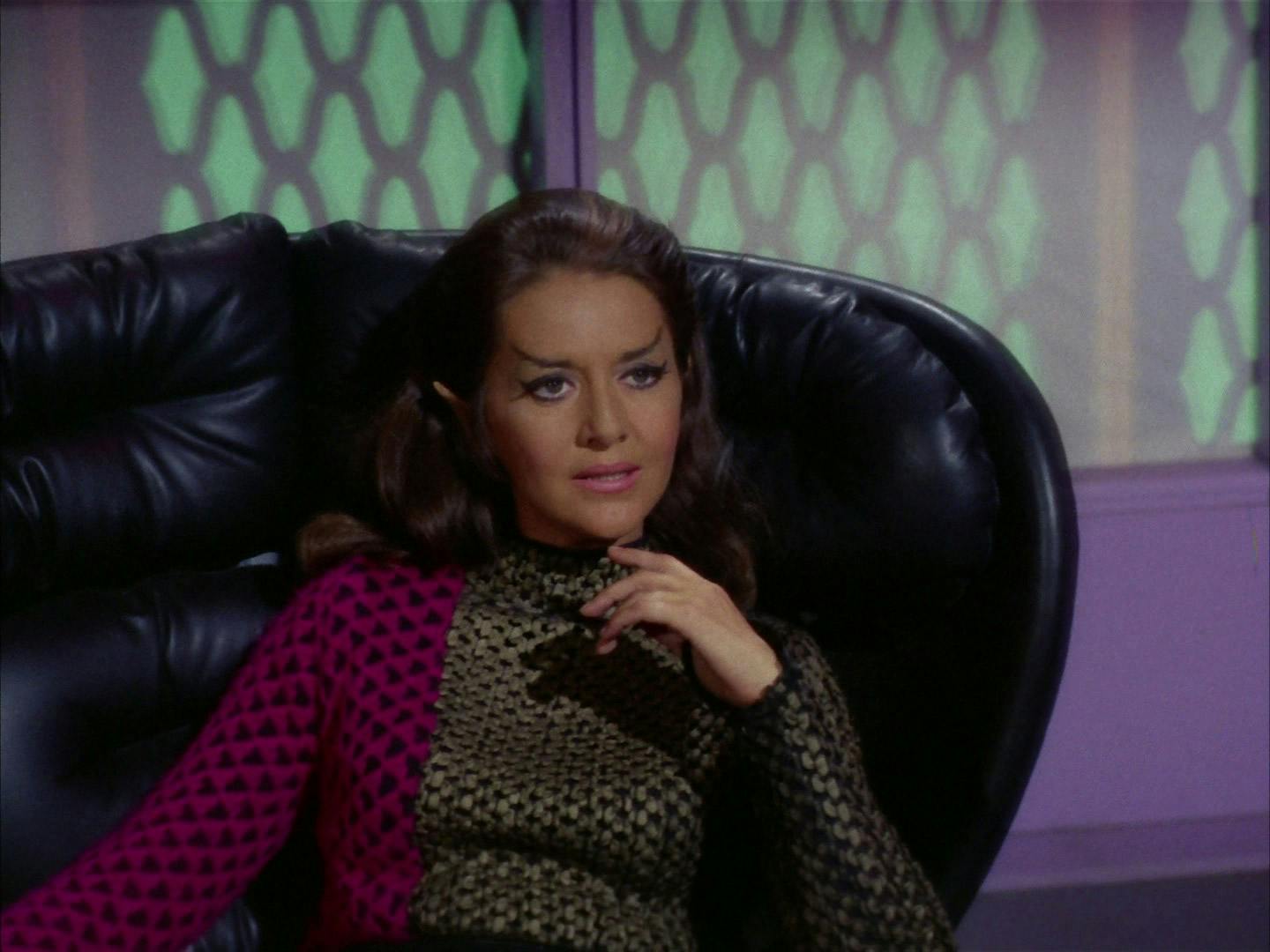
"The Enterprise Incident"
Nobody said they all had to be good guys!
While ultimately unsuccessful, the unnamed Romulan Commander from The Original Series ' "The Enterprise Incident" was cunning enough that it took the wits of both Kirk and Spock to take her down.
She had ambition and drive, as well as the courage to sacrifice herself for the good of the Romulan Empire. And did she actually get under Spock's Vulcan skin a little bit? That's up to your interpretation.
7. Lily Sloane

Star Trek: First Contact
Blow up the damn ship!
Lily Sloane, Star Trek: First Contact
It takes a lot of sand to say — to SHOUT — something like that to Jean-Luc Picard, as Lily Sloane does in Star Trek: First Contact . And to kinda be right? Even more so.
Most civilians from a pre-Warp era would just be freaking out that time traveling humans and aliens are bombarding Earth, but this sharp engineer keeps her head enough to offer military advice.
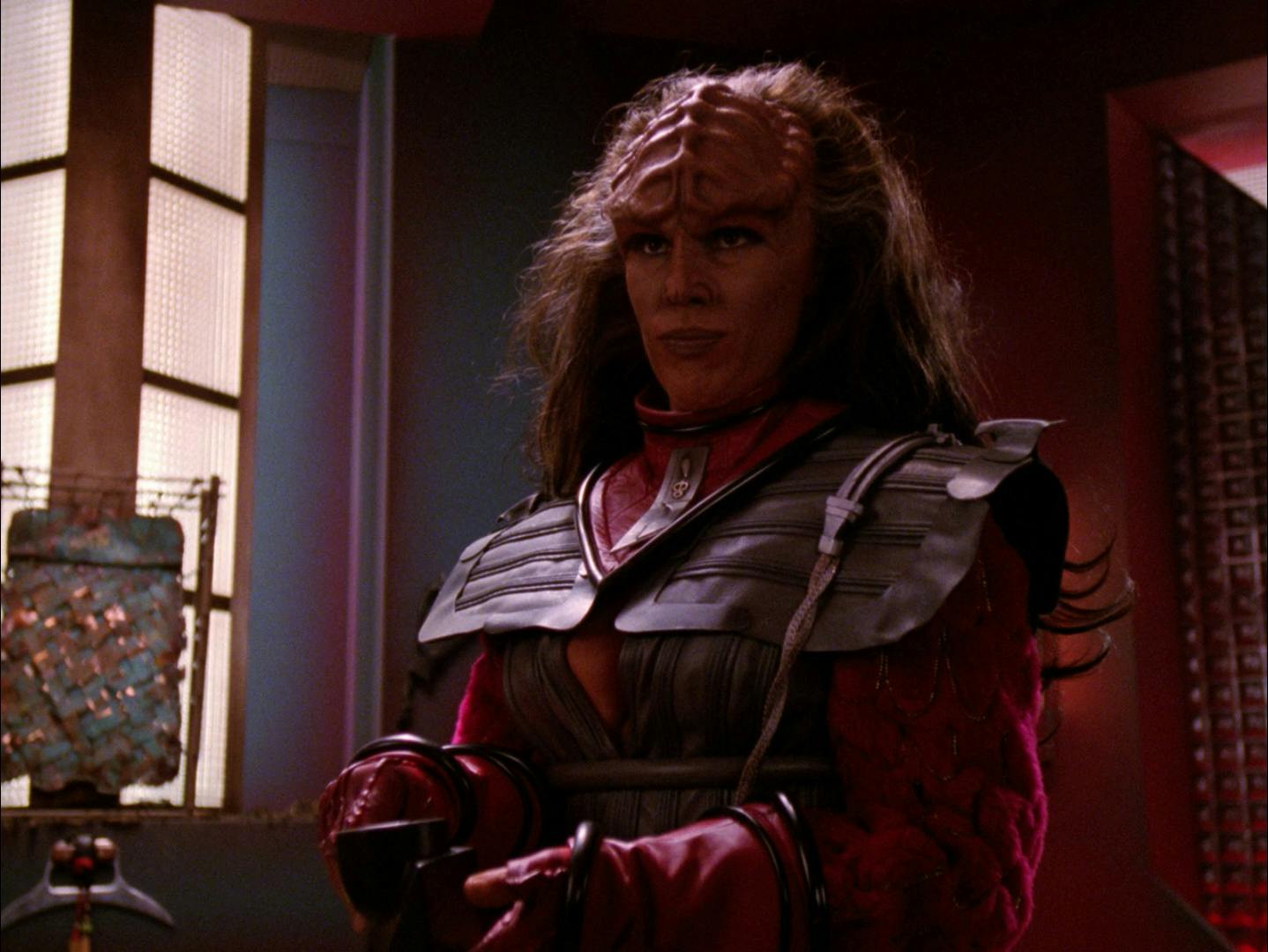
"Redemption"
The true mastermind of the Klingon Civil War, the machinations of Lursa of the House of Duras left the galaxy quaking for whole seasons. Even with all this going on, she found time to be a mother. Awww, right?
Also, her death in Star Trek Generations was cooler than Kirk's. Sadly, it was WAY cooler.
(Feel free to argue with me that Kai Winn shoulda got the "political puppet master" slot. It was a close call.)
5. Captain Rachel Garrett
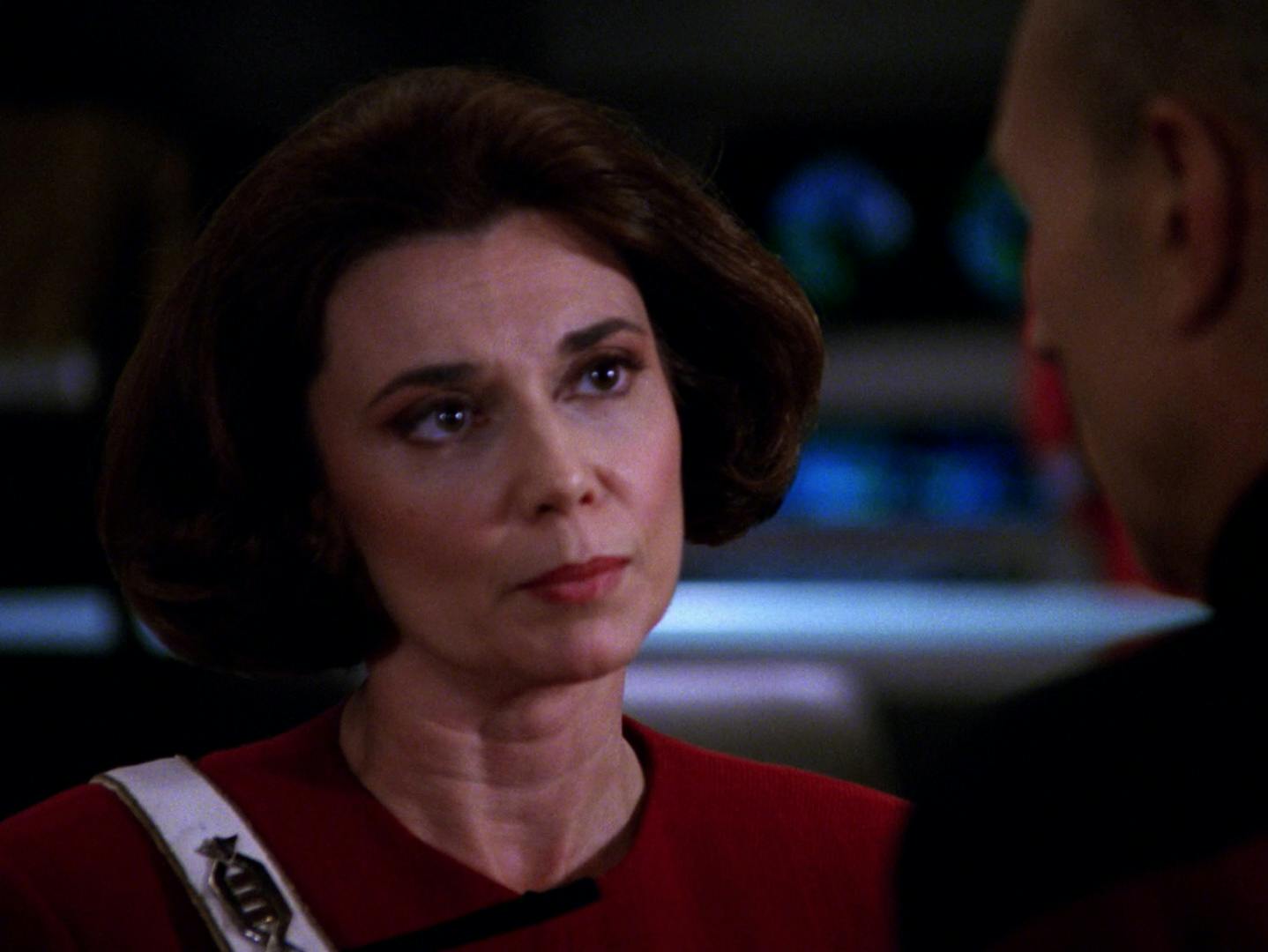
"Yesterday's Enterprise"
From Star Trek: The Next Generation 's " Yesterday's Enterprise ," a serious contender for best single episode ever in any series, we meet the captain of the Enterprise -C, Rachel Garrett . And we don't even KNOW that it is due to her bravery and sacrifice that the current timeline is as breezy and upbeat as it is today. (Guinan kinda knows, but that's complicated.)
Tricia O'Neal's strong-yet-still-feminine portrayal of a starship captain no doubt paved the way toward Captain Janeway, another reason to offer her a hero's salute.
4. Dr. Carol Marcus
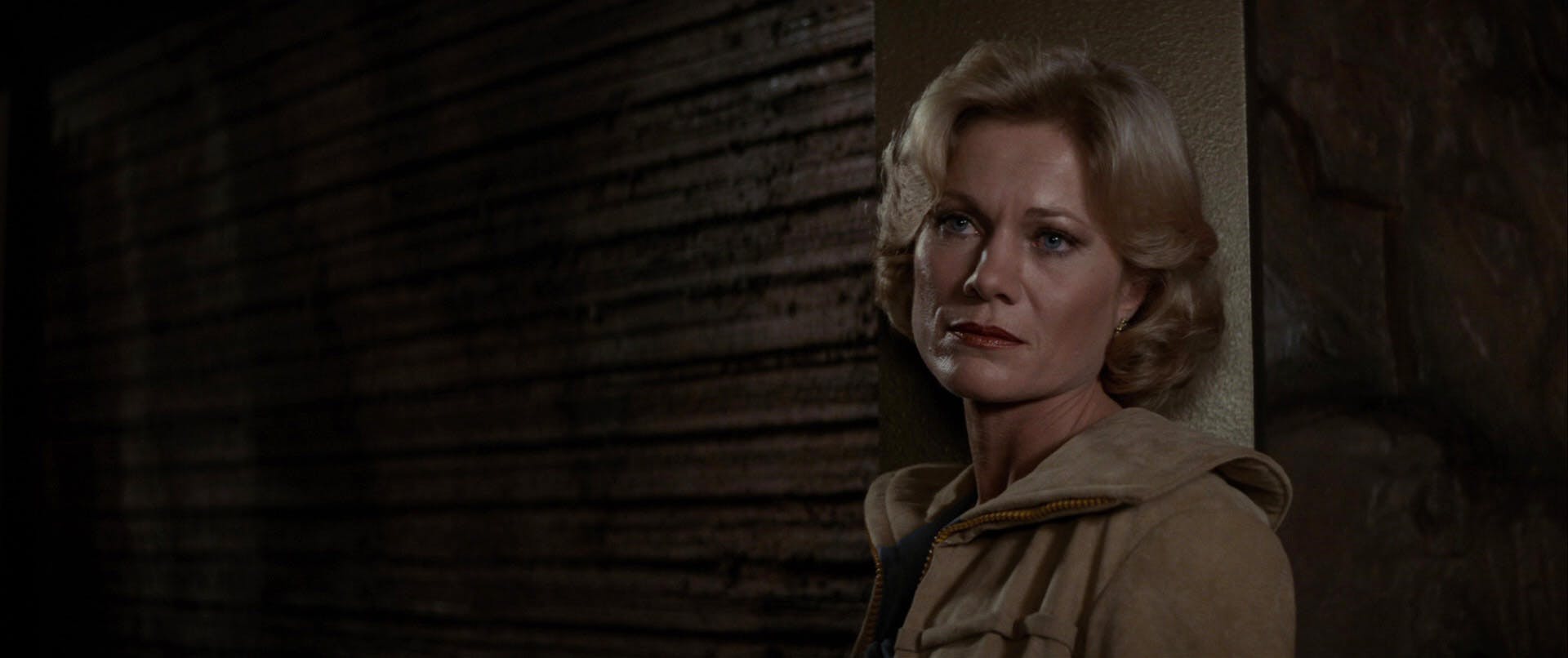
Star Trek II: The Wrath of Khan
The woman who held, at least for a time, the heart of James Tiberius Kirk. But Dr. Marcus is no mere Captain's squeeze. She is an independent woman and a brilliant scientist whose Genesis Device is so powerful it was the focus of two movies!!
She also represents one of the very few times you'll see someone have a bone of contention with Starfleet prior to the creation of the Maquis.
(Again, here's your opportunity to scream at me for leaving a different brilliant scientist, Dr. Leah Brahms , off the list. This is hard work, people! And thankless, too. I felt the heat the other day for not including the Salt Vampire from TOS or the corpses from TNG ’s “ Night Terrors ” in my column about Trek ’s freakiest moments.)
3. Number One

"The Cage"
Captain Pike's steady-as-a-rock first officer, Number One, was a brilliant tactician who wasn't afraid to bring out the laser cannons, or to sacrifice herself with an overloaded phaser rather than suffer indignities at the hands of the Talosians.
If you think her story ended with "The Cage," oh, how wrong you are. Drop everything and read John Byrne's fantastic comic series Star Trek: Crew to see Number One's really whacked-out adventures both pre- and post- her time on the Enterprise . Then pick up some of Peter David's New Frontier novels and focus on the Morgana Prime character. (I was there at New York Comic-Con a few years ago when David basically admitted that Morgana - Robin Lefler's mother - was actually Number One!)
In addition, Number One's adventure continues aboard Pike's Enterprise on Star Trek: Strange New Worlds .
2. Ro Laren
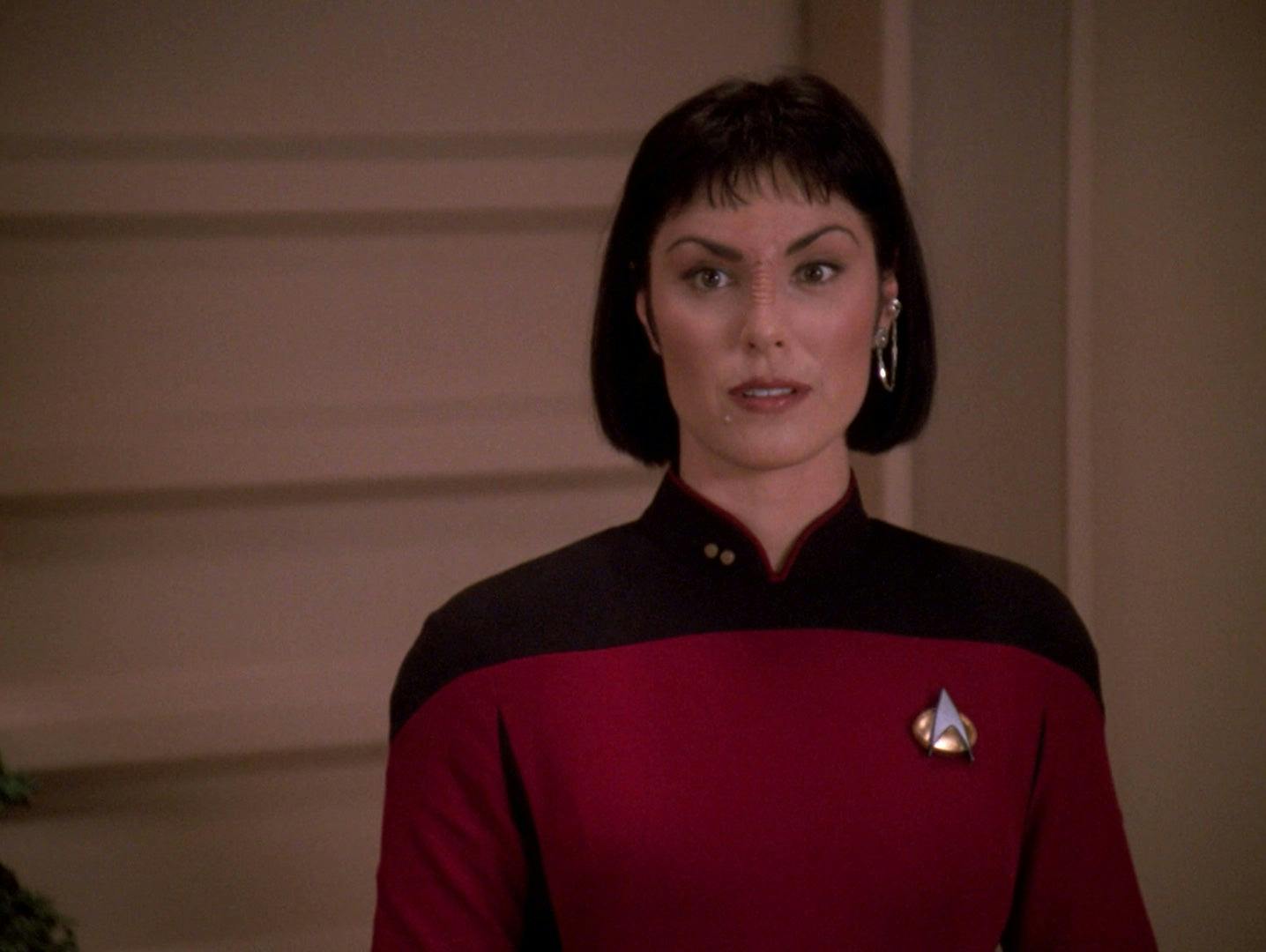
"Preemptive Strike"
[ RELATED : Everything You Need to Know About Ro Laren ]
One of the richest figures in Star Trek , the Bajoran nationalist was the first character we ever met whose antipathy toward Starfleet ever seemed justified. Still, her loyalty to Captain Picard kept her in line... most of the time.
Ro Laren was such a badass that even the woman who played her, Michelle Forbes, had to swim upstream. She rejected the offer to be a lead on Star Trek: Deep Space Nine , causing the show's producers to create the (at first) somewhat similar character of Kira Nerys. Ultimately, it worked out for the best, but, oh, if only we could glimpse into that alternate timeline!
But to hold that desire ever, don't miss Ro Laren's confrontation with Picard 30+ years after the fact in Star Trek: Picard .
1. Edith Keeler
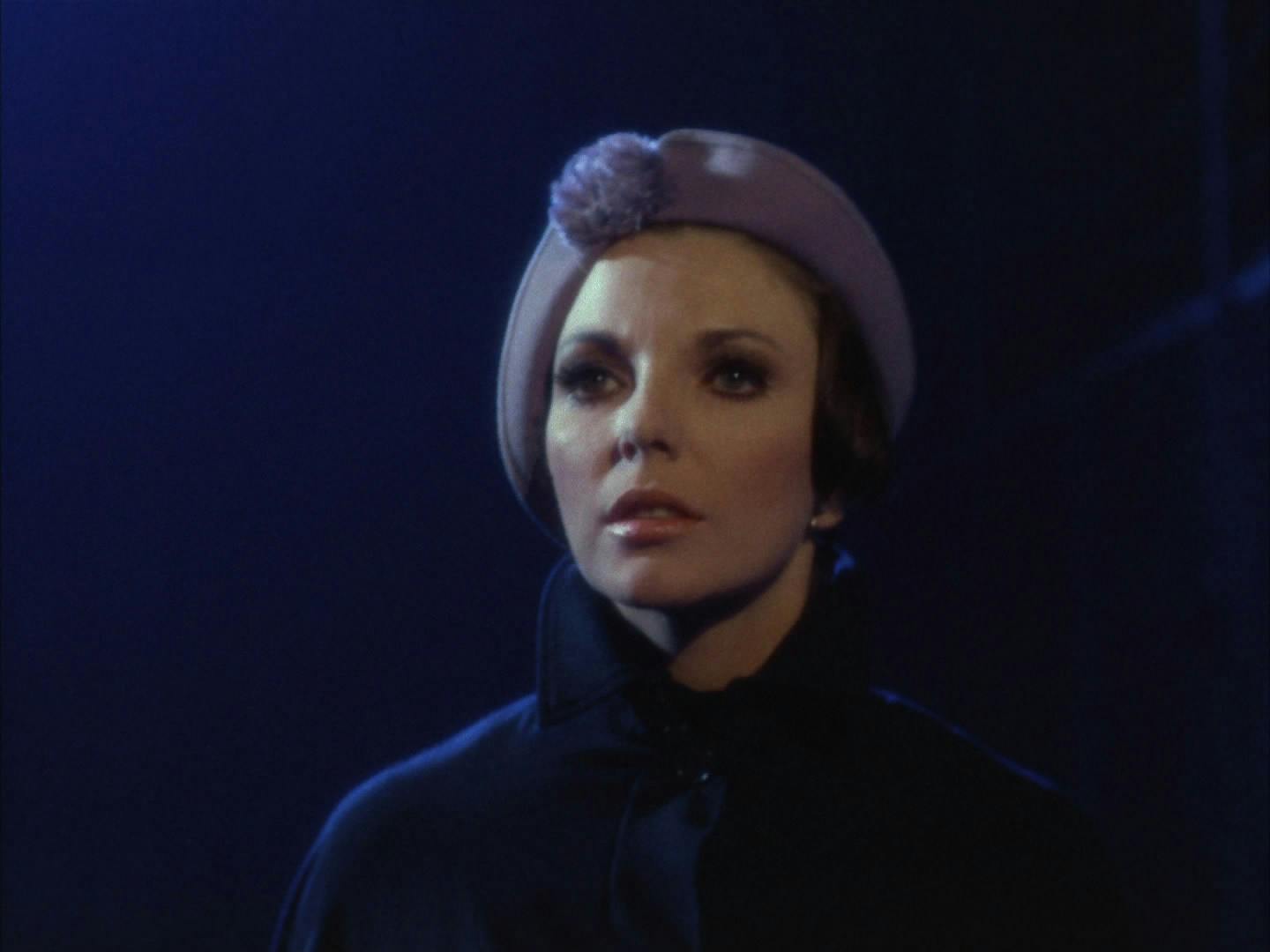
"The City on the Edge of Forever"
Imagine a woman whose soup is so powerful it could change the course of World War II.
In " The City on the Edge of Forever ," it is this loving, warm, and caring pacifist who must be silenced for evil not to conquer the world. (Blame Harlan Ellison; he's the sicko that thought of it!) Edith Keeler isn't just a character; she's a philosophical construct, a topic worthy of intellectual debate that the finest scholars could argue about for ages. And just thinking about her (and the phrase "He knows, Doctor. He knows.") is enough to send an army of Star Trek fans blubbering.
Get Updates By Email
This article was originally published on Januarr 15, 2012.
Jordan Hoffman is a writer, critic and lapsed filmmaker living in New York City. His work can also be seen on Film.com, ScreenCrush and Badass Digest. On his BLOG, Jordan has reviewed all 727. On his BLOG, Jordan has reviewed all 727 Trek episodes and films, most of the comics and some of the novels.
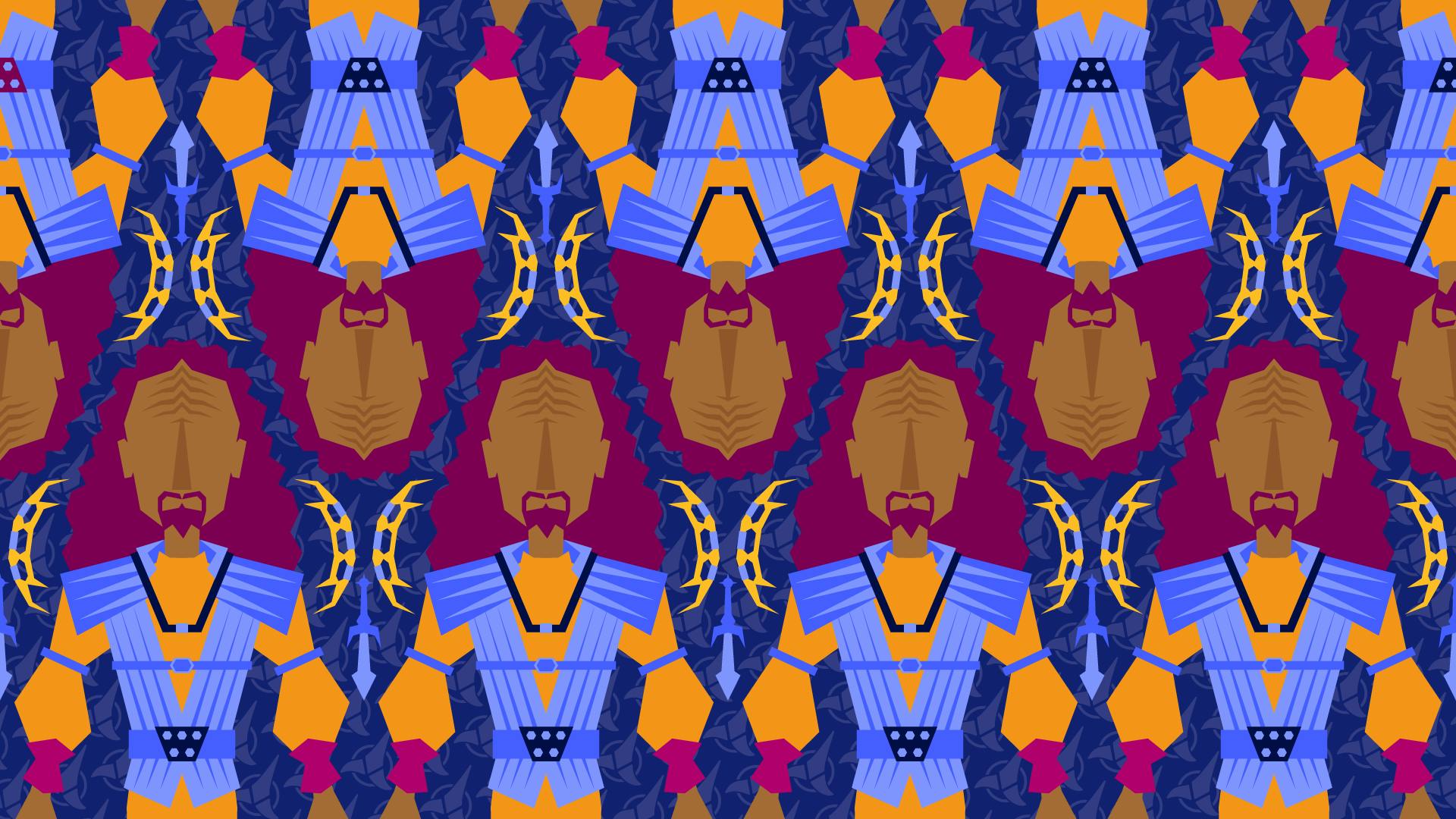
By providing your information, you agree to our Terms of Use and our Privacy Policy . We use vendors that may also process your information to help provide our services. This site is protected by reCAPTCHA Enterprise and the Google Privacy Policy and Terms of Service apply.
The 30 Most Influential Black TV Characters of All Time
Team tvline.
- Share on Facebook
- Show more sharing options
- Submit to Reddit
- Post to Tumblr
- Share on LinkedIn
- Share on WhatsApp
- Print This Page
A science fiction icon. A bespectacled, suspender-wearing nerd. A reality-TV legend. A history-making addition to the Arrowverse.
For nearly as long as the medium has existed, television has introduced us to iconic Black characters that forever changed the pop culture game. In celebration of Black History Month, it feels only right to recognize how TV — and its viewers — have been profoundly impacted by the 30 fictional alter egos listed below (sorted alphabetically by show title).
Not every character in our celebration was the first to accomplish a particular milestone, though many of them did leave glass ceilings shattered and boundaries pushed. The Jeffersons ‘ Helen Willis, for example, served as half of TV’s first interracial couple, while Scandal ‘s Olivia Pope was the first Black female protagonist of a primetime network drama in nearly 40 years.
But even without a superlative next to their names, all 30 of these characters had a major influence, whether they paved the way for similar archetypes in future TV series, or made Black viewers feel seen and heard by their representation on screen.
Scroll through our list of these 30 distinguished characters below, from The Wire ‘s Omar Little to Rugrats ‘ Susie Carmichael, then drop a comment with the small-screen icons you’d like to honor.
President Palmer, 24

Portrayed By: Dennis Haysbert
His Impact: Haysbert’s POTUS was not pop culture’s first Black Commander in Chief, but he was arguably its most impactful. From his introduction in the Fox drama’s 2001 pilot through to his exit five seasons later, David Palmer normalized the concept of a Black president for 10 million-plus weekly viewers — and possibly changed the course of real-life political history in the process. Three years later, America would elect its first Black president in the similarly elegant and principled Barack Obama. As Haysbert himself acknowledged to TV Guide back in 2008: “[Palmer] did open [the public’s] minds and their hearts a little to the notion… that a Black man could be President of the United States.” — Michael Ausiello
George Jefferson, All in the Family/The Jeffersons

Portrayed By: Sherman Hemsley
His Impact: Only one man could lock horns with the formidable Archie Bunker and actually come out on top: George Jefferson, who was every bit as hardheaded and loudmouthed as his next-door nemesis. Brought to vivacious life by Hemsley, George was such a breakout character on All in the Family that he landed his own spinoff, The Jeffersons , with George and his wife Weezy movin’ on up to a dee-luxe apartment in the sky. (It just ran for 11 seasons, no big deal.) A decade before The Cosby Show , George was a wealthy, successful Black man living his best life in the big city… which, back then, was a downright revolutionary concept. — Dave Nemetz
Catwoman, Batman

Portrayed By: Eartha Kitt
Her Impact: With swiveled hips and that distinctive, raspy voice, Kitt sauntered her way into the zeitgeist as one of the most iconic renditions of the character. Kitt’s Catwoman exuded playful mischief, wielding her sexuality like a finely tuned weapon while plotting against the caped crusaders. As the actress’ daughter Kitt McDonald Shapiro told Closer following her death, “She was one of the first really beautiful Black women — her, Lena Horne, Dorothy Dandridge — who were allowed to be sexy without being stereotyped.” — Keisha Hatchett
Bernie Mac, The Bernie Mac Show

Portrayed By: Bernie Mac
His Impact: Listen up, America: This guy was no Cliff Huxtable… and that’s a good thing. Mac parlayed his stand-up success into a self-titled Fox sitcom that was just about the polar opposite of The Cosby Show , offering a rowdy, realistic counterpoint to Cosby’s squeaky-clean family dynamics. Bernie had to take care of his sister’s three kids while she went to drug rehab, and while his parenting style was strictly tough love — he often threatened to whup some sense into them — he also had a soft side underneath that grumpy exterior. Bernie may not have won any Father of the Year awards, but as he showed for five seasons, even a flawed parent can raise kids right. — D.N.
Clair Huxtable, The Cosby Show

Portrayed By: Phylicia Rashad
Her Impact: Bill Cosby’s sordid #MeToo rap sheet may have tarnished The Cosby Show ‘s legacy, but it in no way blunted the impact of the NBC comedy’s towering matriarch. Rashad’s Clair — an eloquent, quick-witted, career-driven disciplinarian with zero tolerance for BS — elevated the “sitcom wife” trope to new heights. And she did it in front of 40 million weekly viewers. — M.A.
Dominique Deveraux, Dynasty

Portrayed By: Diahann Carroll
Her Impact: Primetime’s first Black actress to headline a series about a character who was not a servant — Julia ’s Julia was a nurse; more on her in a bit — Carroll would go on to make history again. In 1984, she achieved her goal of playing TV’s first Black bitch when she was cast as Blake Carrington’s surprise half-sister in Season 4 of the hit sudser. For the next three years, the glamtastic chanteuse traded barbs with catty Alexis and paved the way for hellions like Empire ’s Cookie Lyon and The Haves and the Have Nots ’ Veronica Harrington. — Charlie Mason
Jane Foster, East Side/West Side

Portrayed By: Cicely Tyson
Her Impact: With Tyson’s casting on the CBS series, she became the first Black actress to co-star in an American broadcast drama. And though East Side/West Side only lasted one season at the Eye Network in the early 1960s, Tyson’s role as secretary Jane Foster paved the way for many other boundary-breaking protagonists on this list — especially when the series so often shined a light on race relations and the Black experience (an often-uncomfortable light that may have led to the show’s demise). Though Jane wasn’t given the meaty storyline material that lead character Neil Brock was, she still left her mark as an assertive, independent woman who blazed an important trail on the small screen. — Rebecca Iannucci
Cookie Lyon, Empire

Portrayed By: Taraji P. Henson
Her Impact: Fox’s hip-hop drama would not have been the breakout success it was were it not for Henson’s wholly original anti-heroine, who exploded on the scene in 2015 like an M-80 on steroids. As comfortable calling the shots on the streets as she was in the boardroom, Cookie was a study in spectacular contrasts. As Empire scribe Attica Locke noted to NPR in the wake of the series’ launch, “Her type of humor, her type of wisdom, is being showcased in a way that I don’t think we’ve seen in a Black character on TV.” — M.A.
Rue Bennett, Euphoria

Portrayed By: Zendaya
Her Impact: The HBO original tackles issues of abuse, addiction, grief and teenage experiences through the lens of the imperfect main character Rue. She may not be the best role model, but her experiences are real and paint a different account of addiction through a biracial and queer female character. Although Rue was inspired by series creator Sam Levinson, who is white, and his personal battle with addiction, Rue’s experience is genuine to Black people confronting this same issue. As Vox’s Nylah Burton pointed out , “ Euphoria has taken a huge step in [the] direction by portraying a Black girl character who, despite her illness, remains someone we root for.” — Erianne Lewis
Frank Pembleton, Homicide: Life on the Street

Portrayed By: Andre Braugher
His Impact: Cop shows are one of TV’s sturdiest genres, but Black cops rarely headed up an ensemble before Frank Pembleton picked up a badge. Played with exceptional fire and clarity by Braugher — the role won him his first Emmy — Pembleton was a relentless investigator known for his ability to squeeze confessions out of suspects in the interrogation room. Homicide was decidedly an ensemble piece, but Pembleton was the breakout star, launching Braugher’s illustrious TV career and setting a very high bar for Black TV cops to follow. — D.N.
Steve Urkel, Family Matters

Portrayed By: Jaleel White
His Impact: The Winslow family may have found their geeky next door neighbor to be a nuisance, but Steve Urkel was so popular with viewers of the ABC/CBS sitcom that he went from being a supporting recurring character in Season 1 to series regular in the second season. From there, his influence only grew, with a look and a catchphrase (“Did I do that?”) so iconic that it’s still referenced in pop culture to this day. And when he wasn’t professing his love for Laura Winslow or causing accidents, Urkel was paving the way for portrayals of intelligent Black nerds who proudly march to the beat of their own drum. — Vlada Gelman
Iris West, The Flash

Portrayed By: Candice Patton
Her Impact: It was no small thing when Patton ( almost exactly nine years ago ) landed the role of Iris West, who in the comic books had been white with red hair. “I went into it having the expectation that, obviously, people were going to be upset” with the casting, Patton told TV Guide in 2020. “I remember our executive producer at the time saying [to] maybe sit offline for a couple of days, which I did.” But nearly as fast as Barry Allen runs, Patton made her indelible mark on Iris, whose Black identity has shown through more and more in recent years. (In Season 6, Patton got to wear her natural curls, and in the coming season, Iris is shown sleeping in a bonnet for the very first time.) “Once I was on Twitter, watching the show with everyone, and seeing young girls see themselves in Iris… it was really an overwhelming feeling,” the Arrowverse’s first Black female lead told TV Guide. “I’m saying these lines and trying to do the best I can, and it’s just icing on the cake that I’ve been able to be a part of something so iconic and inspiring.” — Matt Webb Mitovich
New York, Flavor of Love

Portrayed By: Tiffany Pollard
Her Impact: Pollard aka New York vied for Flavor Flav’s love on the VH1 series, and reality TV was never the same. Confident, authentic, and hilarious, Pollard gave us a treasure trove of memorable sound bites: Who could forget the moment Hottie compared herself to Beyoncé, only for Pollard to hit back that she looked like Luther Vandross? Her larger-than-life personality was the gift that kept on giving, so much so that she was brought back for Flavor of Love Season 2 and even landed her own spinoff, I Love New York (which birthed the offshoot Real Chance of Love ). Pollard went on to deliver more unforgettable TV moments on shows like Celebrity Big Brother and New York Goes to Work , but it was Flavor of Love that made her a household name. — K.H.
Uncle Phil, The Fresh Prince of Bel-Air

Portrayed By: James Avery
His Impact: The NBC sitcom would not have had the same cultural impact without Avery’s Uncle Phil guiding the titular character through six successful seasons. A stern but caring father, he represented something different on TV: He was a privileged Black man who never forgot his humble roots, someone who could quote Malcolm X and call out social injustice while imparting invaluable life lessons that still resonate today. More than that, Phil was an exemplary dad who always showed up for his family, regardless of the circumstance. — K.H.
Issa Dee, Insecure

Portrayed By: Issa Rae
Her Impact: Keeping it real even when things got real messy, the protagonist of Rae’s 2016-21 HBO dramedy wasn’t television’s first aspirational Black heroine, nor (thankfully) has she been the last. But Malibu: Few and far between are others who have made us wince as much over their missteps, cheer as loudly for their triumphs and root as hard for their evolutions from insecure to confident. So not a wine-down goes by that we don’t raise a glass to the inventor of the party Lyft. — C.M.
Helen Willis, The Jeffersons

Portrayed By: Roxie Roker
Her Impact: As Helen Willis, wife of Franklin Cover’s Tom, Roker broke ground as half of TV’s first interracial couple. The Willises lived upstairs from the CBS hitcom’s eponymous George and Louise, and their daughter Jenny eventually wed the Jeffersons ‘ son Lionel. Series creator Norman Lear (per his memoir Even This I Get to Experience ) told Roker up front that Helen’s husband “would be seriously white and their marriage would be as real as any other on TV.” He also made sure the actress knew what she was getting into — though perhaps for naught! “I cautioned her that television had never seen a mixed couple in a real relationship, never seen them kiss on the lips and sleep in the same bed, and there was no way we could foretell the audience reaction,” Lear recalled in his memoir. Roker famously responded by retrieving from her purse a photo of her with her white, Jewish husband, Sy Kravitz. “‘We’ve been married for nearly 15 years,'” Lear quoted Roker as saying. “‘Does this answer your question?'” — M.W.M.
Julia Baker, Julia

Her Impact: This NBC comedy (which premiered in September 1968 and ran three seasons) has been heralded as the first U.S. TV series to chronicle the life of a Black professional woman, and Carroll went on to become the first Black woman to earn an Emmy nomination in her category (though The Ghost & Mrs. Muir ‘s Hope Lange wound up claiming the prize). Yet along with such plaudits, some criticized the series as “television fantasy” with its depiction of a glam, widowed single mom. Speaking to that incongruity, Carroll told TV Guide in December 1968, “The needs of the white writer go to the superhuman being. At the moment, we’re presenting the white Negro. And he has very little Negro-ness.” Carroll decades later told PBS’ The HistoryMakers that while some Black viewers were “angry” with Julia for not “telling it like it is,” the premise of a child being raised by an unwed nurse “was very close to the way I was brought up.” Though the stress that came with breaking such ground eventually landed her in the hospital, Carroll said that Julia “really did make a difference” in that “the studio had to pay attention to the fact that this made money, this attracted sponsors. And when the community, for the most part, is very pleased with what you’re doing and it involved a Black woman as a star…. It was a memorable moment.” — M.W.M.
Maxine Shaw, Living Single

Portrayed By: Erika Alexander
Her Impact: Not only did lawyer Maxine (aka The Maverick) exude confidence and strength both inside and outside of the courtroom, but she was a singular Black woman who always advocated for herself and never wasted her time on BS, inspiring generations of women with her power and success. And given how Alexander’s performance brimmed with energy and eccentricity, it’s no surprise that she won two NAACP Image Awards for Outstanding Lead Actress in a Comedy Series. — Nick Caruso
Florida Evans, Maude/Good Times

Portrayed By: Esther Rolle
Her Impact: After two seasons as the outspoken, self-confident housekeeper on Norman Lear’s Maude , Florida would be spun off as the matriarch of TV’s first series to feature an intact Black nuclear family. Though the popularity of Jimmie Walker’s “dyn-o-mite!” J.J. would make him the de facto star of the show, it was Rolle’s turn as the tough-as-nails homemaker that kept the series grounded, even after TV husband John Amos was killed off in Season 4. Rolle bailed on Season 5 due to creative differences, but would return for the sixth (and ultimately final ) season, cementing her status as one of the all-time great TV moms. — Ryan Schwartz
Moesha Mitchell, Moesha

Portrayed By: Brandy Norwood
Her Impact: If a young white girl in the ‘90s wanted to watch a TV show centered around someone who looked like her, the options were endless. This wasn’t quite the case for young Black girls, whose choices were considerably more limited. Enter Moesha , a teen sitcom that attracted and inspired an audience desperate to see themselves reflected on television. In particular, the title character’s style — from her effortlessly fly wardrobe to her enviable box braids — resonated with fans. “The show’s vision was of a cool young Black girl who was brave and creative in her life, and that [carried] over in her style,” co-creator Sara Finney-Johnson told Vice’s Garage in 2019 . As Norwood later recalled in an interview with Essence , “So many women tell me, ‘I never saw myself on television before Moesha .’ It made brown-skinned people feel like they could do anything.” — Andy Swift
Carla Gray, One Life to Live

Portrayed By: Ellen Holly
Her Impact: Days of Our Lives ’ Abe Carver, All My Children ’s Angie Hubbard, The Young and the Restless ’ Drucilla Barber… they all owe a debt to Carla, who following the much-missed ABC soap’s 1968 debut became daytime’s first non-white character to carry a years-long frontburner storyline. Mind you, no one knew at first that Carla was Black. She passed herself off as Italian-American and sparked racist outrage by dating a Black doctor. Years later, she and true love Ed Hall tied the knot in daytime’s first on-screen wedding of two Black characters. — C.M.
Sophia Burset, Orange Is the New Black

Portrayed By: Laverne Cox
Her Impact: Sophia was, and remains, among the most dynamic transgender characters TV has ever seen. Viewers witnessed the inmate go to hell and back, as she railed against a reduction in her hormone dosage and endured a stint in solitary confinement. But she came out of Litchfield even stronger and went on to open her own salon. In a 2020 interview with TV Insider , Cox — who was the first transgender person to be nominated for a Primetime Emmy in any acting category — stated just how important it was for audiences to see a Black trans woman achieve her dream. “The trans people in real life need to see it. Non-trans people in real life need to see that,” she said. “If we can see it on screen, then we can begin to imagine it. That’s what Sophia’s evolution and her ending… means for me.” — R.S.
Pray Tell, Pose

Portrayed By: Billy Porter
His Impact: Black. Gay. HIV-positive. Belonging to any of these communities in the 1980s would present individual challenges, so of course Pose decided to blend all three qualities into one fabulous package — and thank God it did. A boisterous, vibrant ballroom caller, Pray Tell touched the hearts of those around him, as well as those watching from home, simply by existing as his authentic self. “The stories that get green-lit with Black men are generally stories about us killing each other very often,” Porter told People in 2019. “So it’s nice, it’s beautiful and it’s time. It’s time to see a different story. It’s time for the world to understand that there are all types of people on the planet, and we do different things, and we can honor each other’s humanity inside of that.” That this role earned Porter his first Emmy in 2019 is merely the icing on the cake. — A.S.
Susie Carmichael, Rugrats

Portrayed By: Cree Summer
Her Impact: With the introduction of Susie (and her family) in the Season 2 episode “Meet the Carmichaels,” Rugrats brought in a memorable, multi-faceted character who went on to become a crucial part of the series, at a time when young Black girls often went unrepresented in animation. The show found ways to celebrate and embrace Susie’s Blackness — from the braids and barrettes she rocked, to the 2001 Kwanzaa special that explored her family’s culture more deeply — while also never defining her by it. Instead, Susie was a kind, loyal friend who wasn’t afraid to give spoiled brat Angelica a piece of her mind, and a tremendously cool toddler who allowed Black children to see themselves reflected in one of the most popular kids’ series of the time. — R.I.
Olivia Pope, Scandal

Portrayed By: Kerry Washington
Her Impact: The first Black woman to anchor a TV show in more than four decades, Olivia was a character the likes of which we had never before seen in pop culture. Viewers were able to “imagine what it would be like to see a Black woman as the most powerful [person] in America — and we needed it,” observed Candice Benbow in Essence in the wake of the ABC thriller’s 2020 series finale, adding that Olivia’s flaws were just as groundbreaking as her attributes. “Black women deserved to see themselves as complex and messy. Because we are.” — M.A.
Benson DuBois, Soap/Benson

Portrayed By: Robert Guillaume
His Impact: Following his scene-stealing, two-season run as the Tates’ acerbic butler on ABC’s Soap (for which he won his first Emmy), Guillaume was deemed spinoff-worthy and headlined a sitcom where his Benson DuBois served as the head of the household for (daft) Gov. Eugene X. Gatling (played by James Noble). What made Benson stand out as a character is what ultimately sold Guillaume on the potentially stereotypical role. As he very candidly noted in a Television Academy interview , a character such as a wise-cracking servant was “the very thing I don’t want to play, the very thing I got into the business to eradicate if I could.” But once he saw the scripts and found a way for Benson to passive-aggressively snark at Chester Tate et al., to “make people laugh without being a buffoon and without being stupid or servile,” “it took the onus off the character and I began to feel more comfortable…. It was written against type, and I was able to embody that.” — M.W.M.
Nyota Uhura, Star Trek

Portrayed By: Nichelle Nichols
Her Impact: Before Gene Roddenberry’s visionary NBC series debuted in 1966, science fiction was a blindingly white genre in film and television. But Nichols’ trailblazing turn as the Enterprise’s communications officer let Black viewers know that there was a place for them in the stars. Her mere presence onboard inspired a generation of Black kids; when Nichols considered leaving the show, no less than Martin Luther King Jr. (!) urged her to stay. Uhura was the first in a long line of Black sci-fi icons, including Next Generation ‘s Whoopi Goldberg, who remembers seeing Uhura on Star Trek as a kid and telling her family, “There’s a Black lady on television, and she ain’t no maid!” — D.N.
Randall Pearson, This Is Us

Portrayed By: Sterling K. Brown
His Impact: As a Black man raised by an adoptive white family, Randall was continually caught between two worlds. Rather than shy away from that painful (and ongoing) reality, the show examined it closely: how Randall’s part in the Pearson family dynamic was simultaneously loving and fraught, and how the most painful othering can be perpetrated by those who love us most deeply. Over the series’ run, Randall ultimately found strength in his identity as a Black man, lending him a self-assurance that maybe even helped him reach the highest office in the land . — Kimberly Roots
Michonne Hawthorne, The Walking Dead

Portrayed By: Danai Gurira
Her Impact: Adapted from Robert Kirkman’s popular comic-book series for the long-running AMC drama, the post-apocalyptic badass was, from the moment she appeared on screen with her katana and jawless zombie “pets,” iconic. And lest you doubt her legendary status for a second, may we remind you that the future MCU star’s character not only transcended her graphic-novel trajectory to become endgame for hero Rick Grimes, she’s being brought back for the 2024 limited series that will wrap the characters’ love story. — C.M.
Omar Little, The Wire

Portrayed By: Michael K. Williams
His Impact: Seeing a Black man mired in the world of drugs and guns on TV is not exactly a novel sight… but there was nothing ordinary about Omar Little. As exquisitely portrayed by Williams — how he didn’t even get an Emmy nomination , we’ll never know — Omar was a crafty stick-up man who played both sides of the fence in a vicious gang war, roaming the streets of Baltimore like a lone wolf. He was also a gay man who loved his grandmother and lived by a strict moral code. The rich complexity infused into Omar by Williams and series creator David Simon was virtually unparalleled by any TV character, Black or otherwise, and he reminded us that inside every tough street gangster beats a tender heart. — D.N.
Cancel reply
104 comments.
Email * Your email address will not be published. We will notify you when someone replies.
Avery Brooks Benjamin Sisko should have also garnered a place on this list. Being a single dad and a positive role model was very unique. He showed tenderness serious resolve and could be a badass captain also the first person of color to be a captain on his own show.
Geordi and Tuvok were also groundbreaking in their own ways, but if the list was going to pick one pioneer from the entire franchise, it had to be Uhura.
Exactly Uhura forever. Second Julia.
This was the first character that I thought of.
Me, too! I absolutely loved him!
Yes! Good call.
Yes yes yes. He was a game changer
Hawk. So popular on Spenser for HIre, he had a spinoff. Didn’t last long, but still…
Thank you for the shout-out to Sisko. A fantastic character with tremendous depth and breadth across the seasons of DS9, and an incredibly positive example of a single father.
Absolutely. By far the most complex captain on Star Trek and so wonderfully portrayed.
You read my mind. I have to disregard this list without him on it.
You lost me at Tiffany Pollard.
I totally agree. Reality stars, especially this one, don’t belong on a list of TV characters as portrayed by accomplished actors. Interesting you won’t distinguish positive TV character Cliff Huxtable from the notorious actor Bill Cosby but you put Tiffany Pollard, who is only being herself, on the list. You may find Pollard amusing however, IMO, she’s embarrassing to watch.
Exactly! I was like even with Bill’s disgusting behavior I still like Cliff and still enjoy watching the Cosby Show because it meant to much back in the day.
totally agree Bill was an amazing comic and actor
I agree with 100000% They could have put Levar Burton on there for the original Roots or even when he was on Star Trek. New York lmao
Did I quick-scroll past Annalise Keating somehow?
She certainly wouldn’t feel out of place on the list, but I’m not sure she’s a must-have. It was a towering performance, for sure (the only kind that Viola Davis knows how to deliver), but I don’t know that Annalise achieved the kind of iconic cultural impact as some of these others. HTGAWM was a bit more niche.
Viola Davis is iconic, but Annalise Keating isn’t lmao. She’s a powerhouse yet hot mess of a character to watch if you like soapy drama, but the character wasn’t culturally influential.
Guess she was forgotten about, but still great at what she did another reiteration of Olivia Pope without the presidential attachments.
I believe Valerie from “Josie and the Pussycats” was the first black main character in a mainstream animated series.
What about Andre Braugher for B99 or Michael K. Williams as Chalky White from Boardwalk Empire
He was better on Homicide. Hence what he was included for.
And Michael K. Williams is more known for the Wire where he played Omar which is on the list.
The cast of Roots.
Apparently, someone from a VH1 reality show is more influential than Kunta Kinte. Also, this list’s lack of even a cursory mention of Beulah shows these writers’ recency bias.
The more historic characters here seem right – although it could be argued that if it is a list of characters, not actors, Cliff Huxtable would be there. I know why he isn’t, but aren’t you trying to alter history.
Some of the more modern ones seem to miss. To be influential requires an audience, and shows like Pose or The Flash really didn’t command large audiences. Maybe a Wallace Boden or Kevin Attwater – strong black characters with ten times the audience.
The reason Candice Patton’s Iris West is influential is because of the impact her casting had on future iterations of Iris West, including the DC movies. Even The Flash comics have started writing the character as a black woman.
And even if Pose didn’t have the biggest audience, it’s a really big deal that the show garnered so much love from the biggest awards organizations. The fact that Billy Porter was winning Emmys for his portrayal of a black queer man learning to live with being HIV+ at that time when so many renowned portrayals of the AIDS crisis focus on white men is a big deal. Black communities were impacted by the crisis in the 80s, but we rarely see that. Pose puts their experiences and resiliency at the forefront.
A show doesn’t have to have NBC procedural level ratings to be impactful. Neither Wallace Boden or Kevin Attwater are impactful characters or portray something insightful or different from a hundred other black male TV characters.
Detective Frank Pembleton, portrayed so beautifully by Andre Braugher, is my favourite TV character of all time.
To this day, I recall long speeches that he made to Tim (his partner) about truth being the most important element in a homicide case. To me, Frank WAS Homicide: LOTS which is really saying something since the rest of the ensemble cast was filled with unbelievably fantastic actors. But the thing was, IMPO, Andre Brauer was simply better. He pulled focus on screen and never lost it. I adored his character (in the way one can adore a stiffly upright, totally personal, doesn’t like to let people inside type of character).
Clarence Gilyard Jr. who co-starred along with Chuck Norris on Walker, Texas Ranger and also appeared on Madlock.
Robert Guillaume as Benson…oh how I miss those days. If ever a sitcom needs to be brought back on a streaming service, it’s this one.
Benson comes over the air. It is also on one of the free streaming services
Lisa on Sister Sister!
Teresa Graves
Not the best, you left off Fred Sandford….Redd Foxx!
Bernie Mac. a gutter comedian. Never
Greg Morris who played Bernard “Barney” Collier on Mission Impossible (1966-1973) should have had a spot on this list. As a regular on the long standing show, he was the tech expert and a key member of the international MI Team.
Barney wasn’t just a secondary character, but rather he was arguably the smartest person on the team
Right, how could you possibly leave off Greg Morris? Along with Alexander Scott on “I Spy,” Barney Collier were the only black spies in 60s pop culture when spies were hot, and Barney was a role model on so many levels – patriotism, intelligence, heroism, style, confidence, I could go on and on. He also helped create modern tech culture and inspired an army of black engineering and computer science students. He is a genuine legend.
I know Bill Cosby is problematic these days, but I still think his character in I SPY—as the first the American TV drama to feature a Black actor in a lead role—deserves to be on the list more than some others (Iris in THE FLASH?).
As despicable as his actions were and are, I agree that it seems wrong to not have him on this list. Sure, give Phylicia Rashad the Cosby Show nod, I’m not mad at that as she’s a phenomenal actress. But as you said, Cosby was also the first Black actor in a lead role for “I Spy” – and if not for that, then perhaps for “Fat Albert” as the first cartoon with an all-black cast (and with Susie from Rugrats showing that cartoon characters can be included here).
It is beyond tragedy that the first black actor to win the Best Actor Emmy (more than once), and succeed in everything he did, so completely disgraced himself that he does not appear at the top of this list.
I think, since this is supposedly a list of characters and not actors, it is distorting history to pretend that Cliff Huxtable didn’t change the way the general public reacted to having not just a main black character but a show about an entire black family. Clearly, I haven’t suddenly changed my views regarding a serial rapist, but at the time the Cosby show was on tv, the show was at the top of the ratings and the character (or the actor, I guess) was seen as America’s dad, long before that was bestowed upon Tom Hanks (which of course makes ppl much less uncomfortable since he’s never — to our knowledge — done anything truly bad in his life). The talks Cliff had with his son stayed w me (at least); the anniversary put together by the entire family that I must have rewatched about 50 times was a treasure; his relationship with his wife on the show made me wish my parents were that happy. People can pretend they didn’t watch the show if they want, but it definitely had a huge impact on how America viewed people of color; and I definitely believe it was responsible for breaking the glass ceiling in so many ways by its very presence and by its total, full acceptance at that point in time. JMO.
Especially since the show was touted as having saved NBC.
Stringer Bell couldn’t make the list?
A fantastic character, but ultimately I’d agree he’s less influential than Omar, who was legendary.
As much as I swooned Stringer Bell, you are so right Omar was the man!
And oh yes, the way people are tiptoeing around the Fresh Prince because he lost his temper and punched somebody on live tv is preposterous. He certainly didn’t rape 20++ women but apparently his character can not be mentioned either, for fear that others will respond with negative comments about Will Smith. Well you can’t take back watching that show either; nor are you getting a return on all the movies you went to and enjoyed which included Will in them, so this pretense just seems silly, most esp’ly when it involves who and how people of color were able to get better and more interesting characters on tv. Cosby and Smith helped pave the way regardless of whether you are unhappy about it now. I have NO LUV AT ALL for Mel Gibson anymore but that doesn’t mean I now dislike his movie Ransom. I wouldn’t go to a new film, but I already love that one.
I understand that Bill Cosby did something that tarnishes his legacy, but to not have Cliff Huxtable on this list is ignoring reality. There are maybe 10 characters on this list more important than what he brought to TV as a groundbreaking black character. And quite frankly there’s a very strong argument for his character in I spy as well, but more importantly not having cliff makes no sense. You can do it with an asterisk but it should have been done.
100% agree. He was unquestionably “America’s dad” for most of the 80s. To say that about a black character on TV over 30 years ago is a testament to Bill Cosby’s portrayal of Cliff Huxtable. 40+ million average weekly viewers at its peak in popularity? !ncredible. He should be #1 on the list (with an asterisk separating the character from the actor who portrayed him )
Cliff Huxtable wasn’t groundbreaking really. However, Alexander Scott (Bill Cosby) on I Spy was groundbreaking as the first black actor in a lead role on a drama TV series.
The show saved NBC, he was a Dr, with an equally successful wife and he (the character) became America’s dad. So yeah I think it was groundbreaking in its own right.
Pete Dixon from Room 222?
“Easy Reader” – Morgan Freeman, “The Electric Company”, 1971-1977 “Gordon” – Roscoe Orman, “Sesame Street”, 1974-2018
100% agree as positive influences on children
I would definitely add Lee Thompson Young to this list for his work on The Famous Jett Jackson. He was the first Black kid to topline a Disney Channel series and easily became influential for me as I’m sure he was for so many other little Black kids at the time :) May he rest in peace.
Lee Thompson Young was absolute perfection on that show.
And seriously, Gordon from Sesame Street. Train a child early to love a wonderful person, and the world will be a better place.
Teresa Graves in Get Christie Love. Viola Davis for her Emmy winning and flawed character Annalise Keating. Gail Fisher in Mannix as the first black woman to win an Emmy. All these are better than listing Tiffany “New York” Pollard.
Gail Fisher gets my vote! Her life after TV was so tragic.
Most Popular
You may also like.

Screen Rant
10 star trek characters j.j. abrams introduced to canon.
J.J. Abrams' ambitious and exciting Star Trek Kelvin Timeline movies also introduce several new and vital characters to the movies' canon.
- J.J. Abrams rebooted Star Trek in 2009 with a new USS Enterprise crew and the creation of the Kelvin Timeline.
- George Kirk, Winona Kirk, and Jaylah are key characters introduced into the franchise by Abrams.
- Abrams' Star Trek Kelvin-universe movies prioritize character and crew-based tension, with notable character developments and impactful villains.
Star Trek (2009) introduced the much-loved franchise to a new audience with a successful reboot. Director J.J. Abrams’ initial space-faring feature film launched a new, superbly recast Star Trek: The Original Series crew and introduced the anything-goes alternate Kelvin Timeline. Initially introducing origin stories for the movie’s leading characters, James T. Kirk (Chris Pine) and Spock (Zachary Quinto), a series of unexpected and dramatic events soon leads to the early formation of the young, iconic USS Enterprise crew. As Kirk and Spock, Captain Christopher Pike (Bruce Greenwood), and the crew of the USS Enterprise work to overcome the universe-altering threat, a slew of familiar and new faces make spaces of significance in Federation history .
Over Abrams’ three Kelvin Timeline Star Trek movies, previously established but unseen and newly originated characters are revealed to delight or terrify audiences. The three movies’ villains devastatingly influence Federation history, substantially affecting Star Trek’s established multiverse timeline and posing dangers previously unseen. It’s important to note that Abrams’ films commendably prioritize character and crew-based tension as a primary source of conflict, resulting in subtle yet worthy character developments and heightening the impact and fall-out of each villain’s despicable drive. With a focus on these new and previously unseen faces, here’s a look at ten Star Trek characters J.J. Abrams introduced into canon .
10 J.J. Abrams Star Trek Movie Positives You Only Notice On Rewatch
10 lieutenant george kirk, chris hemsworth - star trek (2009).
Previously unseen in the Star Trek franchise, Lt. George Kirk (Chris Hemsworth) served on the USS Kelvin under the command of Captain Richard Robau (Faran Tahir). George was the youngest First Officer in Starfleet history at the age of 29 – a legacy later advanced by his son, James T. Kirk (youngest captain). Following Nero’s arrival and the subsequent murder of Robau, George Kirk was advanced to the USS Kelvin’s commanding officer. Winona Kirk (Jennifer Morrison), a fellow Kelvin crewmember and pregnant wife to George, is removed to an escaping medical shuttle when George Kirk evacuates the ship in light of Nero’s attack. With the ship’s automatic controls offline, George Kirk opts to remain on board and gives his life, manually pilot the ship into Nero's ship, the Narada, to protect the escaping shuttles.
It’s hard to overstate the significance and influence that George Kirk had on Starfleet history.
George Kirk’s youngest son, James Tiberius Kirk, was born and named moments before George’s death. In Star Trek Beyond , Captain James T. Kirk (Chris Pine) is troubled by his turning a year older than George was when he died, contrasting the reasons they each enlisted in Starfleet. Kirk says, “ He joined because he believed in it. I joined on a dare .” It’s hard to overstate the significance and influence that George Kirk had on Starfleet history, as well impact on the life choices and development of his youngest son. Making the ultimate sacrifice to aid in the survival of others, George Kirk makes a bold and explosive entrance into Star Trek legend.
9 Winona Kirk
Jennifer morrison - star trek (2009).
Winona Kirk (Jennifer Morrison) was the wife of Lt. George Kirk and mother of Captain James T. Kirk (and Jim's older brother George Samuel Kirk ). In 2233, pregnant with James, Winona Kirk, in the final stages of her pregnancy, was evacuated to Medical Shuttle 37 during the Romulan mining vessel Narada’s attack on the USS Kelvin. Advanced to acting Captain, George Kirk ordered the crew’s evacuation and Winona was transferred via wheelchair. The baby was born prematurely during the attack, named “James Tiberius” after his grandfathers, moments before George Kirk piloted the Kelvin into the Narada to protect the escaping shuttles.
Winona Kirk's significant and developing character adds further layers to the Kirk family dynamics.
When Winona returned to Earth as a widow , she settled to raise her young family in Riverside, Iowa. She subsequently returned to working for Starfleet, spending periods off-planet during her sons’ youth. Though Winona’s later relationship with Jim is not (yet) specified, Captain Kirk’s comment to Dr. McCoy (Karl Urban) in Star Trek Beyond that he planned to call her “ on the day ” (his birthday and anniversary of his father’s death) suggests at least a degree of emotional complexity and trauma. In Star Trek (2009), Winona Kirk is seen on-screen for the first time. Winona Kirk’s significant and developing character adds further layers to the Kirk family dynamics and character histories, and the franchise’s rich overall lore.
8 Captain Richard Robeau
Faran tahir - star trek (2009).
Introduced in Star Trek (2009), Captain Richard Robau (Faran Tahir) was the commanding officer of the USS Kelvin . When Nero and the Romulan mining vessel Narada encountered the USS Kelvin following their temporal incursion in 2233, Ayel (Clifton Collins Jr.) instructed Captain Robau to shuttle across for negotiations. With no available options, Robau delegated command of the Kelvin to Lt. George Kirk and boarded the Narada. Questioned, Ayel then demands the current stardate. Infuriated by the knowledge that they had become stranded in the past, Nero murders Captain Robau with a large-bladed weapon and resumes the attack on the USS Kelvin.
Robau is also the first example of a 23rd-century Starfleet Captain Star Trek (2009) introduced as the alternate Kelvin Timeline was created.
Captain Robau’s obvious strength and commitment to his crew and the Federation demonstrate professional versatility and deep respect for those around him. Robau's courage and innate calm accentuate his place in Federation history as the USS Kelvin’s ill-fated commanding officer. Robau is also the first example of a 23rd-century Starfleet Captain Star Trek (2009) introduced as the alternate Kelvin Timeline was created.
7 Nero & Ayel
Eric bana & clifton collins jr. - star trek into darkness.
The Romulan captain and second-in-command crew member of the 24th-century mining ship Narada were directly responsible for the formation of the alternate Kelvin timeline in Star Trek (2009). When a supernova of the system’s sun destroyed Romulus in 2387, Nero (Eric Bana) blamed the Prime-universe Ambassador Spock (Leonard Nimoy) and the Federation for failing to prevent the disaster and sought revenge. Inadvertently pulled into the artificially created red matter black hole designed to counter the supernova, the Narada is pulled into an alternate universe, back in time to 2233, where Nero and his crew soon encounter and attack the USS Kelvin.
Over many years, Nero’s actions resulted in the deaths of many. After Spock Prime’s arrival in the Kelvin timeline , Nero orders an attack on Vulcan – opening a singularity at the planet’s core – and later attempts a similar attack on Earth. By the sheer numbers involved in the “ particularly troubled Romulan ” commander’s genocide of Vulcan, Nero is one of Star Trek ’s most vicious and most significant villains .
Nero destroying the planet Vulcan created one of the most significant divergences between Star Trek 's Kelvin and Prime Timelines.
Ayel, a Romulan miner and second-in-command to Nero, supported Nero and regularly spoke in his stead. Ayel assists in Nero’s destructions , loyal to the captain but not sharing the depth of his need for revenge. Ayel attacks James T. Kirk on several occasions but falls from a high platform after Kirk shoots him with a Romulan disruptor. Nero is later lost when the Narada is ravaged by ignited red matter and pulled into a black hole.
Chris Pine's Star Trek Movies Explained
6 thomas harewood, noel clarke - star trek into darkness.
Noel Clarke stars in Star Trek Into Darkness as Thomas Harewood, a Starfleet officer and a member of the secretive and morally objectionable organization – Section 31. Primarily motivated by his family, Thomas was married to Rima Harewood (Nazneen Contractor) with their ailing and terminally ill daughter Lucille (Anjini Taneja Azhar) suffering in a critical care children’s hospital. Quietly coerced by John Harrison (Benedict Cumberbatch), later revealed to be Khan Noonien Singh, Thomas Harewood agrees to assist in an attack on Starfleet in return for Harrison saving his daughter’s life through a small transfusion of augmented blood.
Harewood's story briefly contemplates the complexities of morality, humanity, and torn allegiances, pitting the horrors of death, compulsion, and destruction against the realities of parental love.
In exchange, Harewood detonates a bomb in the sub-basement of London’s Kelvin Memorial Archive – allowing for a later, more direct attack on high-ranking personnel at Starfleet Command intended to kill Admiral Alexander Marcus (Peter Weller). Prior to detonation, Harewood sends a short transmission to Marcus explaining his actions and that he had acted to save his daughter. Forty-two people, including Thomas Harewood, died in the bombing. Harewood’s story briefly contemplates the complexities of morality, humanity, and torn allegiances, pitting the horrors of death, compulsion, and destruction against the realities of parental love.
5 Admiral Alexander Marcus
Peter weller - star trek into darkess.
Fleet Admiral Alexander Marcus was the head of Starfleet and leader of the secretive Section 31 . Conspiring to create a war with the Klingons, Marcus used the revived and genetically augmented Khan Noonien Singh to develop advanced weaponry and further his aberrant goals. Holding Khan’s fellow Augments hostage later led to the disruption of his schemes when Khan escaped with the other Augments and attacked several Starfleet locations – a Section 31 facility disguised within the Kelvin Memorial Archive in London and an emergency session of high-ranking officials at Starfleet Command.
Marcus was father to Dr. Carol Marcus (Alice Eve) , who had falsified her transfer into the USS Enterprise under the name Dr. Carol Wallace, and mentor to Admiral Christopher Pike (Bruce Greenwood), citing himself as the reason for Pike’s enlistment in Starfleet. Admiral Alexander Marcus’ conniving and cunning were counter to the ideals and responsibilities of his station and resulted in the death of many innocents. Marcus was killed by Khan following a failed attempt to recapture the augment and destroy evidence and witnesses to his illegalities treachery
Peter Weller also appeared as John Frederick Paxton in "Demons" and "Terra Prime" in Star Trek: Enterprise, season four.
Sofia Boutella - Star Trek Beyond
A member of an unknown species, Jaylah teamed up with USS Enterprise Chief Engineer Montgomery “Scotty” Scott (Simon Pegg) following Krall’s attack on the ship – and later worked with the Enterprise command crew to escape the planet and defeat Krall. A survivor of an earlier attack by Krall, her family subsequently killed, Jaylah had lived on Altamid for many years – hidden among the wreckage of the USS Franklin using holographic technology to conceal and defend herself, scavenging for parts and working to restore the ship.
Having learned to speak English from Franklin’s ship records and music library, later used to disrupt the Swarm ships’ cyber-pathic connection with a meaningful song, Jaylah worked through emotional and traumatic memories to provide a rough map of Krall’s base and assist in the rescue of USS Enterprise officers and crewmembers. After the escape, Jaylah joins the crew in celebrating Captain Kirk’s 30th birthday and is offered acceptance into Starfleet Academy . Jaylah’s lone, impressive character is meaningful and bold, hopeful though damaged, showcasing a courageous determination and passion for life and knowledge that echoes Star Trek ’s core ideals .
Jaylah was Inspired by Jennifer Lawrence 's character in Winter's Bone.
3 Krall AKA Captain Balthazar Edison
Idris elba - star trek beyond.
The primary villain in Star Trek Beyond , Krall was formerly a human Starfleet Captain who commanded the USS Franklin in the 22nd century. Initially serving as a MACO (Military Assault Command Operations) during the Xindi and Romulan Wars, Captain Balthazar Edison was left stranded on the planet Altamid after the USS Franklin crash-landed. Using alien energy transference technology found on the planet, Edison mutated himself into alien form to prolong his life and take on new abilities. Edison objected to the ideals of peace, tolerance, and unity that the Federation was founded on and, as Krall, sought to destroy it.
Krall was ultimately defeated by Captain Kirk, consumed by the Abronath, and sucked into open space.
Captain Balthazar Edison transformed into Krall , his frustration with the Federation amplifying into active hate and a belief that unity was a weakness. Krall made use of other technologies on the planet, too, learning about and searching for the Abronath – a powerful weapon, split into two pieces – later learning that the missing half was onboard the USS Enterprise. Sending Kalara to lure the Enterprise to Altamid, Krall used his Swarm drone to “ cut their throats ” and devastated the ship. Later locating the missing Abronath artifact, Krall launched an attack to destroy all life on the new Starbase Yorktown . Krall was ultimately defeated by Captain Kirk, consumed by the Abronath, and sucked into open space.
Chris Pine’s Star Trek Movies Ranked Worst To Best
2 kalara aka jessica wolfe, lydia wilson - star trek beyond.
At Starbase Yorktown, Kalara arrives in an escape pod and explains that her ship and crew are stranded on the planet Altamid in a nearby nebula. She requests aid to rescue them, and the USS Enterprise is assigned. As Captain Kirk and the Enterprise crew set course, Kalara helps lure them into a carefully orchestrated trap. Formerly a human Starfleet officer serving as a scientist on the 22nd-century USS Franklin , Jessica Wolff was stranded with Captain Balthazar Edison and the USS Franklin crew when a wormhole led to a crash landing. Among the few survivors, Wolff used an energy transference technology found on the planet to artificially prolong her life, transform her appearance, and renamed herself Kalara.
Mutated over time by the energy transference into an alien form, Kalara joined Captain Kirk and Ensign Pavel Chekov (Anton Yelchin) on the planet’s surface after the devastating attack on the Enterprise. When Kirk soon suspects her of dishonesty and involvement in the attack, Kalara is tricked into messaging Krall – exposing her true intentions and Krall’s location at the same time. Duplicitous and deadly, Kalara is subsequently killed in the ensuing fight between Kirk and Chekov and members of Krall’s Swarm , crushed when the Enterprise’s wrecked saucer section is overturned.
1 Commodore Paris
Shohreh aghdashloo - star trek beyond.
Star Trek Beyond introduces Commodore Paris (Shohreh Aghdashloo) as the commanding officer of Starfleet’s newest and most impressive Starbase , Yorktown. Kindly and wise, Commodore Paris is understanding of Captain Kirk’s uncharacteristic uncertainty regarding his future when he applies for promotion to a Vice-Admiral position at Paris’ Yorktown, ultimately offering him the role upon his return from the disastrous rescue mission to Altamid.
Commodore Paris is professional and warm, providing subtle yet valuable insight and advice, occupying an influential position of power and respect that accentuates her moral capability.
With Captain Kirk, Commodore Paris receives a request for assistance from the unexpected Kalara – her ship and crew apparently stranded on the planet in a nearby nebula. Upon Kirk’s return, Paris closes the long-pondered files on Captain Balthazar Edison and the crew of the USS Franklin and commends Kirk and his crew for their actions surrounding the attack on Yorktown.
Kirk declines the promotion in favor of commanding the new USS Enterprise-A, explaining that “ Vice Admirals don’t fly .” After the negative impression left by Admiral Marcus, Commodore Paris is professional and warm , providing subtle yet valuable insight and advice, occupying an influential position of power and respect in J.J. Abrams' Star Trek movies that accentuates her moral capability, experience, and charming merit.
Star Trek (2009), Star Trek Into Darkness, and Star Trek Beyond are available for streaming on Paramount+.
Star Trek (2009)
J.J. Abrams' 2009 movie Star Trek rebooted the iconic sci-fi franchise in a totally new timeline. When a Romulan ship travels back in time and alters the past, the lives of James T. Kirk (Chris Pine), Spock (Zachary Quinto), and the future crew of the USS Enterprise are drastically changed. In this new timeline, the Romulan Nero (Eric Bana) sets out for revenge on Spock, setting off a chain of events that reshape the entire universe.
Star Trek Into Darkness
Star Trek Into Darkness is a 2013 movie directed by J. J. Abrams and starring John Cho, Alice Eve, and Benedict Cumberbatch. Part of the Star Trek franchise, this sequel sees Captain Kirk relieved of his duties as commander of the USS Enterprise.
Star Trek Beyond
In the Kelvin timeline of Star Trek Films, Captain James Tiberius Kirk, Spock, and the rest of the U.S.S. Enterprise crew return to fight a new enemy who puts everything they and the Federation stand for to the ultimate test. This third installment of the rebooted Star Trek films marked the 50th anniversary of the classic sci-fi franchise.

Star Trek: Best Book-Only Characters
- The Star Trek novels introduce unique characters like Akaar and Treir, adding depth to the expansive Starfleet universe.
- Characters like Nick Keller and Elias Vaughn bring new perspectives to the post- DS9 era, facing challenging galactic events.
- Mackenzie Calhoun leads the USS Excalibur in a new hero ship series, showcasing tactical genius in the New Frontier books.
Just like the universe itself, the Star Trek franchise is huge and far-reaching, encompassing several television shows, and numerous video games, movies, and books. While many of Star Trek 's most iconic characters appear in various series and films, there are many other great characters who only feature in alternative media sources. For instance, the final frontier has spawned some memorable video game-based characters .
Star Trek: 8 Most Powerful Federation Starships, Ranked
Yet perhaps the richest source of characters is the now questionably canon series of books that take place following The Next Generation and Deep Space Nine . From fresh takes on classic species like the Andorians and Orions, to some of Starfleet's finest officers, the Star Trek novels are a treasure trove of notable figures.
Leonard James Akaar
First appearence: star trek mission gamma book one: twilight.
- Author: David R. George III
- Publication Date: September 2002
Leonard James Akaar is unique among novel-only characters in that he does, in fact, make a blink-and-you'll-miss-it appearance on televised Trek . "Friday's Child," an episode of The Original Series , ends with his birth; however, the Capellan royal would not be seriously fleshed out until 2002's Mission Gamma: Twilight . By the time of the Deep Space 9 novels, Akaar had risen through the ranks of Starfleet to become an influential admiral with the ear of the Federation president.
Akaar's strategic mindset and steely resolve proved essential in preserving the Federation through some of its darkest periods, including the Borg invasion depicted in the Star Trek: Destiny series. The Starfleet legend may have been born in The Original Series , but the Star Trek novels were where he made his name.
First Appearence: Star Trek: Demons of Air and Darkness
- Author: Keith R. A. DeCandido
- Publication Date: September 2001
Star Trek features many inspirational female characters, from Kira Nerys to Katherine Janeway. However, few are as resourceful or as motivated as Treir , an Orion Dabo girl who transformed Quark's Bar into a highly successful business during the post- DS9 novels. Following her escape from Orion servitude, Treir earned her place as Quark's right-hand woman by implementing a series of radical reforms, including hiring a Dabo boy to attract more customers.
Star Trek: The Fates Of Every Live-Action TV Show's Main Character
Treir may not play a significant role in the canon-shattering events depicted in the Deep Space 9 novels, but this ruthless businesswoman helped to make Star Trek 's prose universe feel like a living, breathing place. If anyone is capable of giving Quark a run for his latinum, it's her.
Nick Keller
First appearence: star trek new earth: challenger.
- Author: Diane Carey
- Publication Date: August 2000
New Earth , a series of six novels that take place between Star Trek: The Motion Picture and The Wrath of Khan , was intended to act as a backdoor pilot for a new narrative focusing on Commander Nick Keller . In the final novel, Keller takes command of a makeshift starship in order to defend the human colony of Belle Terre from alien attack. Keller was conflicted between overthrowing his inept captain and preserving the lives of his comrades, and it's a great shame that a full series based on the space cowboy's adventures never emerged.
Interestingly, author Diane Carey based Keller's appearance on Scott Bakula, who would go on to play Captain Jonathan Archer in Star Trek: Enterprise . Keller, however, would make only two more appearances in the Star Trek universe, with both being part of the multi-series Gateways crossover event.
Elias Vaughn
First appearence: star trek: avatar (book one).
- Author: S. D. Perry
- Publication Date: July 2001
Elias Vaughn was a Starfleet officer and intelligence operative who joined Deep Space 9's command staff following the end of the Dominion War . Despite only holding the rank of commander, Vaughn's expertise proved a boon to the Federation outpost, and he played a role in several key events, including the USS Defiant 's post-war exploration of the Gamma Quadrant (depicted in the Mission Gamma sub-series).
Star Trek: 8 Impressive Things Kirk Did Before Joining The USS Enterprise
Vaughn was haunted by the death of his wife, Ruriko, and his troubled relationship with his estranged daughter, Prynn. This relationship was complicated by the fact that Prynn was also assigned to Deep Space 9. However, father and daughter were eventually able to reconcile–but not without some bumps along the way.
Christine Vale
First appearence: star trek: the belly of the beast.
- Author: Dean Wesley Smith
While William Riker's USS Titan has made notable appearances in Star Trek: Lower Decks , the starship's adventures were originally chronicled in a series of spin-off novels. These books featured Christine Vale , a former detective turned Starfleet officer, as Riker's second-in-command. Vale was initially unwilling to take the post, as she disliked the idea of Riker working so closely with his wife, Deanna Troi.
Luckily, Vale took the post, which allowed her to act as a counterweight to any of Riker's Troi-related biases. During her time aboard the USS Titan , she helped to explore the Beta Quadrant and fend off a Borg invasion. Indeed, her record was so good that, following Riker's promotion to admiral, she took command of the Luna -class starship.
Thirishar ch'Thane
From their initial appearance in 1967's "Journey to Babel" and 2001's "The Andorian Incident," references to Star Trek 's Andorians were true and far between. One important detail was disclosed in The Next Generation , however: Andorians have four sexes , with all four required for successful reproduction.
The character of Thirishar ch'Thane (or "Shar") was a response to this premise. Shar served as Deep Space Nine's science officer following the end of the Dominion War, but was torn between his commitments to Starfleet and to his mating group, who wished him to return to Andor. This dilemma was further complicated by a dangerous decline in Andorian fertility, which threatened to cause the Andorians' extinction in the long term. Shar was eventually able to use his scientific knowledge to help solve the Andorian fertility crisis.
The Jem'Hadar are one of Star Trek 's most iconic creations , a powerful race of warriors motivated by their addiction to the chemical ketracel-white. During the Dominion War of 2373–2375, the Jem'Hadar were central to the Dominion assaults which nearly overwhelmed the Federation Alliance.
8 Best Starfleet Ships During The Dominion War
After the war's conclusion, Taran'atar , a Jem'Hadar without a ketracel-white dependency, was sent to Deep Space Nine as a cultural observer. Taran'atar's struggle to adjust to the Alpha Quadrant during peacetime makes for fascinating reading, as does seeing the fearsome warrior growing closer to his former enemies. Taran'atar's story takes some strange twists and turns, but he remains a fascinating character.
Mackenzie Calhoun
First appearence: star trek new frontier: house of cards.
- Author: Peter David
- Publication Date: July 1997
In 1997, Pocket Books published the first of Peter David's New Frontier books. While these novels included several characters from TV Trek (mostly notably Commander Shelby from "The Best of Both Worlds" ), they focused on a new hero ship, the USS Excalibur , and a new captain: Mackenzie Calhoun . Calhoun, an alien warrior modeled after Mel Gibson, was depicted as a tactical genius capable of beating Starfleet's toughest challenges–including the infamous Kobayashi Maru test.
Calhoun soon became a fan-favorite, with his New Frontier series including over 20 volumes. The Xenanian captain was even popular enough to be made into an action figure, the only example of this honor being bestowed on a character originating from any of Star Trek 's novels.
Created by Gene Roddenberry
First Film Star Trek: The Motion Picture
Latest Film Star Trek Beyond
First TV Show Star Trek: The Original Series
Latest TV Show Star Trek: Strange New Worlds
Creation Year 1966


IMAGES
VIDEO
COMMENTS
Another standout from the initial Star Trek run, Don Marshall's Lt. Boma represented another example of Star Trek being bold in its portrayal of black characters in the 60s by being just that- bold- as he engages in an episode long back and forth with Spock as the latter suffers through a trial of leadership while rescuing Boma and his ...
Lily Sloane's (Alfre Woodard) contributions to humanity's trek to the stars were uncovered by the timely time traveling of the Enterprise-E crew in the film Star Trek: First Contact.Whereas 23rd Century historians, and arguably those in the 22nd Century as well, gave the lions' share of credit to Zefram Cochrane for creating Earth's first warp-capable vessel, First Contact sheds light ...
Black Women In Star Trek. Menu. Movies. Release Calendar Top 250 Movies Most Popular Movies Browse Movies by Genre Top Box Office Showtimes & Tickets ... Canada. She is an actress, known for Star Trek: Picard (2022), Carol's Second Act (2019) and Logan Lucky (2017). She graduated from Duke University with a Bachelor of Arts in Political Science ...
Now 56 years later, the franchise spans movies, TV shows and animated series. And while countless Black actors appear in "Star Trek" movies and animated series, including Dawnn Lewis, Paul ...
From Lieutenant Uhura, the communications officer aboard the USS Enterprise in the original series, to Michael Burnham, the protagonist of Star Trek: Discovery, these characters have brought unique perspectives and added depth to the Star Trek universe. This list of Black Star Trek characters is a testament to the franchise's commitment to ...
Star Trek: Lower Decks was the first Star Trek show to feature a Black, female captain. Though Black female captains had been shown as minor characters before, they were never the focus of the show.
Stephanie Holland. Star Trek is one of the most beloved franchises in entertainment. From the moment The Original Series premiered in 1966, we were captivated by the USS Enterprise, its crew and ...
Aug 1. When Lt. Uhura appeared on the debut episode of Star Trek in September 1966, she was boldly going where no black woman had gone before: as a continuing character on a network TV series depicting a future where the color of her skin didn't matter, only the content of her character. Two years and two-and-a-half months later she would be ...
Their first panel was Star Trek into Blackness, a showcase of Trek's Black characters, followed by a meta-conversation with David Gerrold, writer of "The Trouble with Tribbles."Their ever-growing fan base The Tribble Nation lets fans interact with them at cons or online by choosing a designation based on their personal geek passion, and folks do have fun with it.
Star Trek has always had a diverse cast from George Takei who is Japanese and Nichelle Nichols who is African-American. And, now, the popular TV series has Hanelle Culpepper, its first Black female director in the franchise's history of more than 50 years. Culpepper is a veteran television director who directed her first play while she was a ...
Star Trek is a science-fiction franchise spanning comics, books, film and television. These are some of the main Blerd figures from the Star Trek saga.. Nyota Uhura. Nyota Uhura is a character in Star Trek: The Original Series, Star Trek: The Animated Series, the first six Star Trek films, the 2009 film Star Trek, and its 2013 sequel Star Trek Into Darkness.
Geordi La Forge (/ ˈ dʒ ɔːr d i l ə ˈ f ɔːr dʒ / JOR-dee lə FORJ) is a fictional character who appeared in all seven seasons of the American science fiction television series Star Trek: The Next Generation and its four feature films as well as the third season of Star Trek: Picard.Portrayed by LeVar Burton, he served as helmsman of the USS Enterprise-D in the first season of The Next ...
Nyota Uhura (/ n i ˈ oʊ t ə ʊ ˈ h ʊr ə /), or simply Uhura, is a fictional character in the Star Trek franchise. In the original television series, the character was portrayed by Nichelle Nichols, who reprised the role for the first six Star Trek feature films.A younger Uhura is portrayed by Celia Rose Gooding in the 2022 prequel series Star Trek: Strange New Worlds, while an alternate ...
Madge Sinclair's historic contributions to Star Trek led the way for the franchise's current Black female lead characters. Sonequa Martin-Green's Michael Burnham is the centerpiece of Star Trek: Discovery since the show's inception. Meanwhile, Star Trek: Lower Decks features a Black mother/daughter relationship that's never been seen in Star Trek before, thanks to Ensign Mariner and Captain ...
The character of Uhura—a character Nichols would make world-famous in Star Trek—didn't exist yet. Series creator Gene Roddenberry had a vague idea for a new character, but because Uhura hadn ...
Star Trek pioneered diversity long before diversity was a hot-button issue. When the series first launched 51 years ago, its original crew featured black, Asian and, yes, females actors - not ...
With her character, Michael Burnham, in command, she's become the first black female captain in the franchise's history. It's one element of the role that Martin-Green has come to love so much ...
Shawn Doyle. Ruon Tarka. Does not appear. Recurring. ^ Jeffrey Hunter only appeared in stock footage during the first season. In new material, Pike was played uncredited by Sean Kenney. ^ James Doohan voiced the character in the pilot of the animated series. The character continued to appear throughout the series but did not have any more lines ...
Let That Be Your Last Battlefield: Directed by Jud Taylor. With William Shatner, Leonard Nimoy, DeForest Kelley, Frank Gorshin. The Enterprise encounters two duo-chromatic and mutually belligerent aliens who put the ship in the middle of their old conflict.
Kelvin Helmsman. Star Trek. Kelvin Helmsman, portrayed by Greg Ellis in Star Trek (2009), is an exceptional character you can't help but appreciate. As the helmsman aboard the USS Kelvin, his character showcases a combination of unwavering loyalty and dedication to duty, even in the face of imminent danger.
While the Star Trek franchise reached its pinnacle with Kate Mulgrew's fantastic portrayal of Captain Janeway, it began earlier with the truly revolutionary casting of Nichelle Nichols as Lt. Uhura. While one can nitpick and say she was subservient to the boys (and there's definitely an argument to be made), the very fact that an African American woman was seen on the Bridge had a direct ...
Uhura was the first in a long line of Black sci-fi icons, including Next Generation's Whoopi Goldberg, who remembers seeing Uhura on Star Trek as a kid and telling her family, "There's a ...
They note that as the two characters are introduced, each appears half-black and half-white, but the Enterprise crew does not understand the feud between the two characters. Releases. This episode was released in Japan on December 21, 1993 as part of the complete season 3 LaserDisc set, Star Trek: Original Series log.3.
Star Trek introduced the much-loved franchise to a new audience with a successful reboot. Director J.J. Abrams' initial space-faring feature film launched a new, superbly recast Star Trek: The Original Series crew and introduced the anything-goes alternate Kelvin Timeline.Initially introducing origin stories for the movie's leading characters, James T. Kirk (Chris Pine) and Spock (Zachary ...
Star Trek features many inspirational female characters, from Kira Nerys to Katherine Janeway. However, few are as resourceful or as motivated as Treir, an Orion Dabo girl who transformed Quark's ...
Star Trek: Strange New Worlds is an American television series created by Akiva Goldsman, Alex Kurtzman, and Jenny Lumet for the streaming service Paramount+.It is the eleventh Star Trek series and was launched in 2022 as part of Kurtzman's expanded Star Trek Universe.A spin-off from Star Trek: Discovery, it follows Captain Christopher Pike and the crew of the starship USS Enterprise as they ...